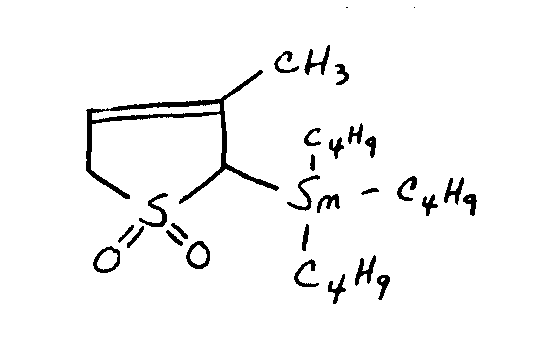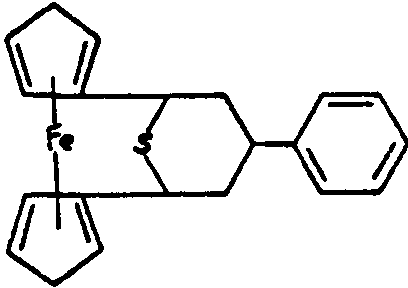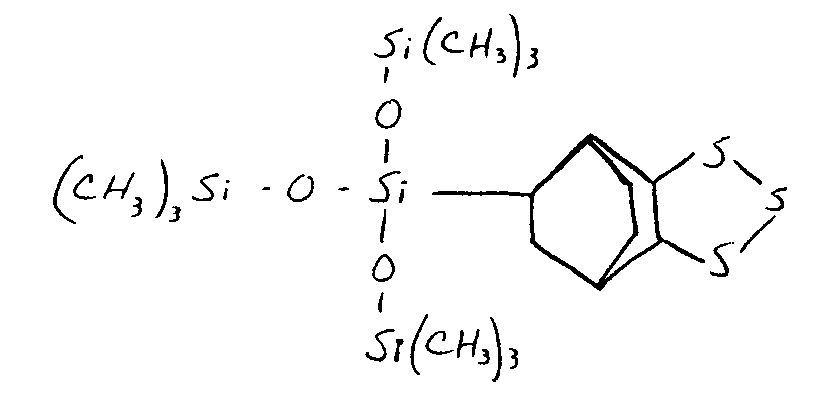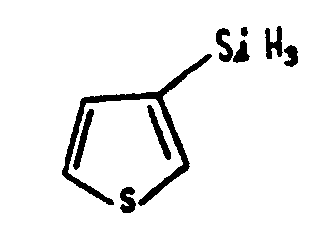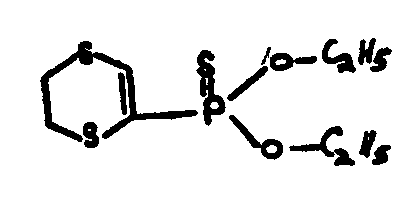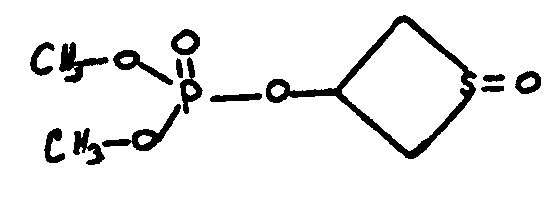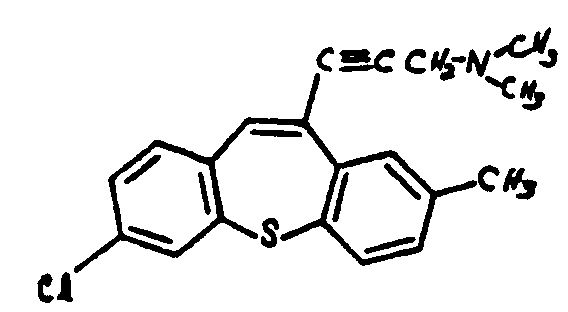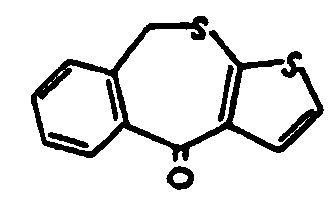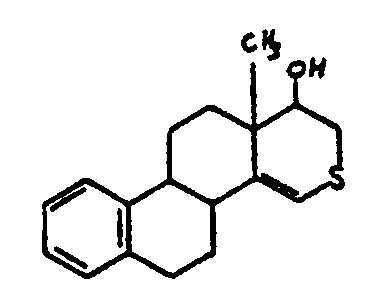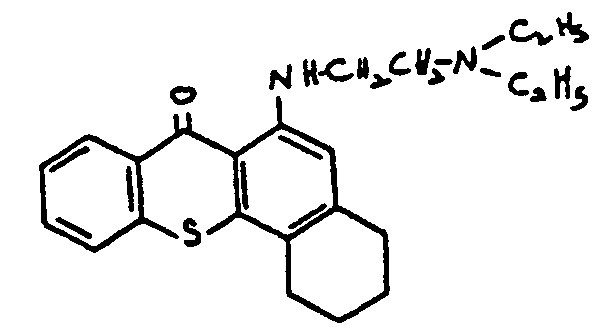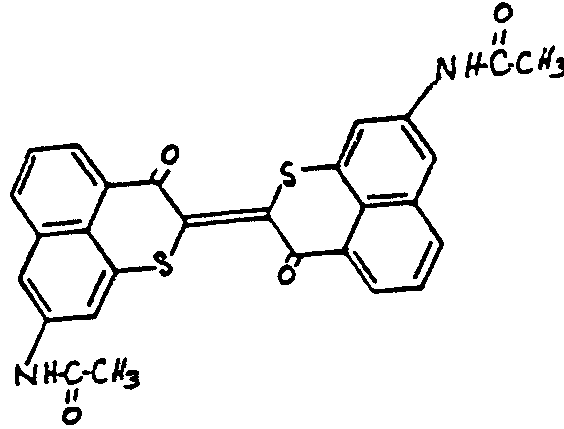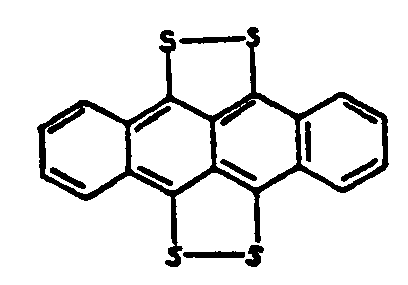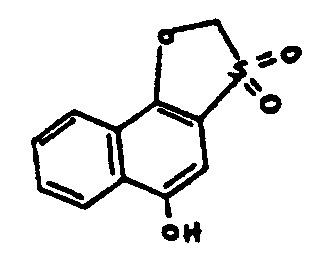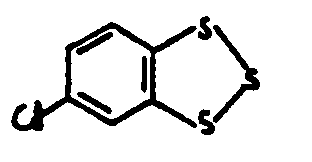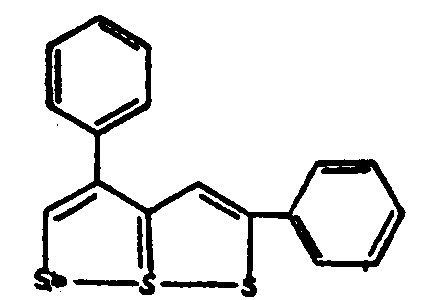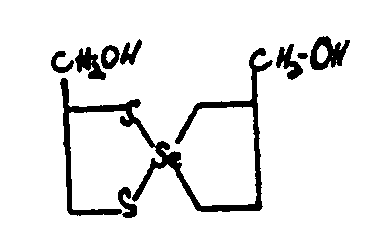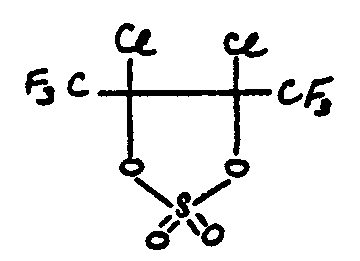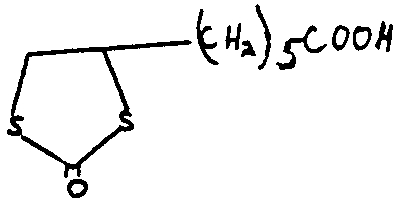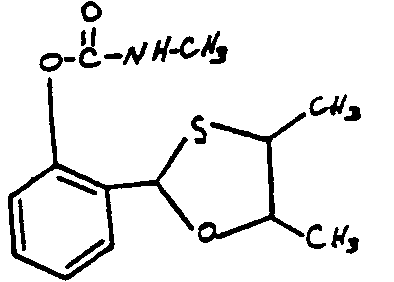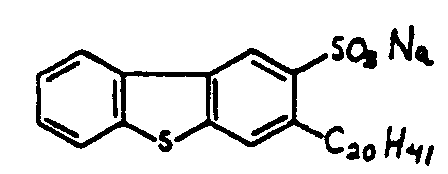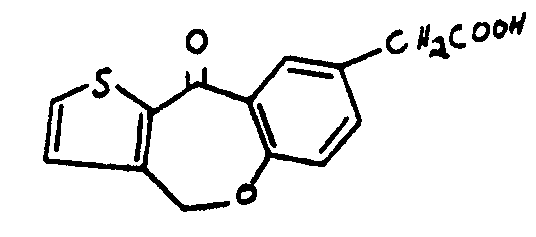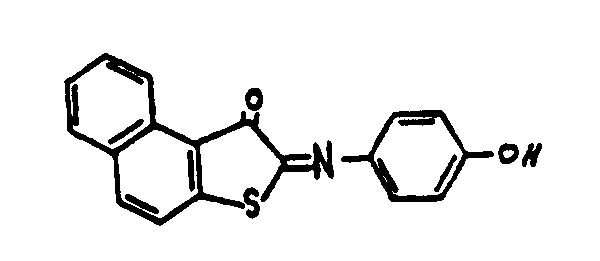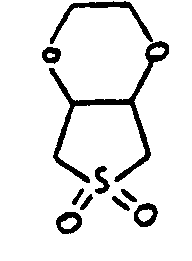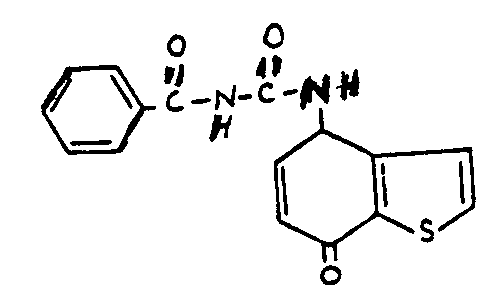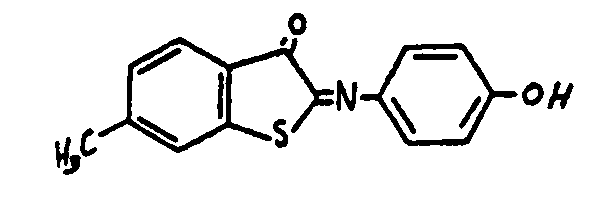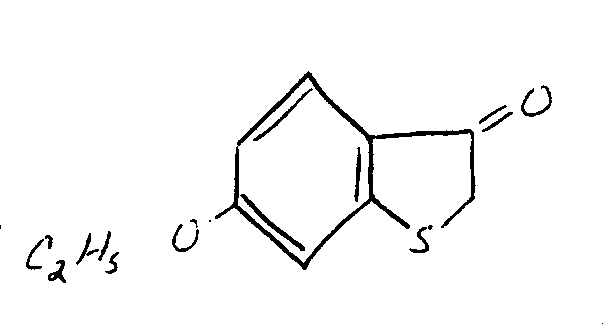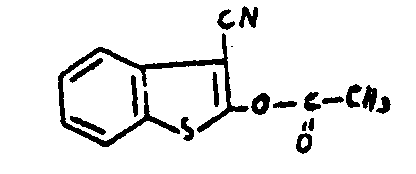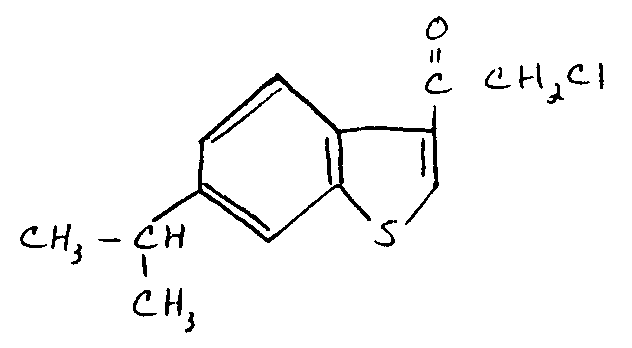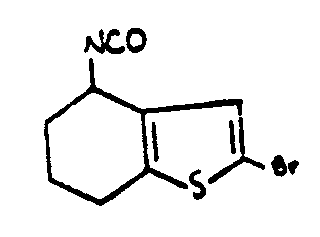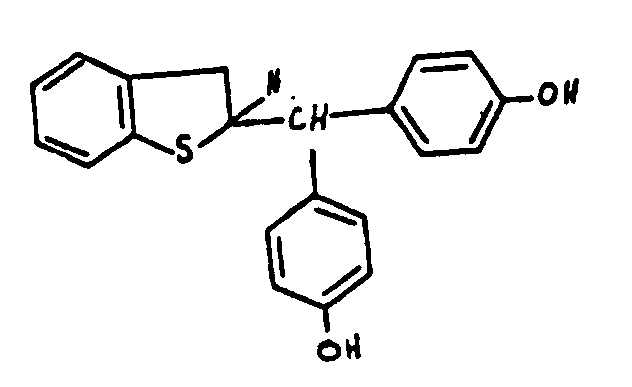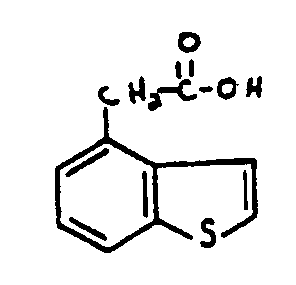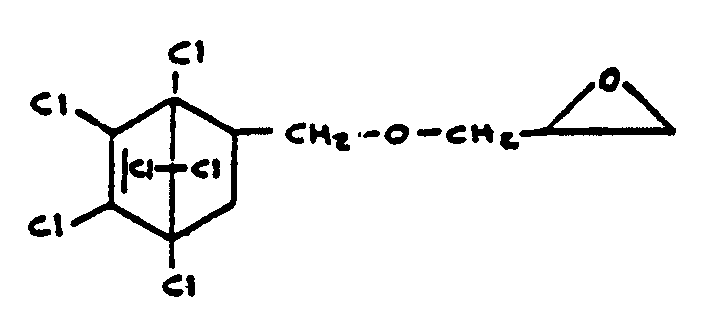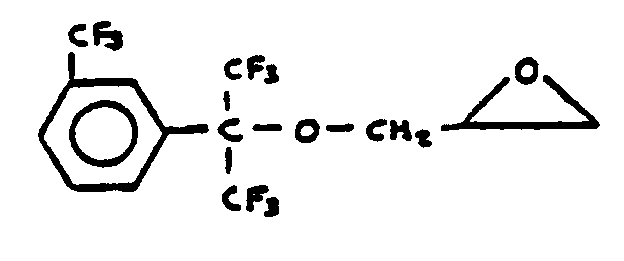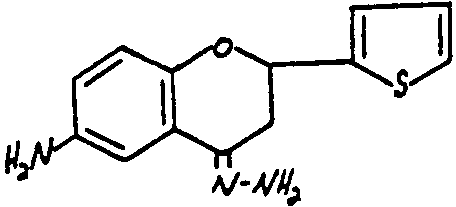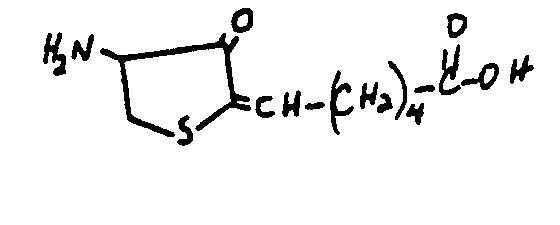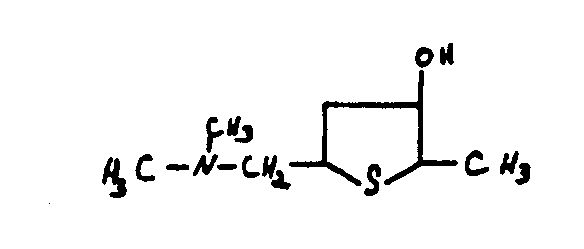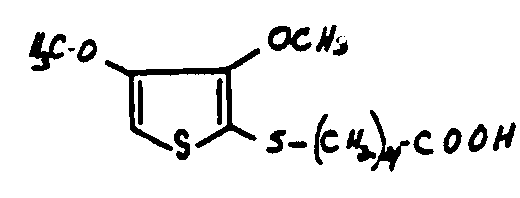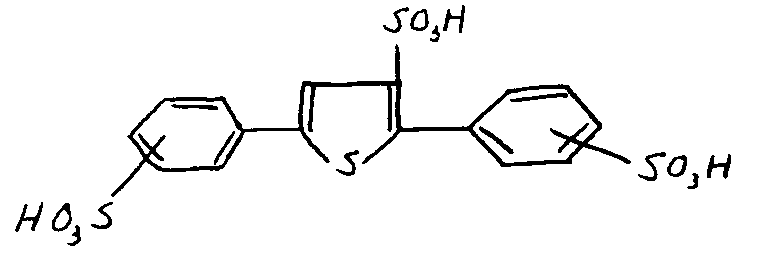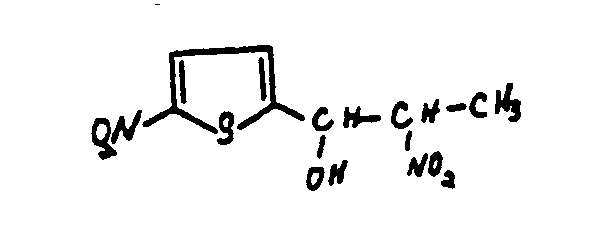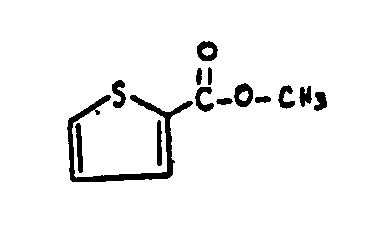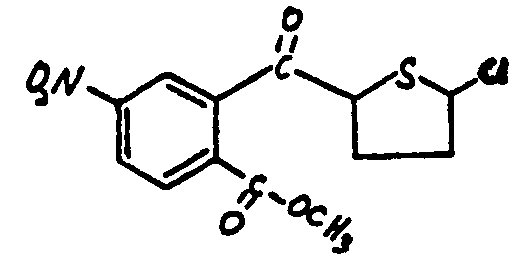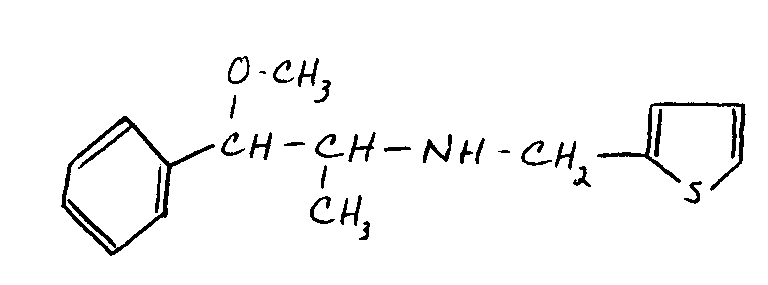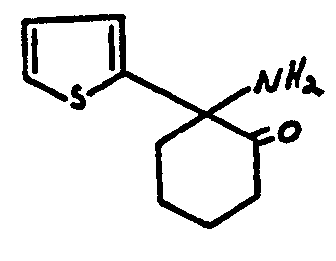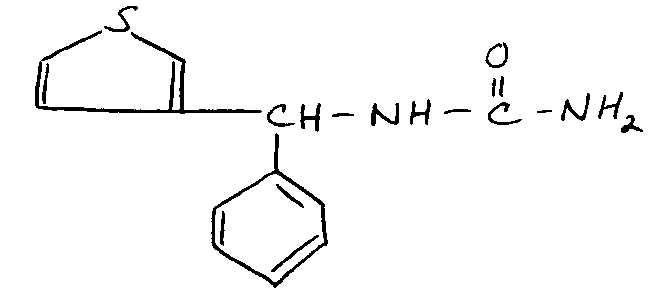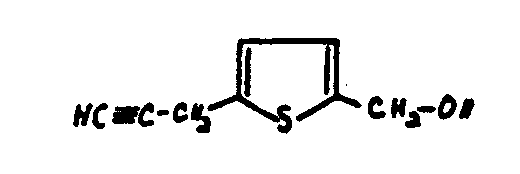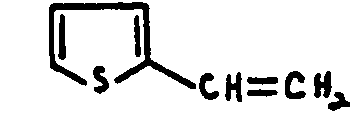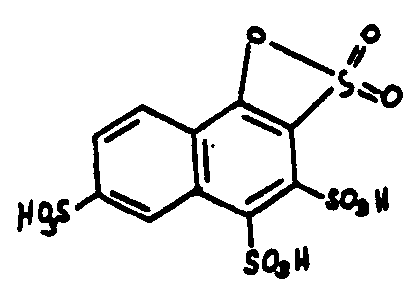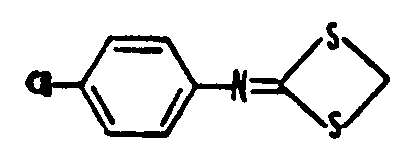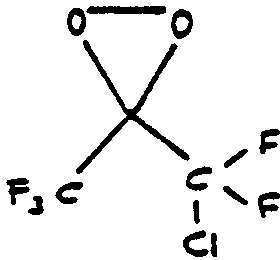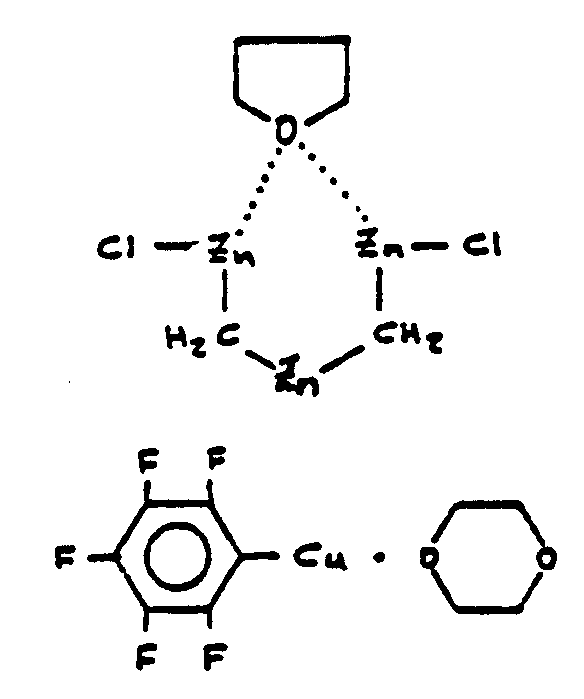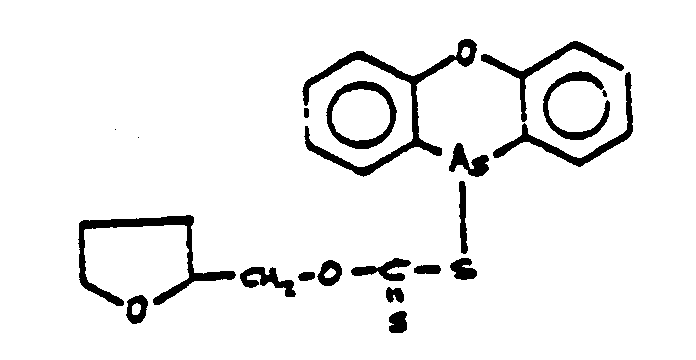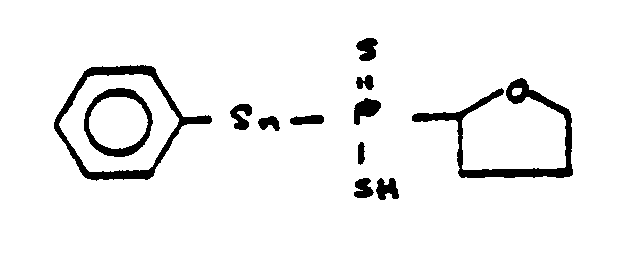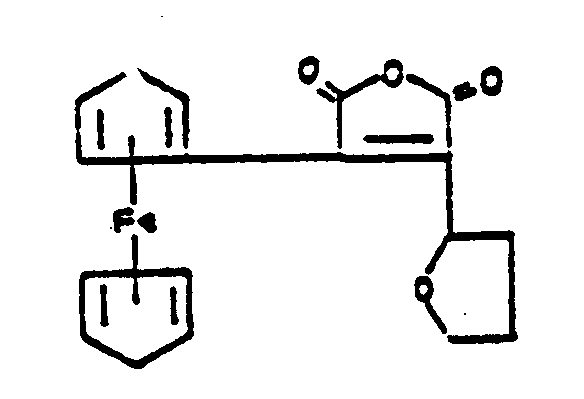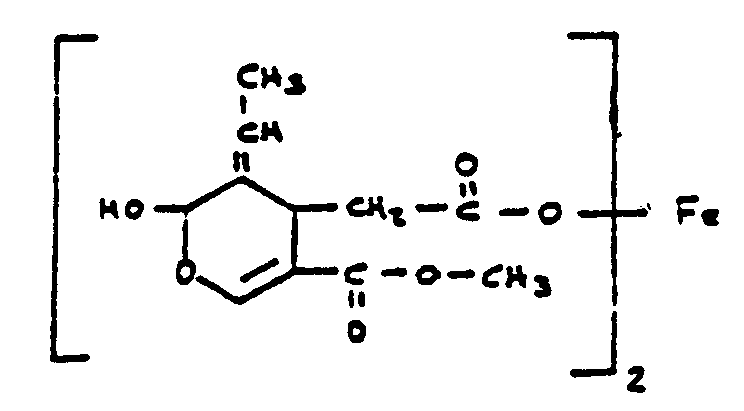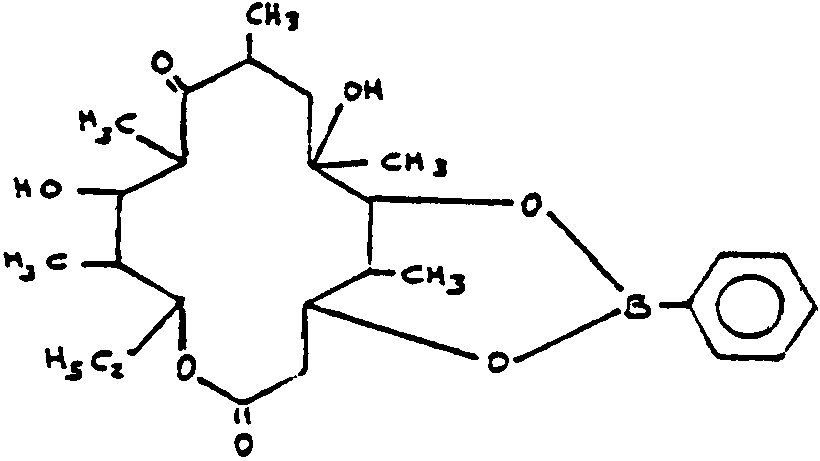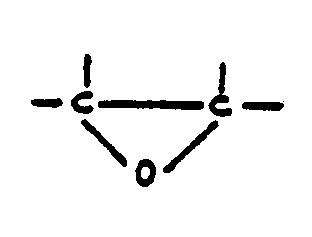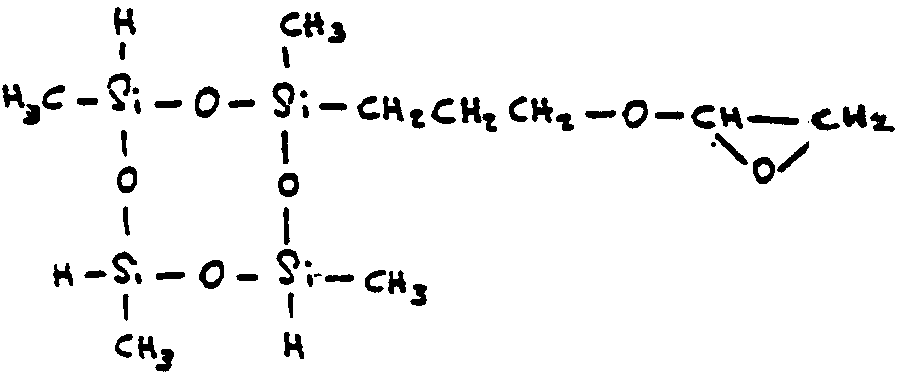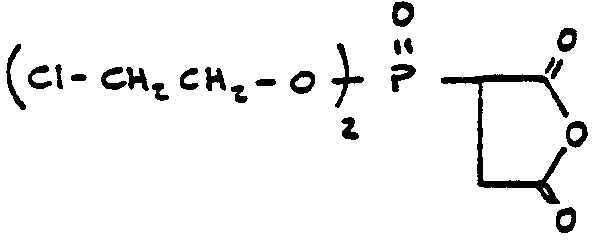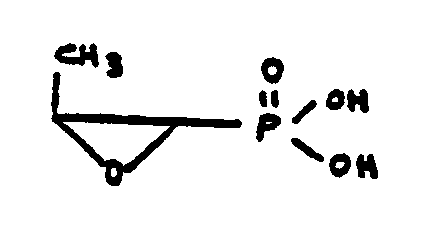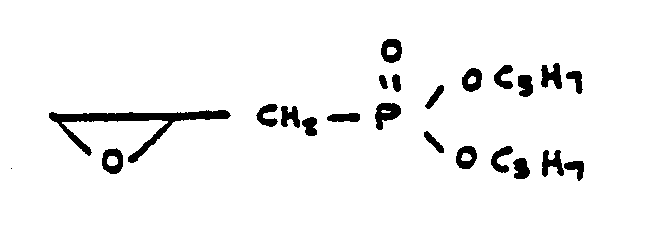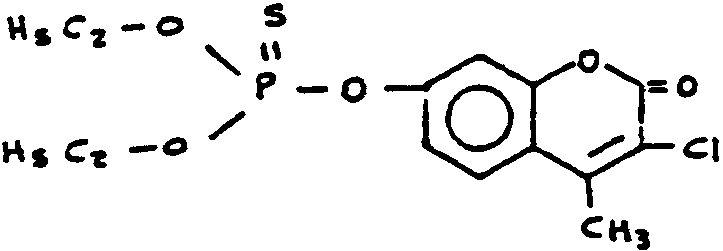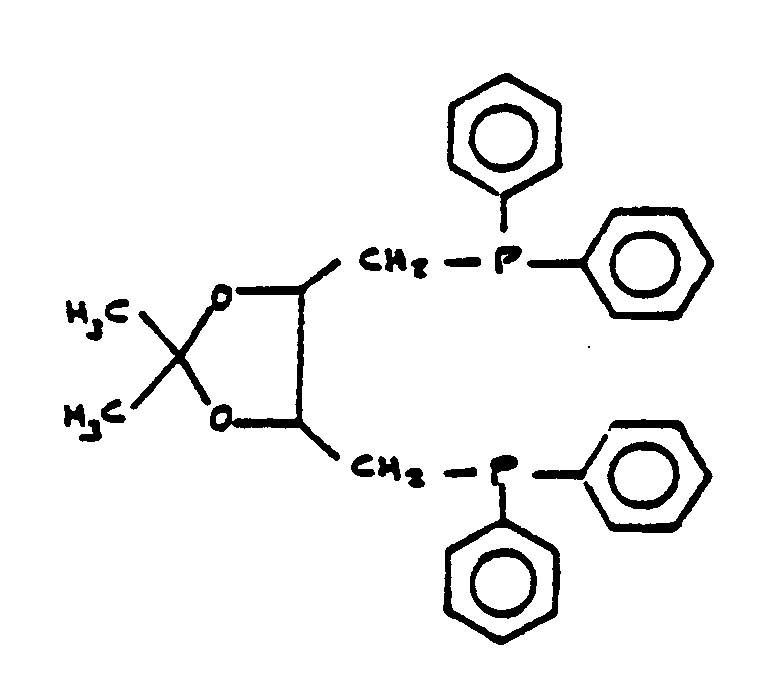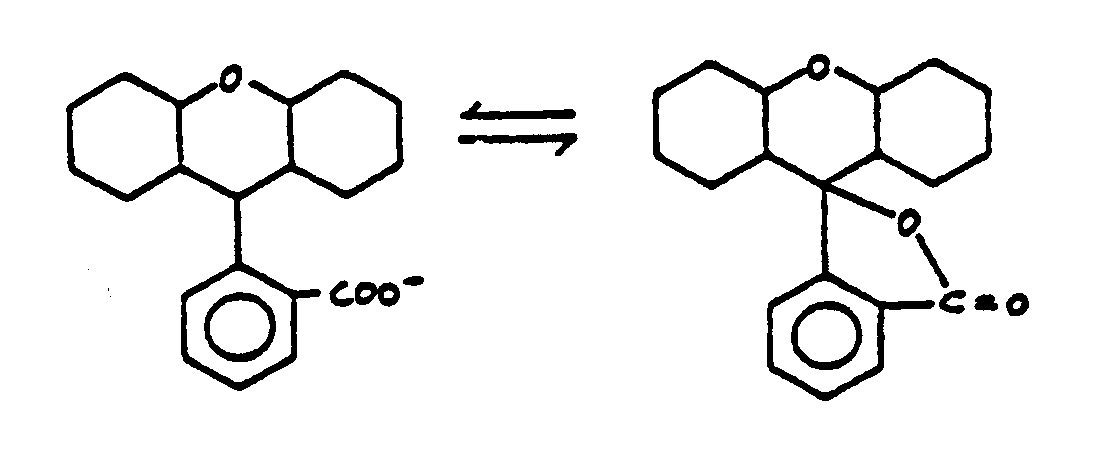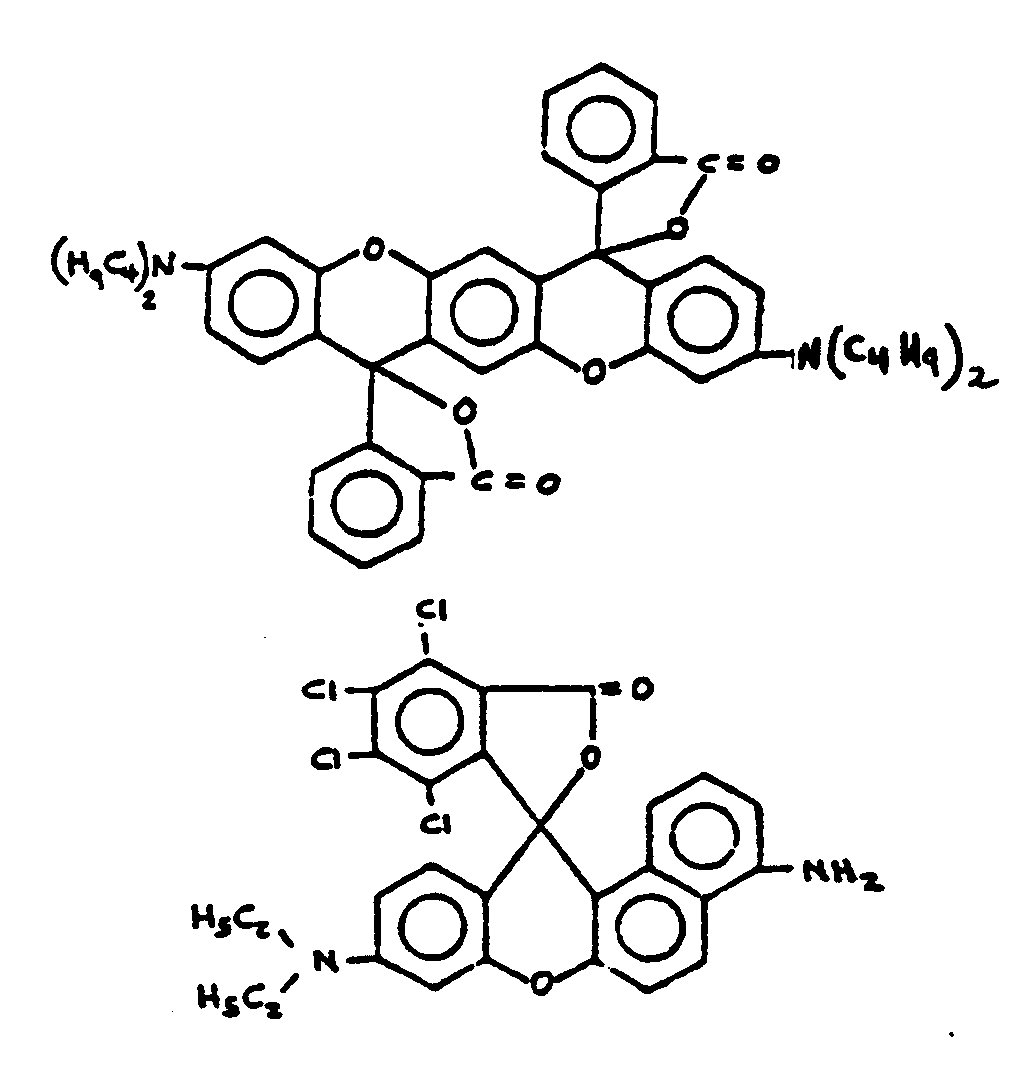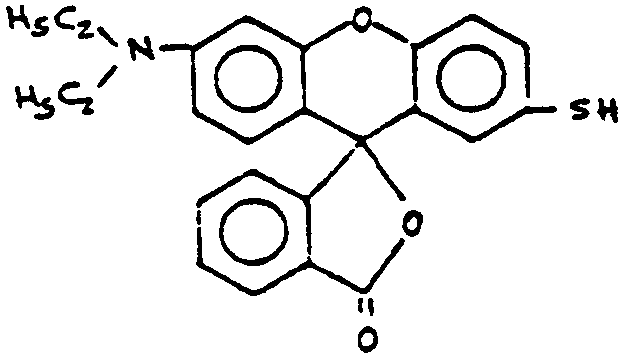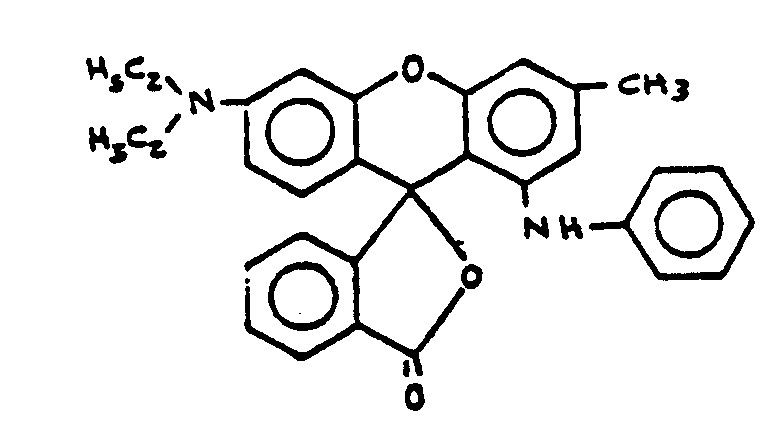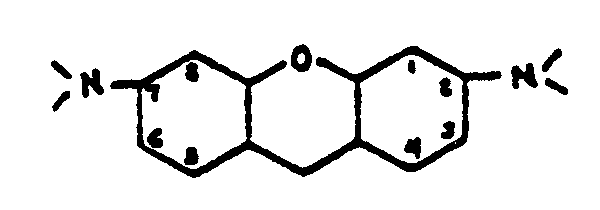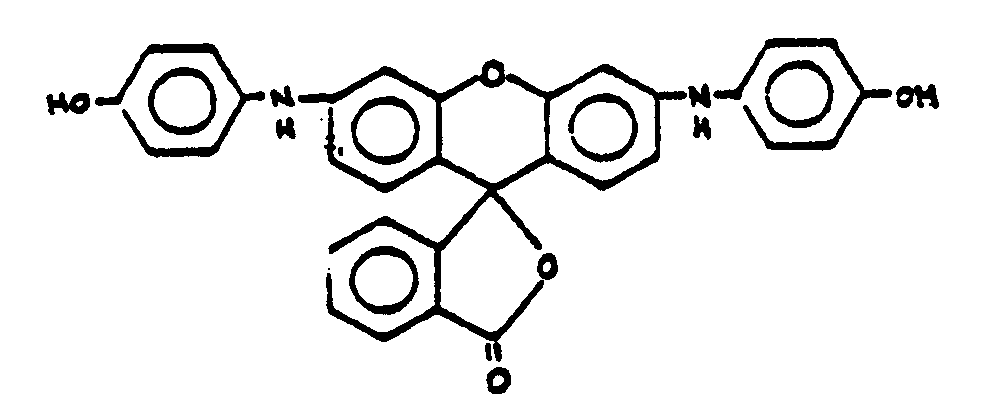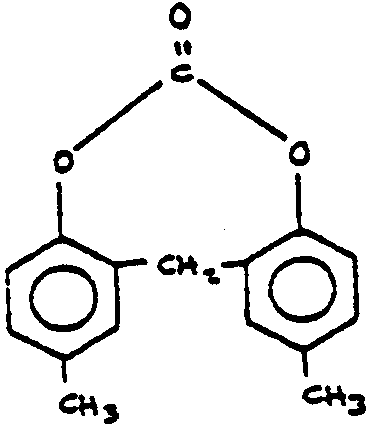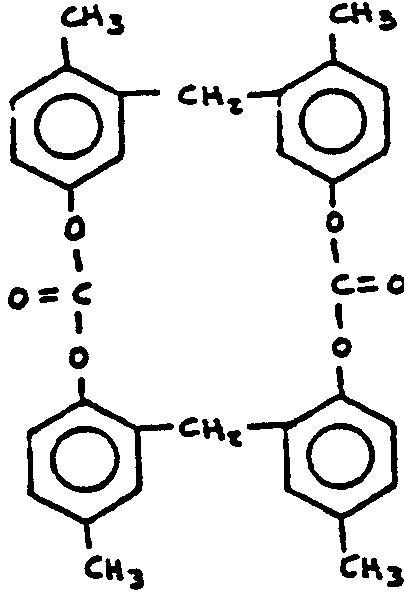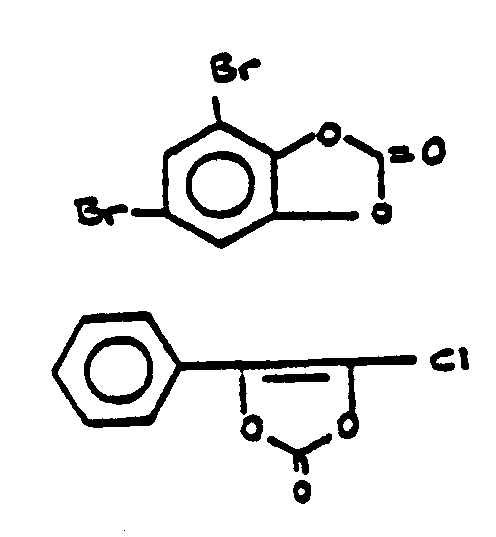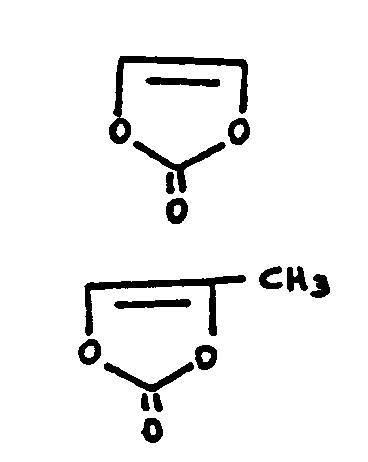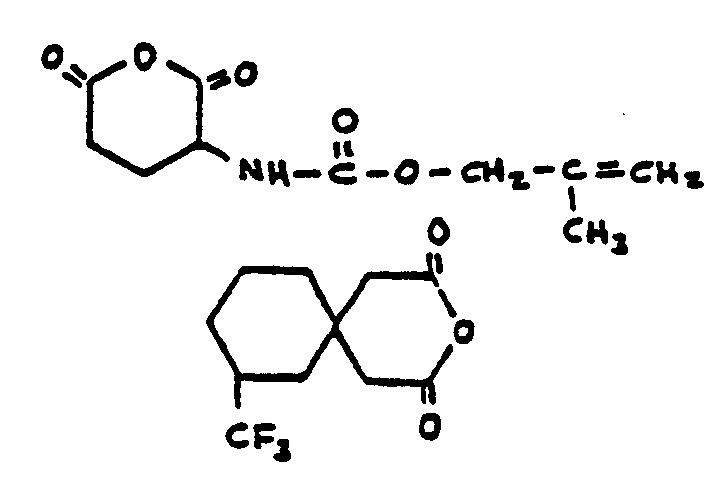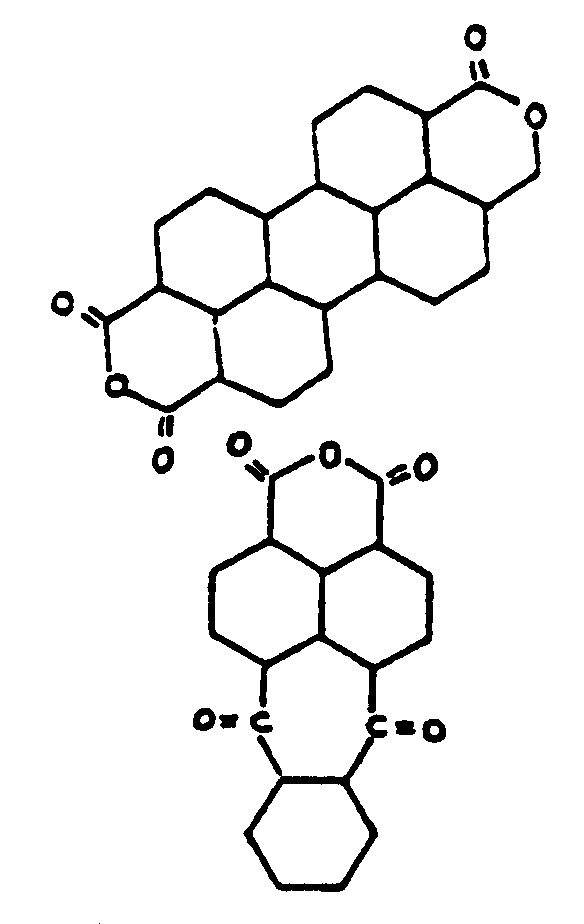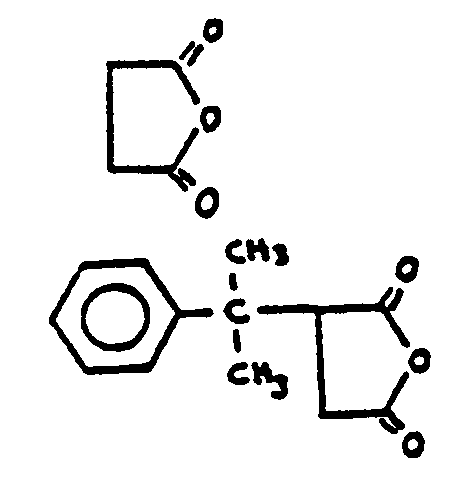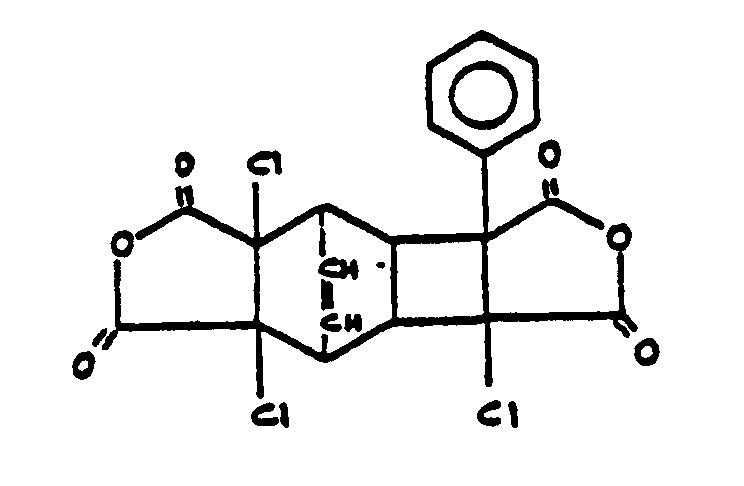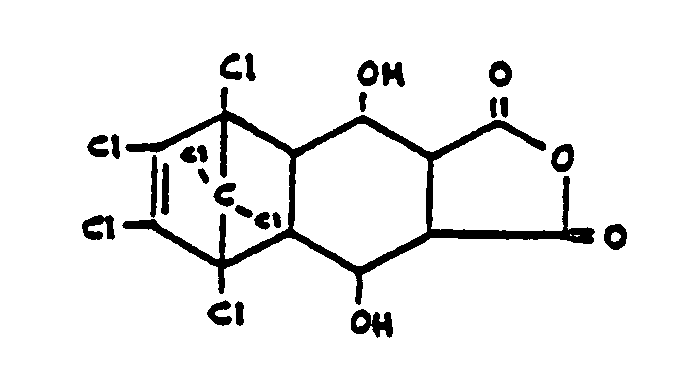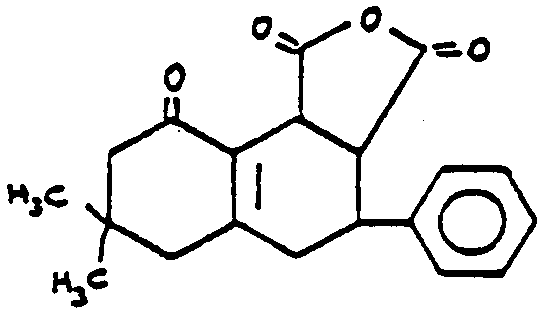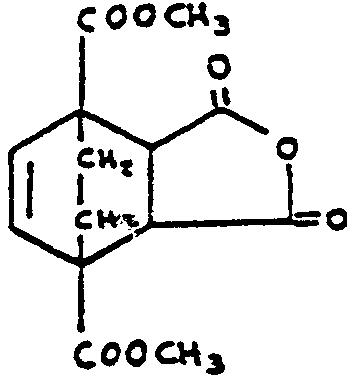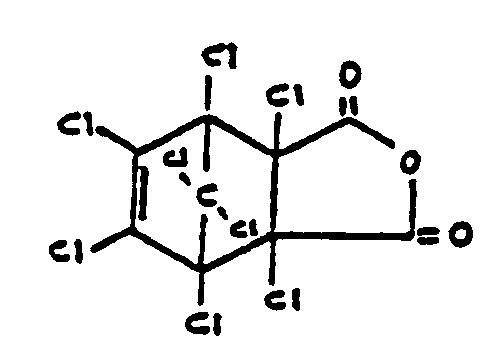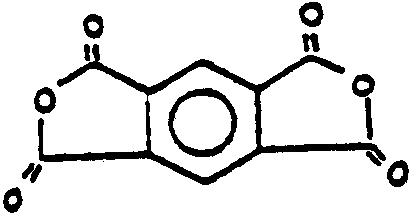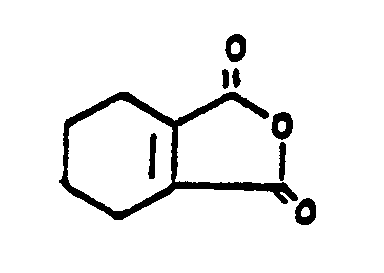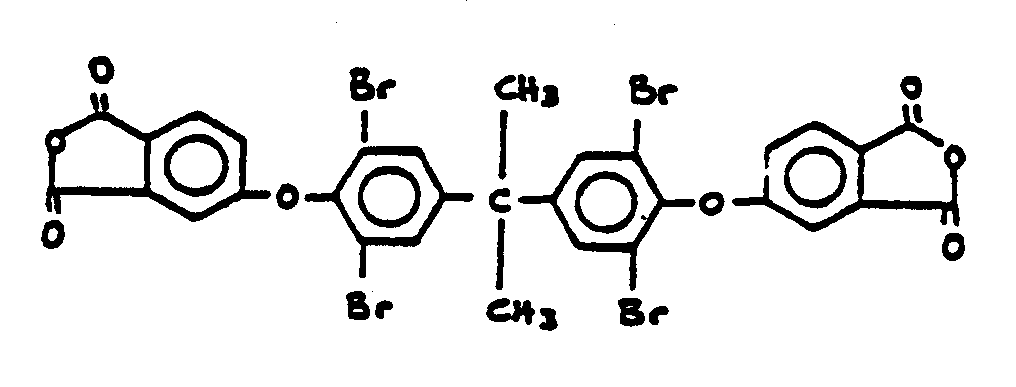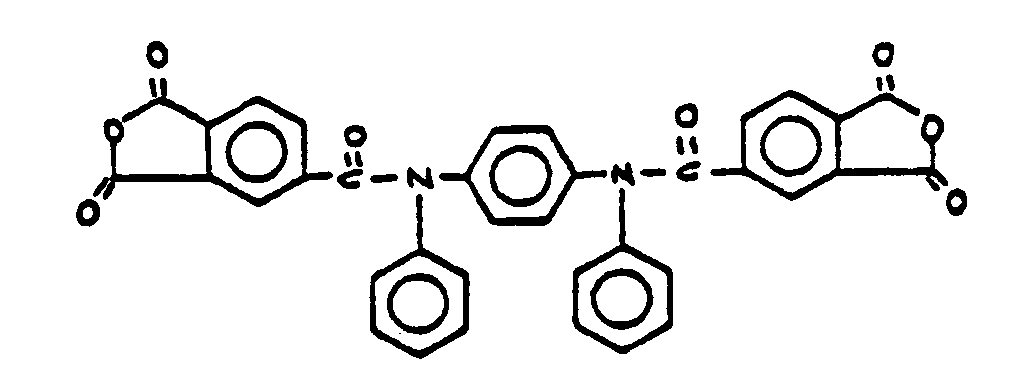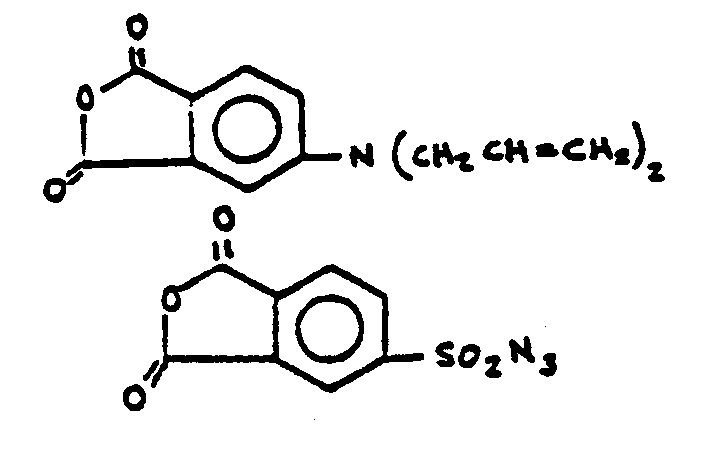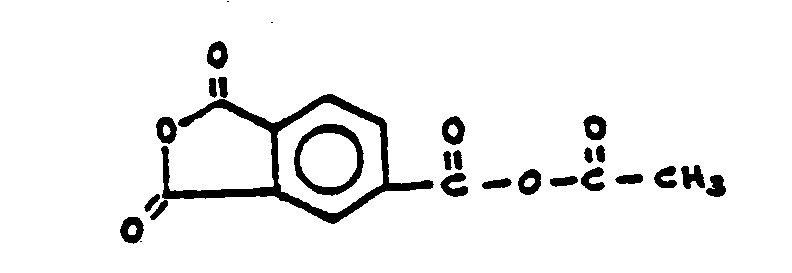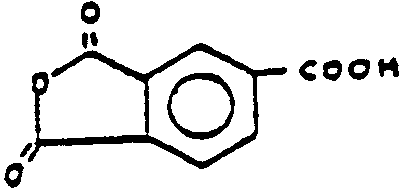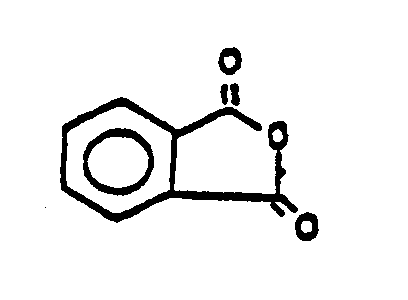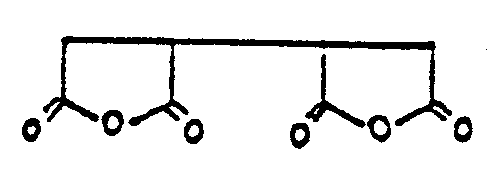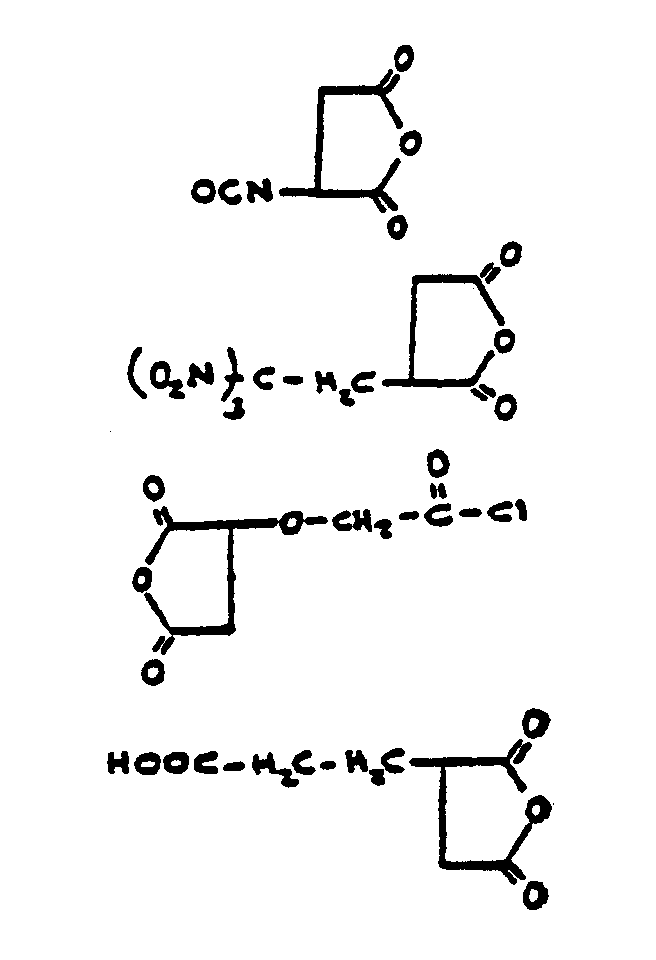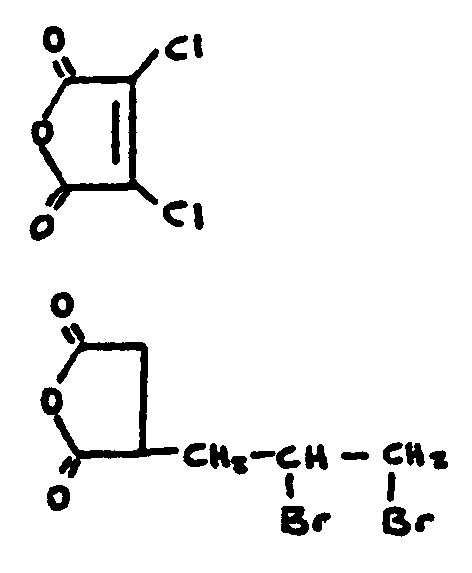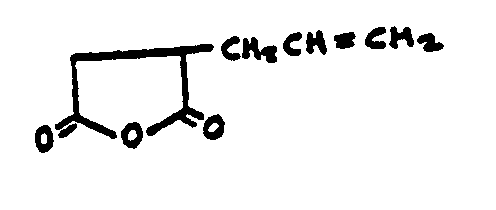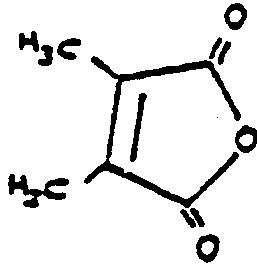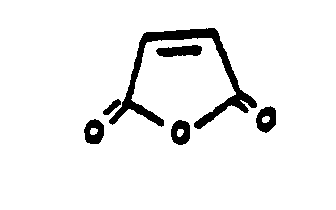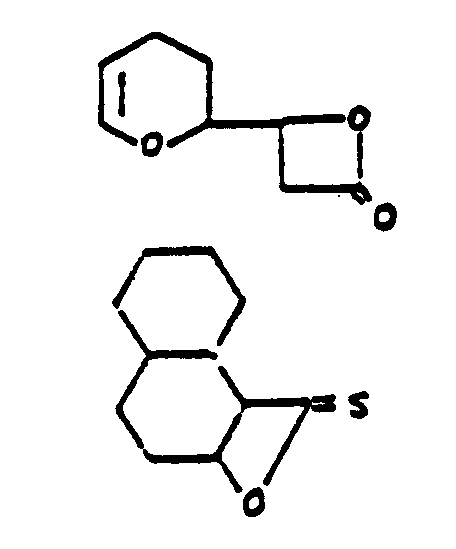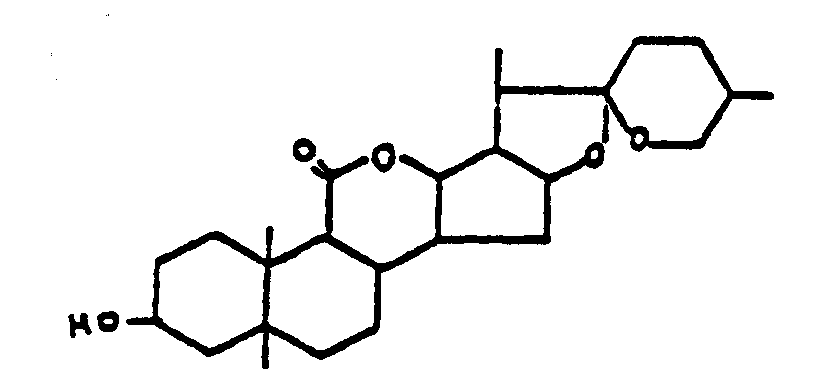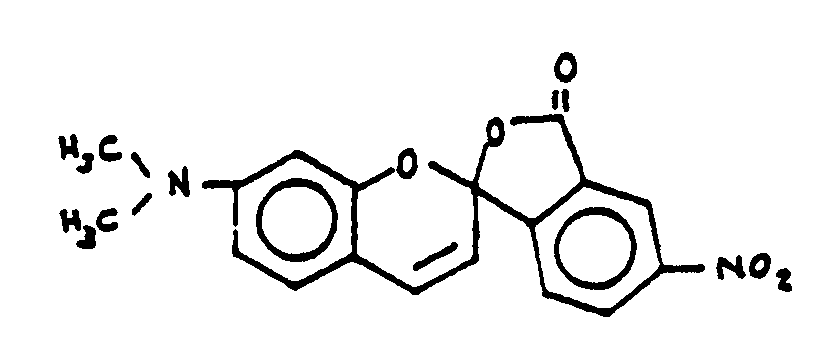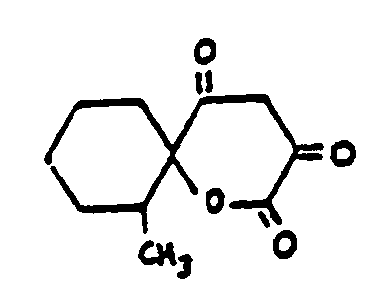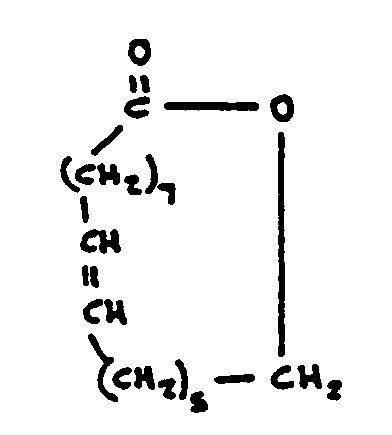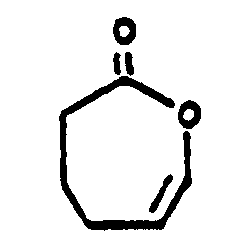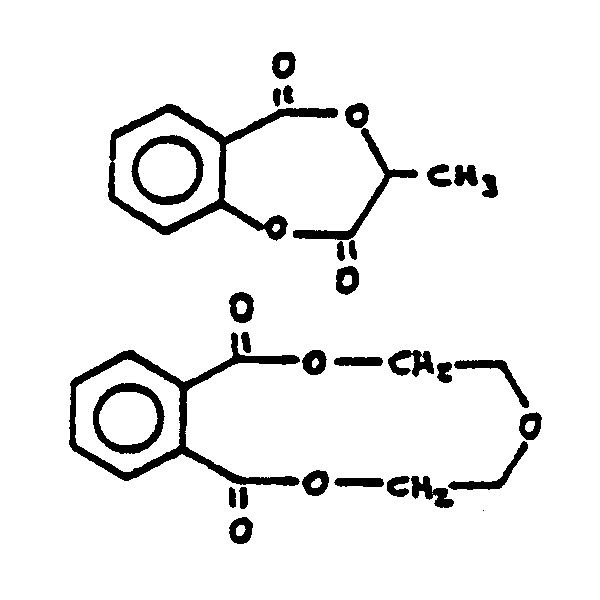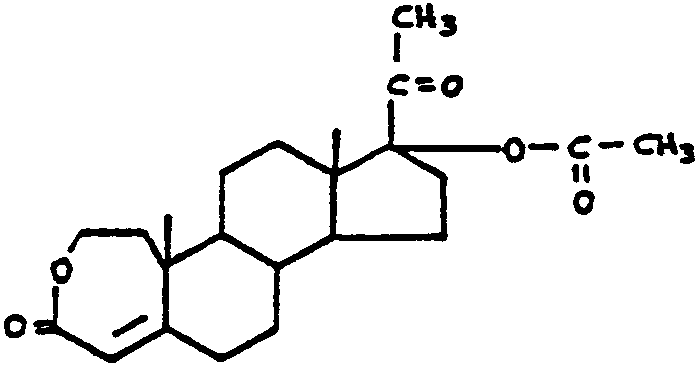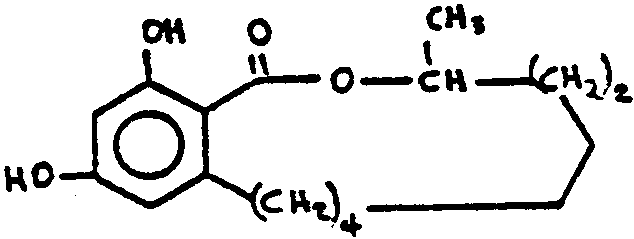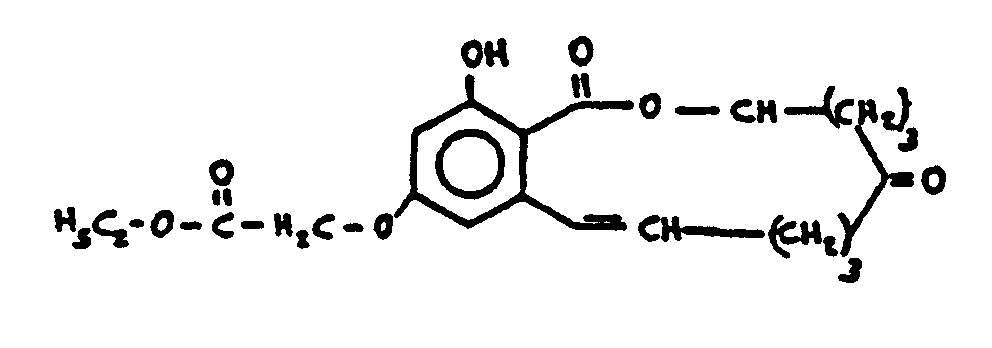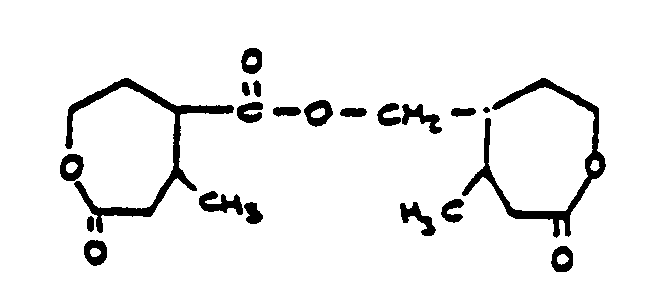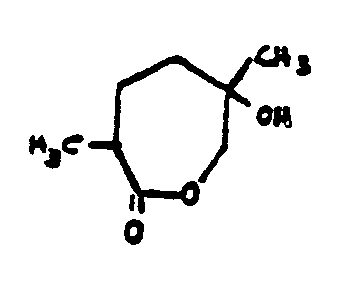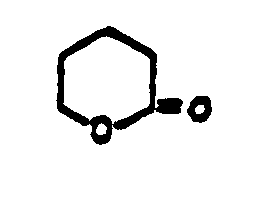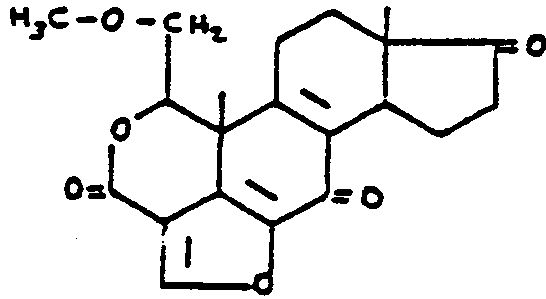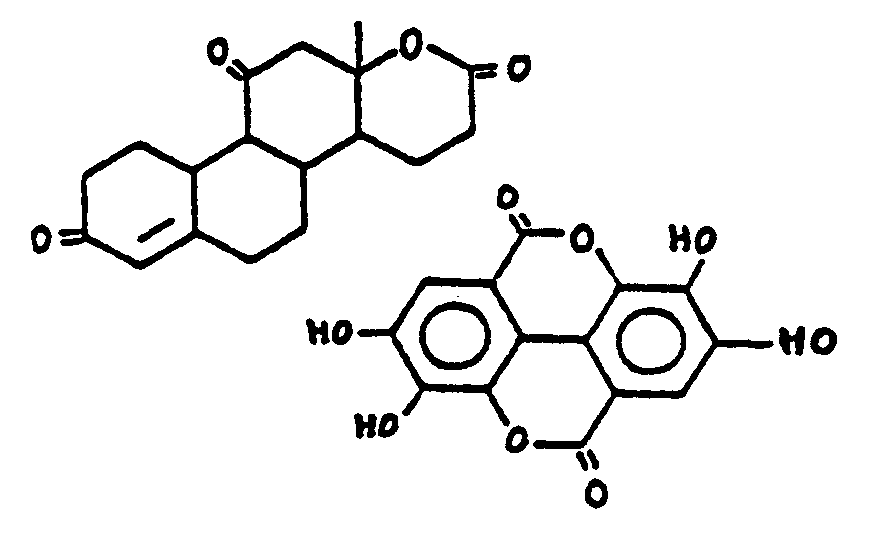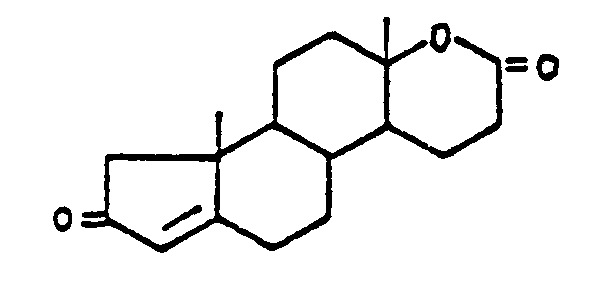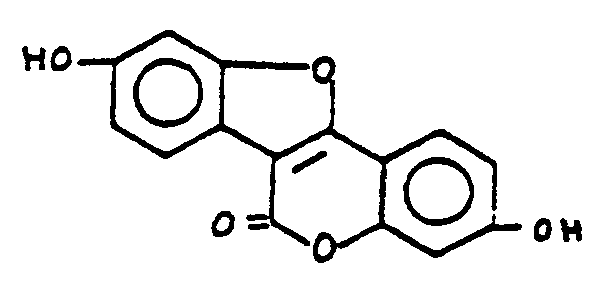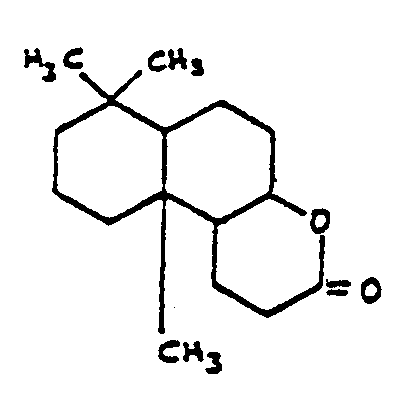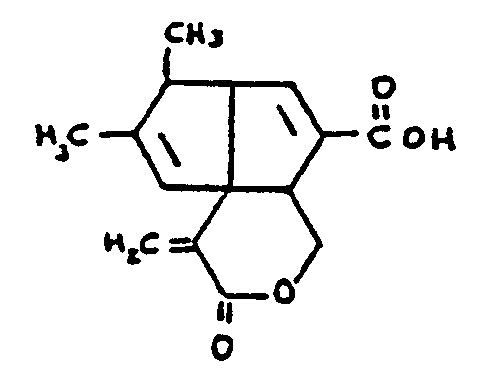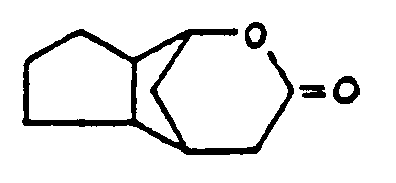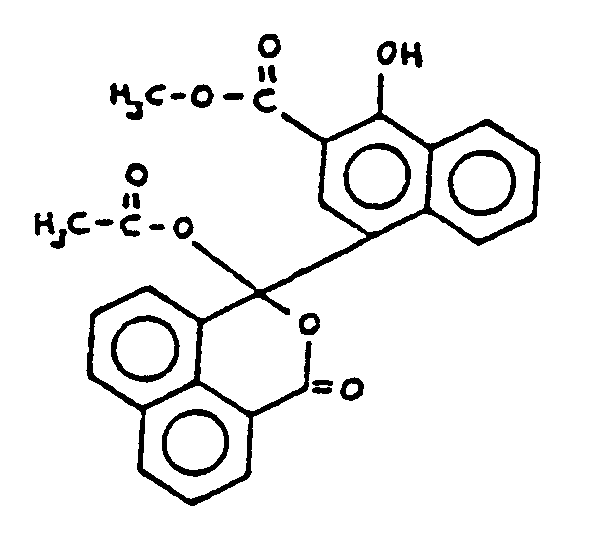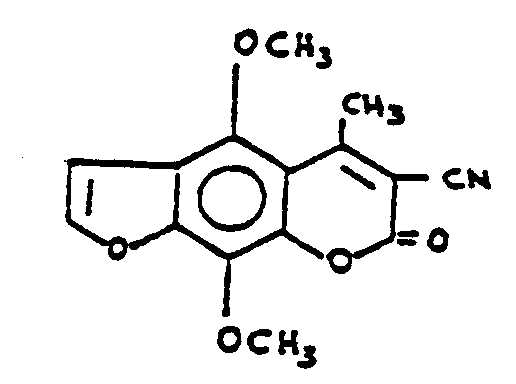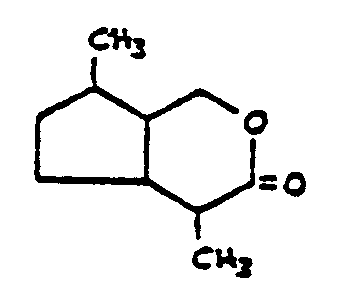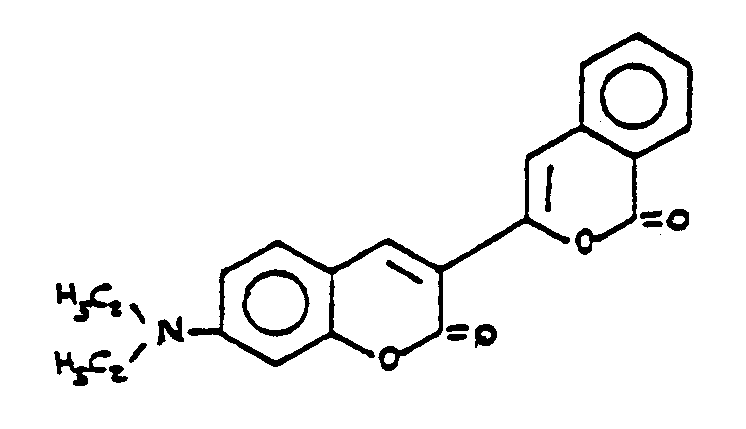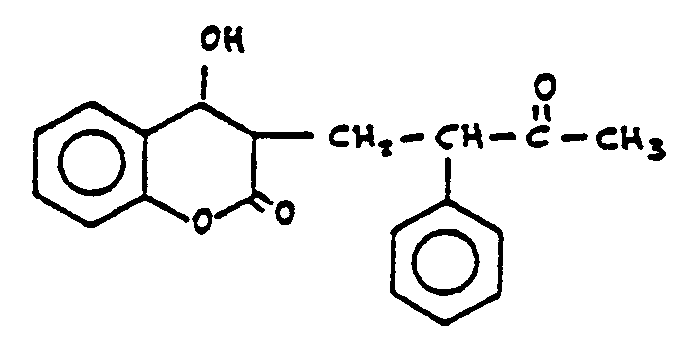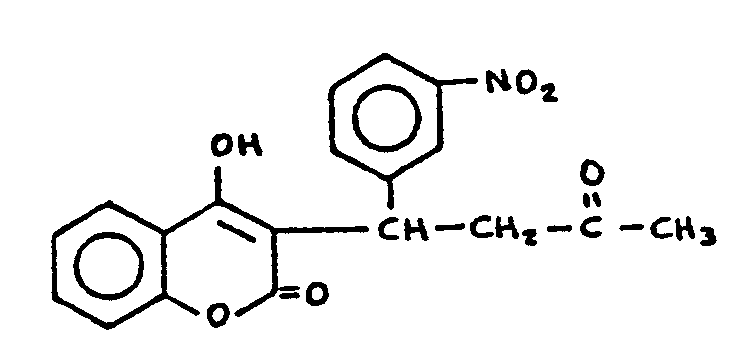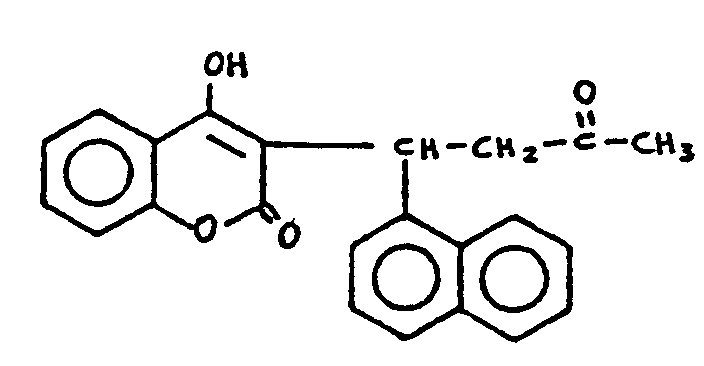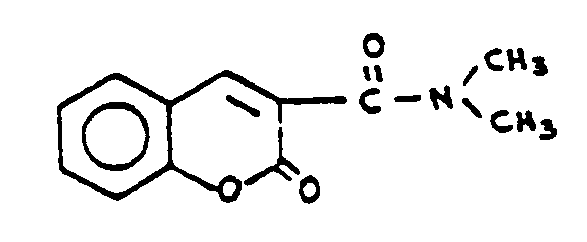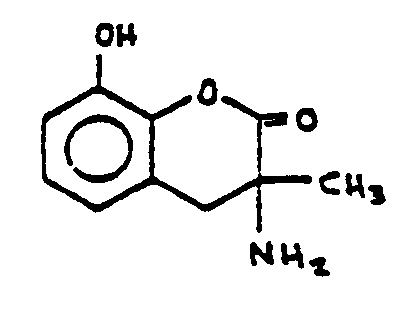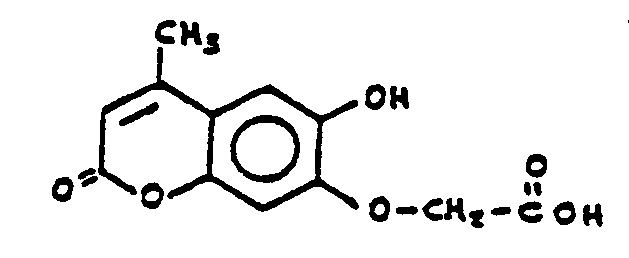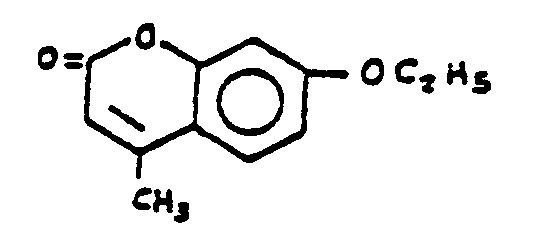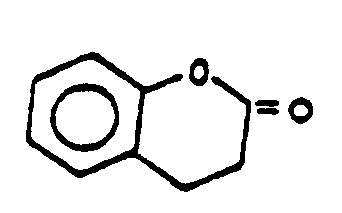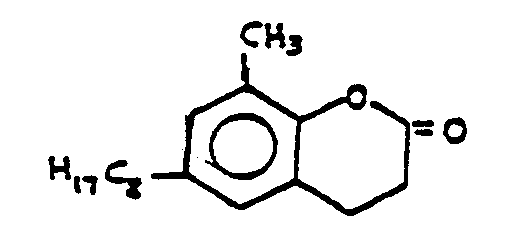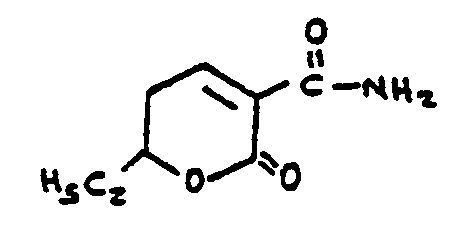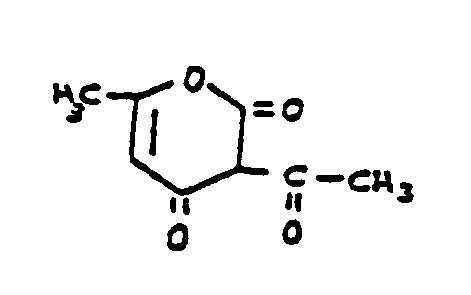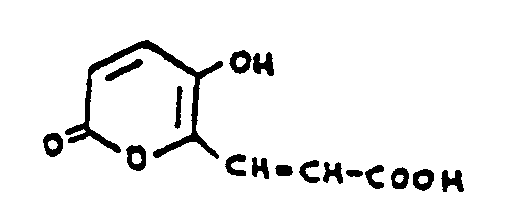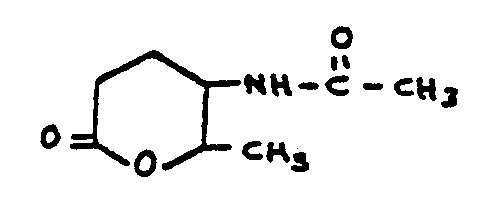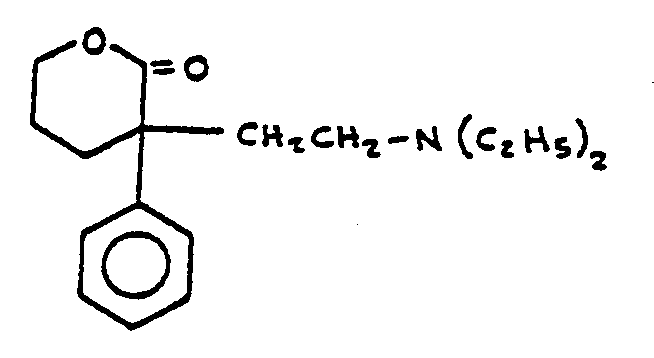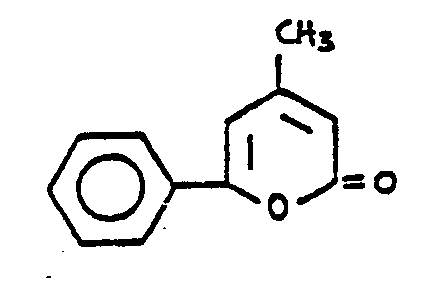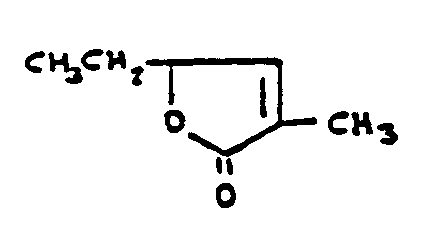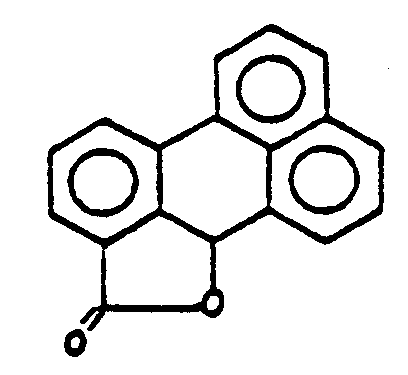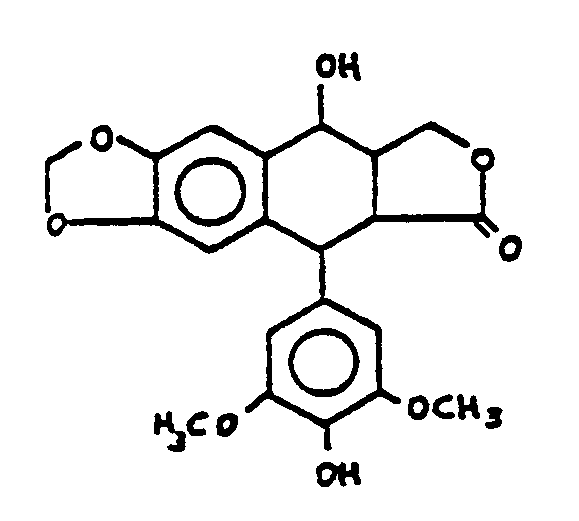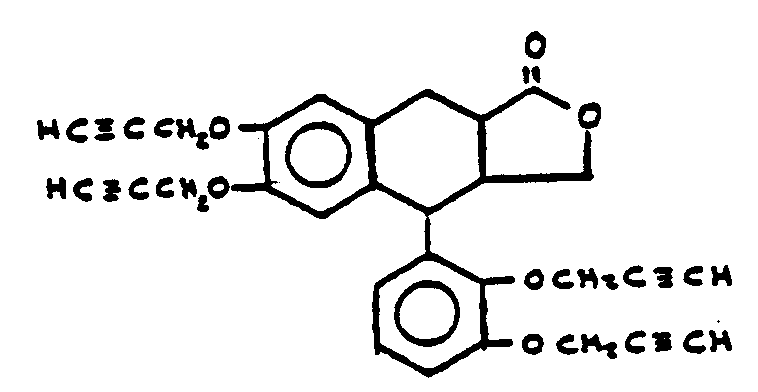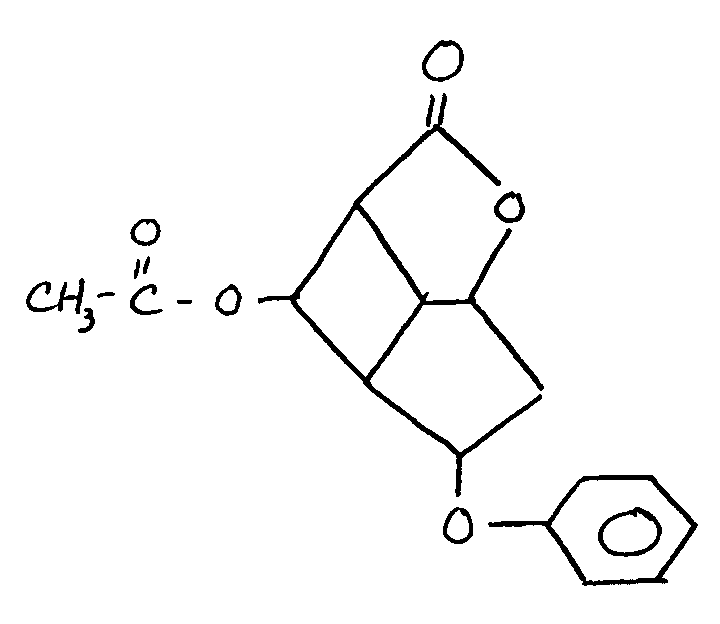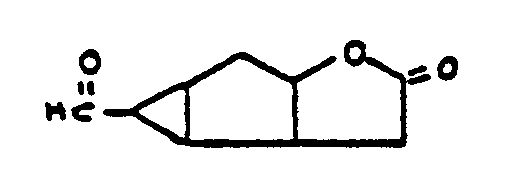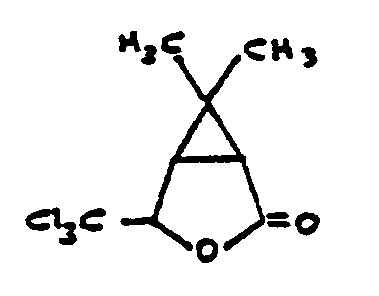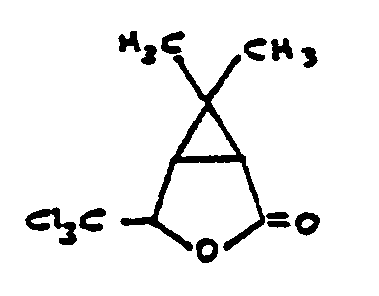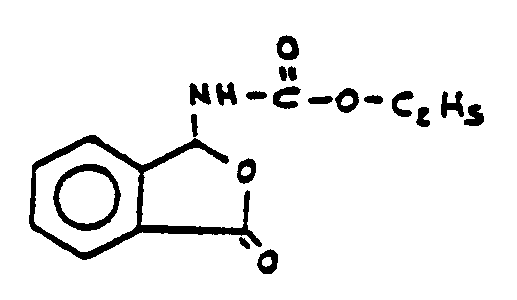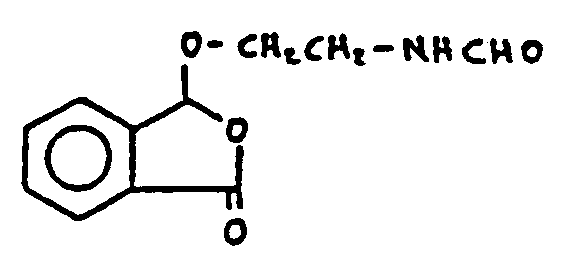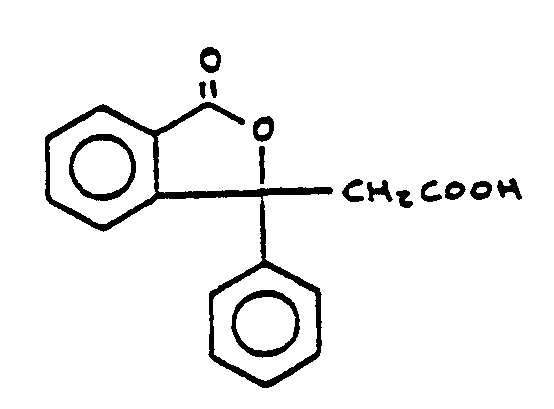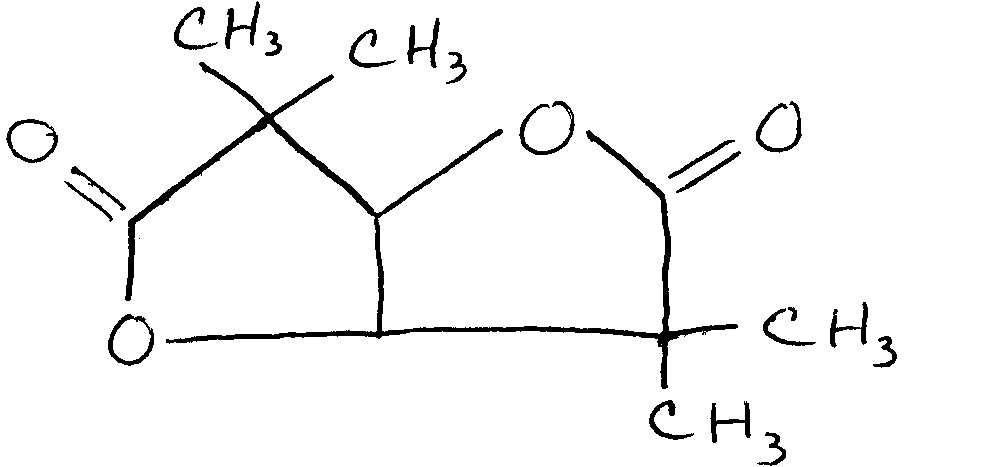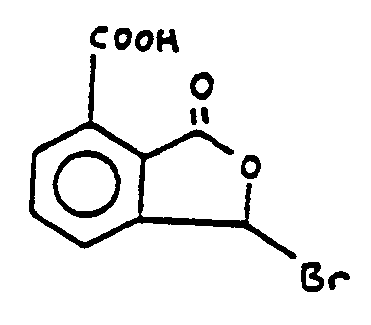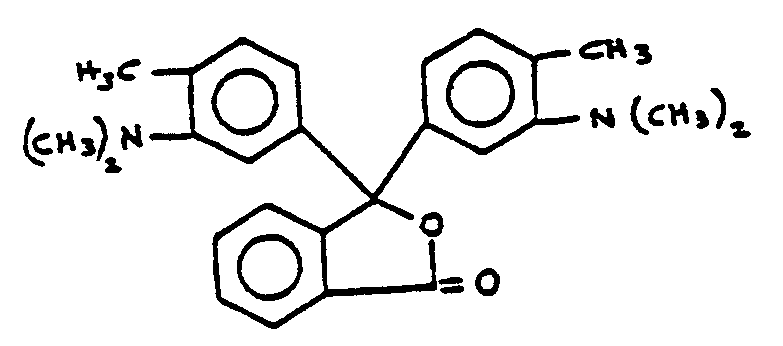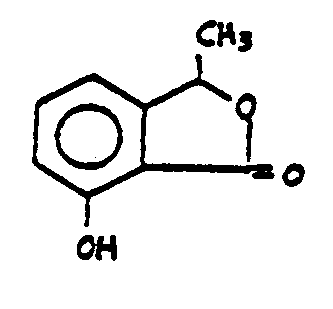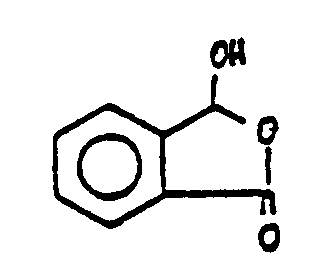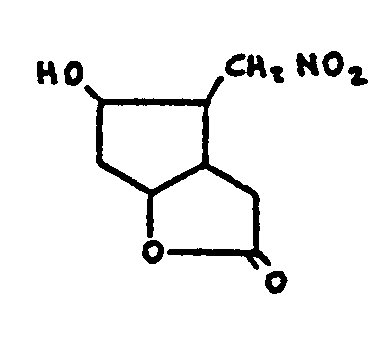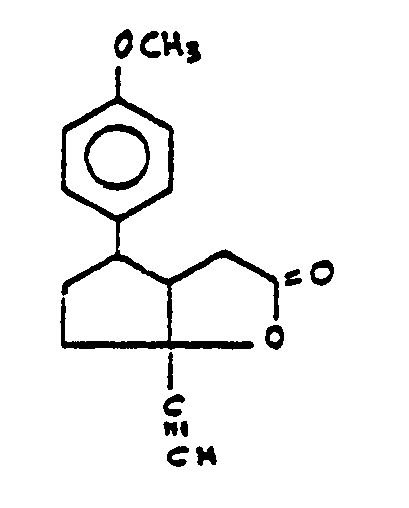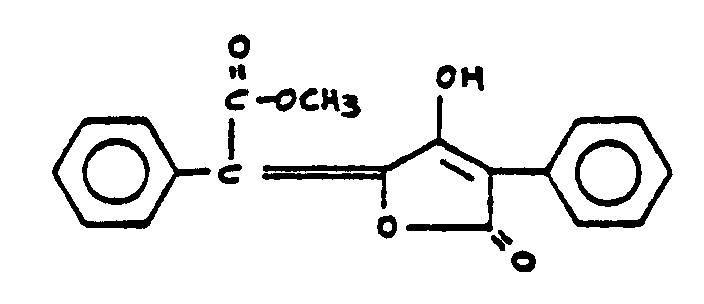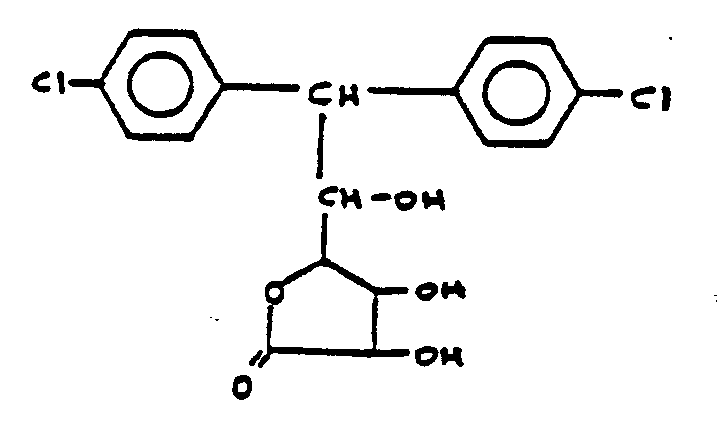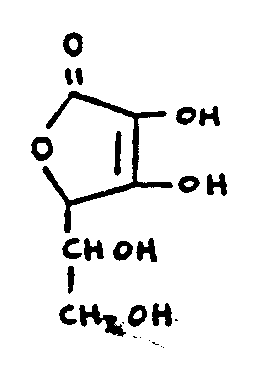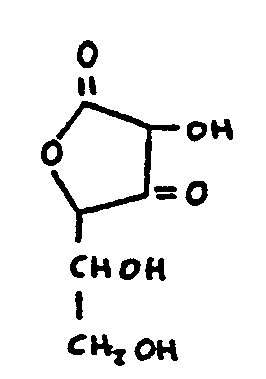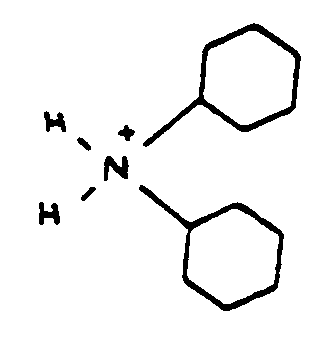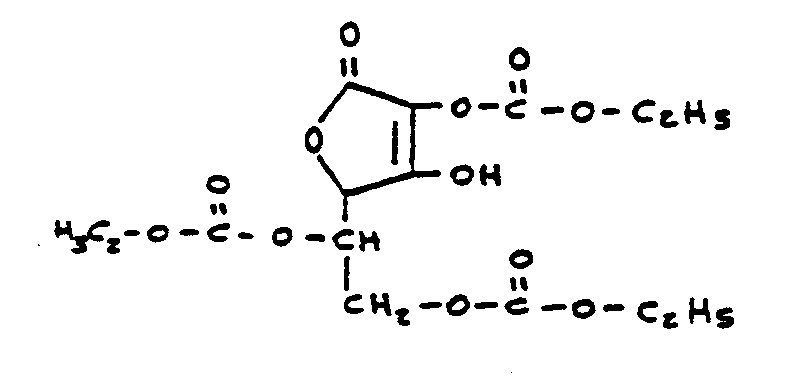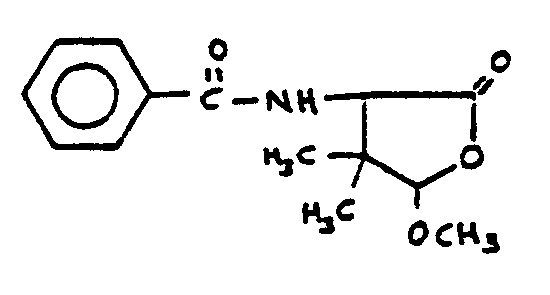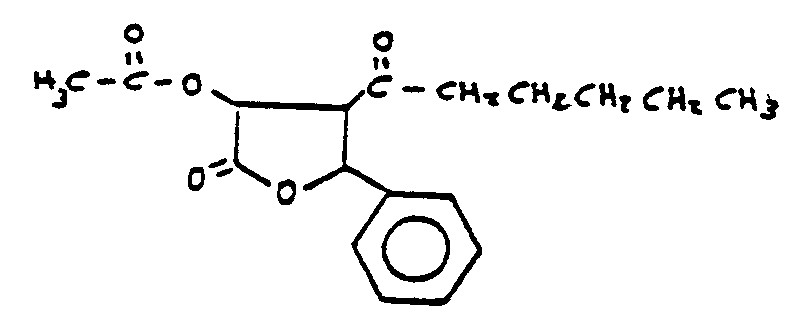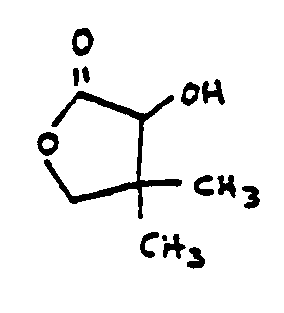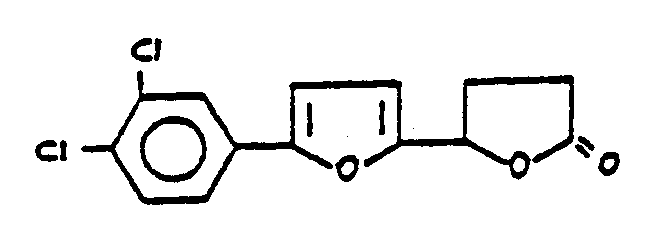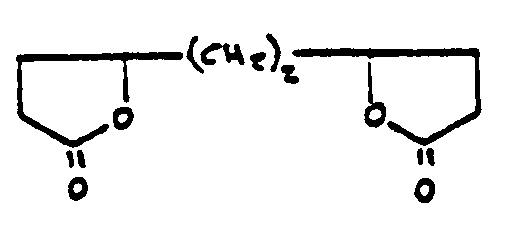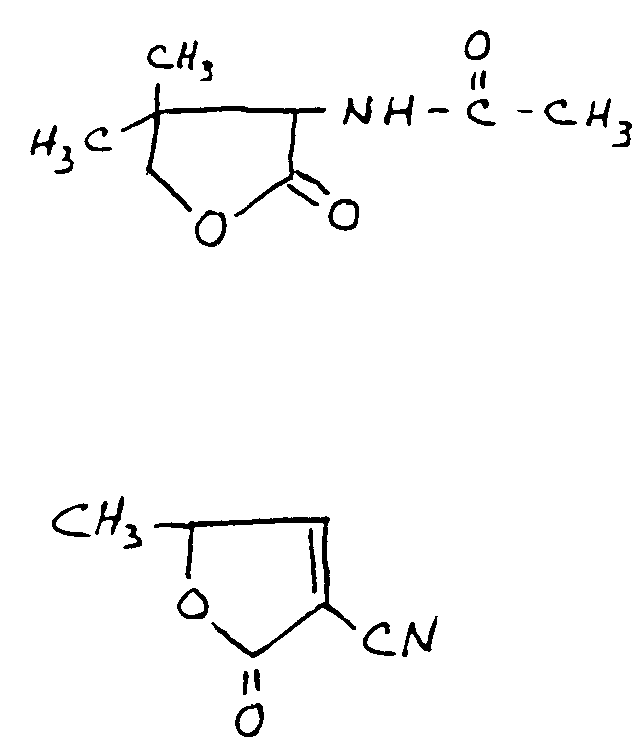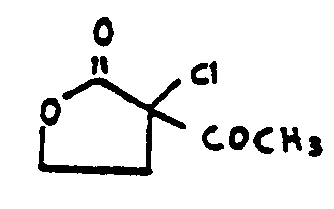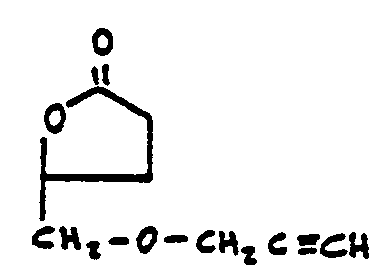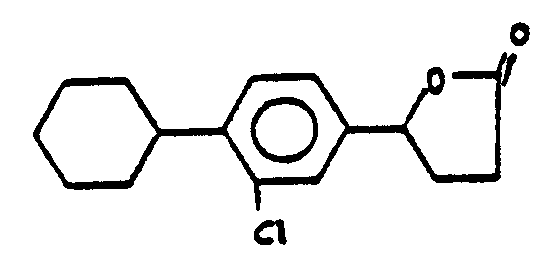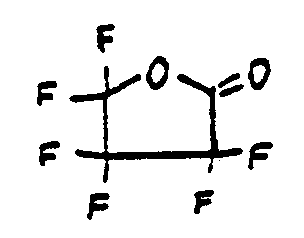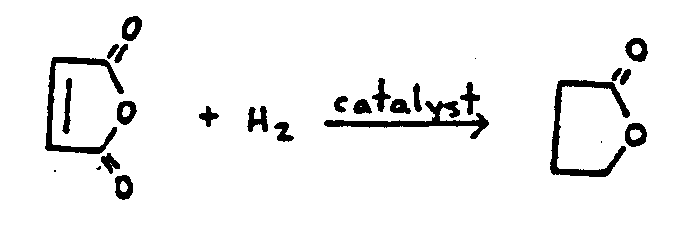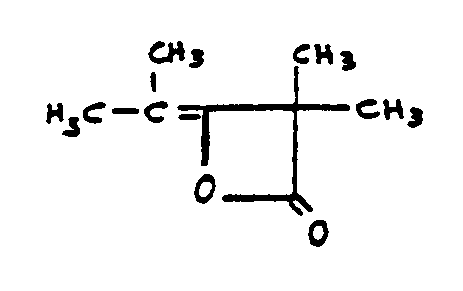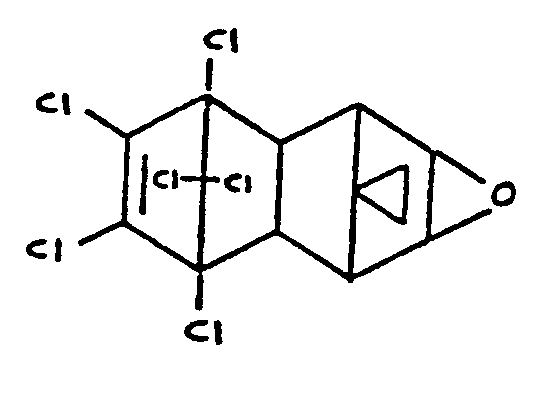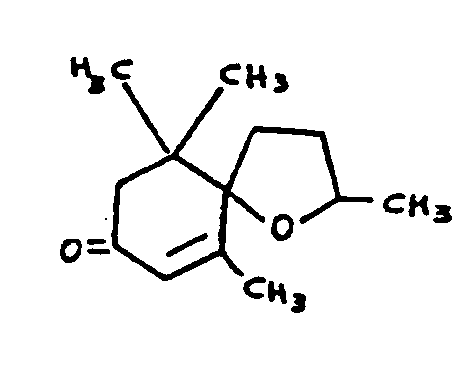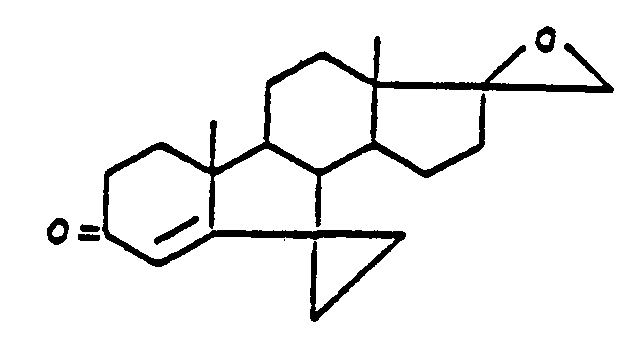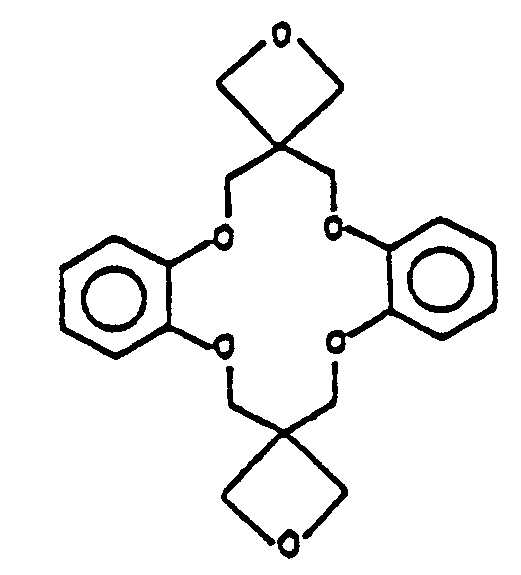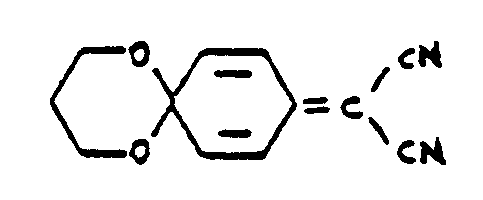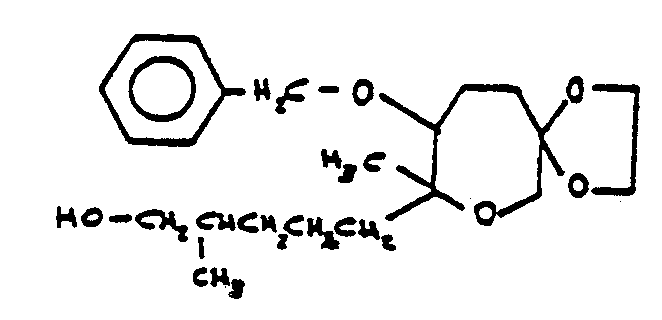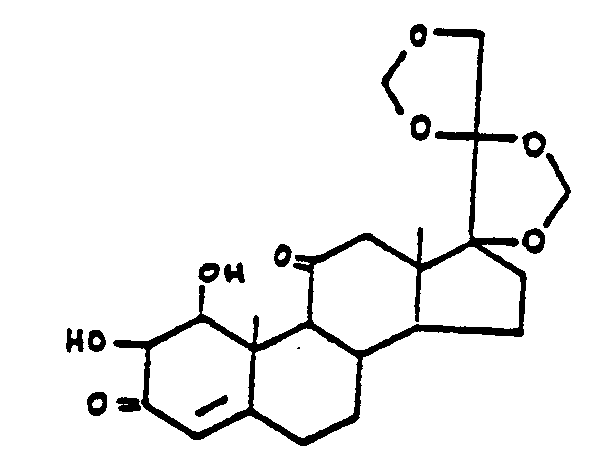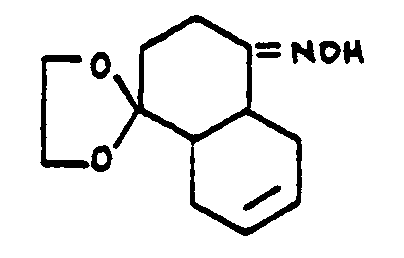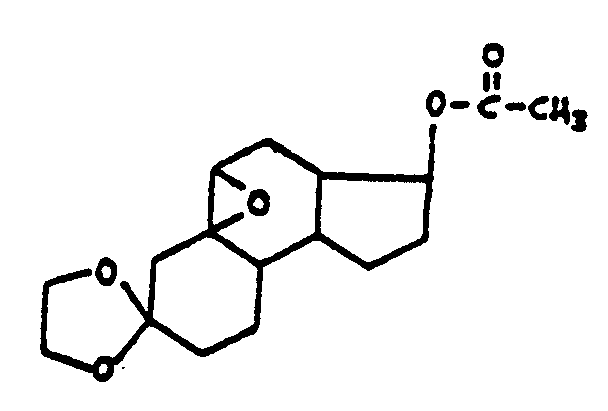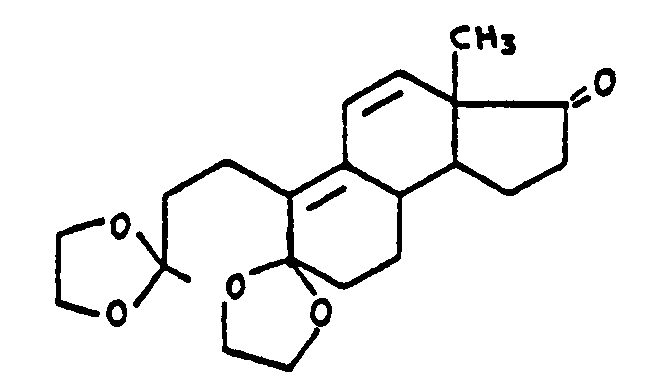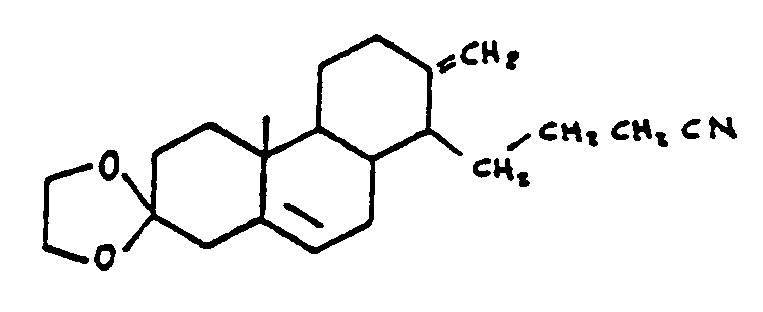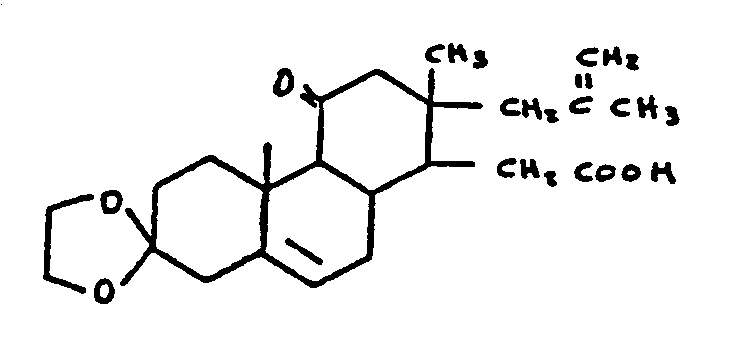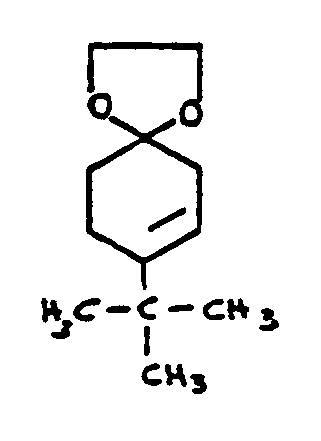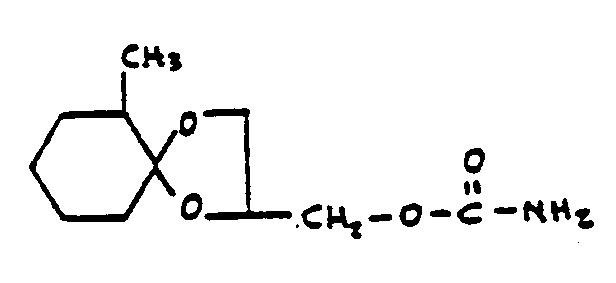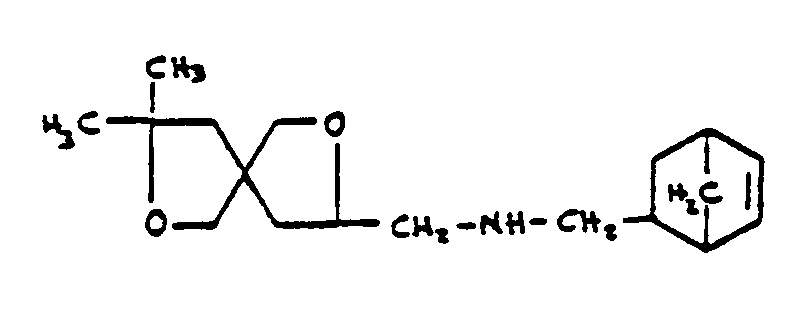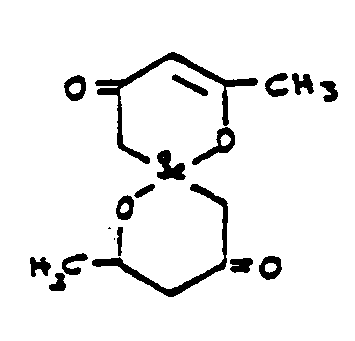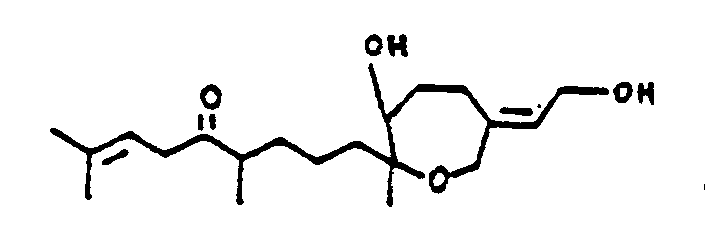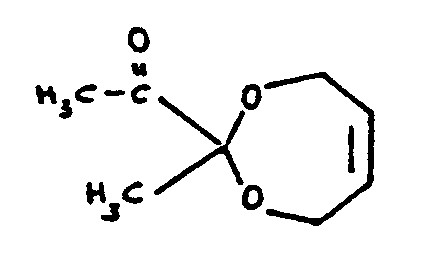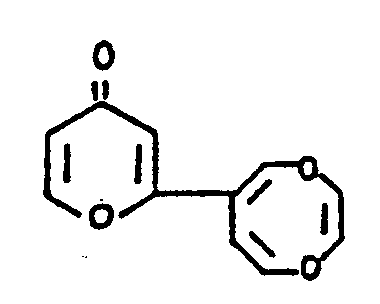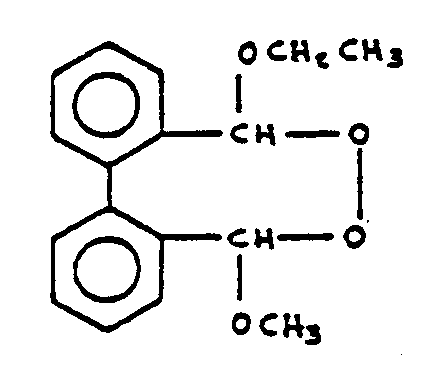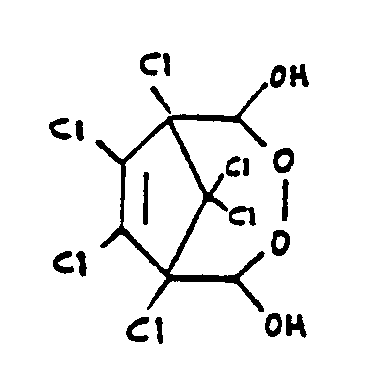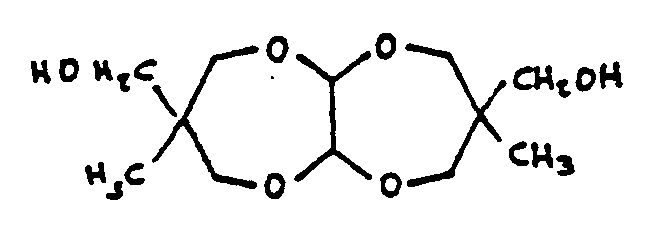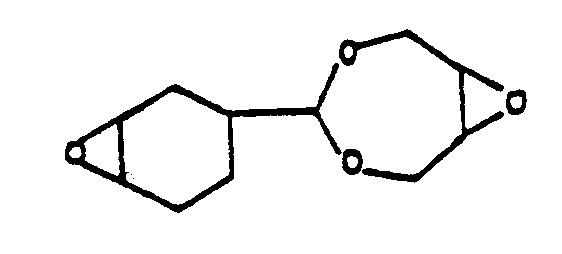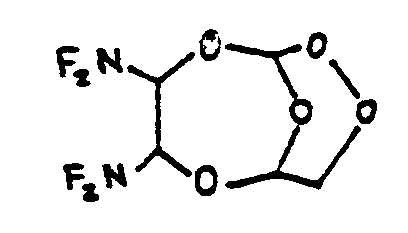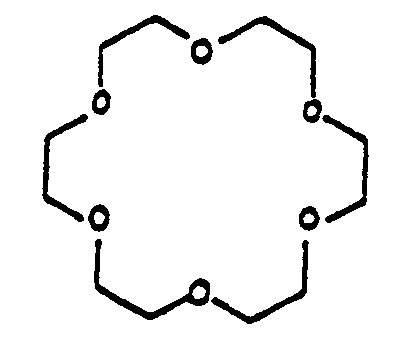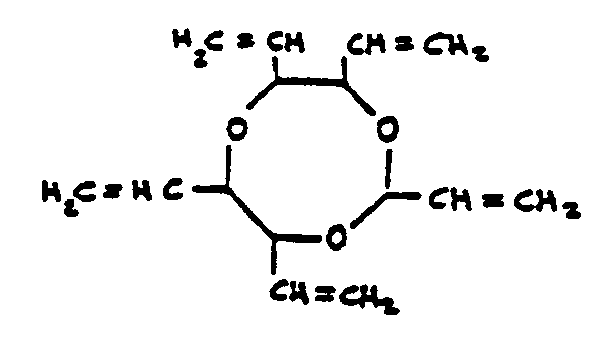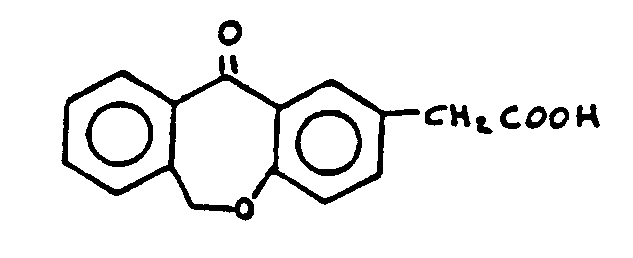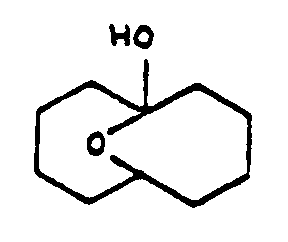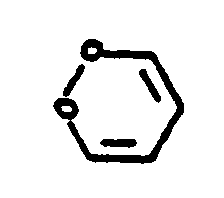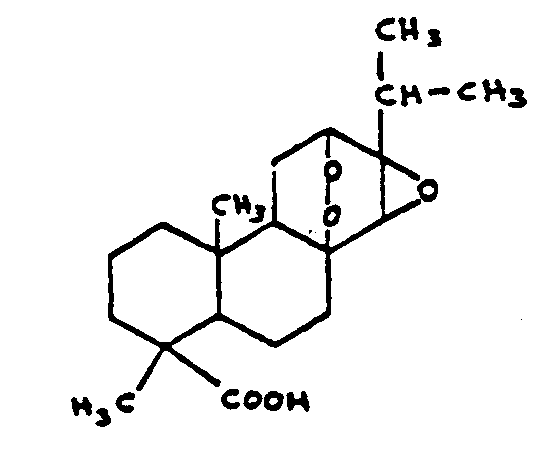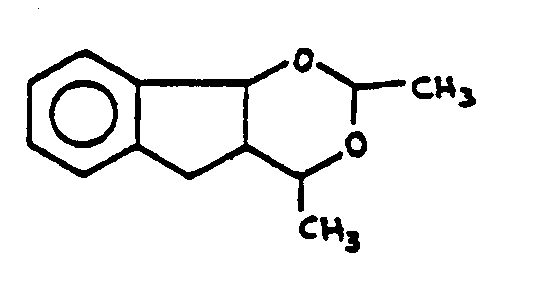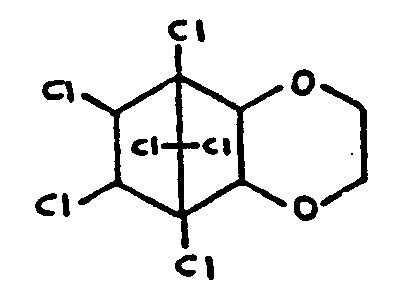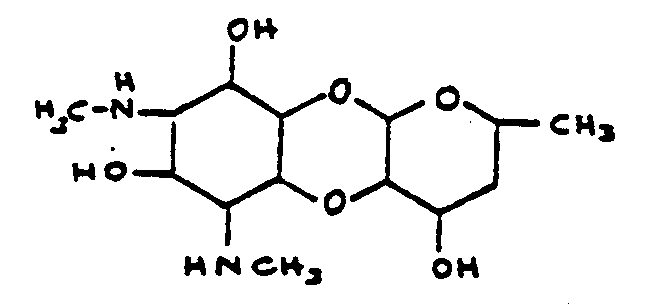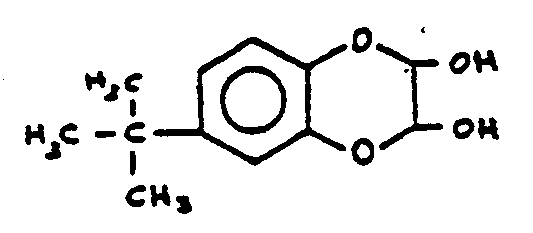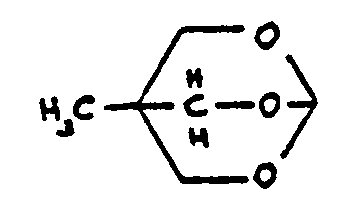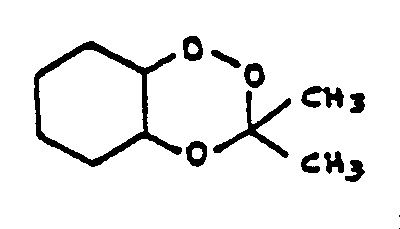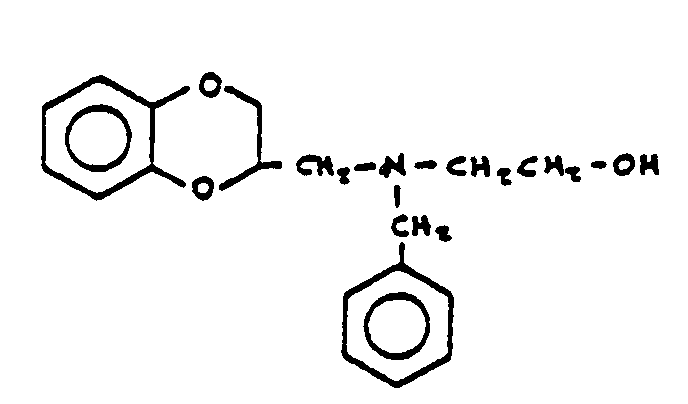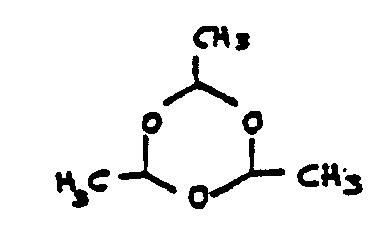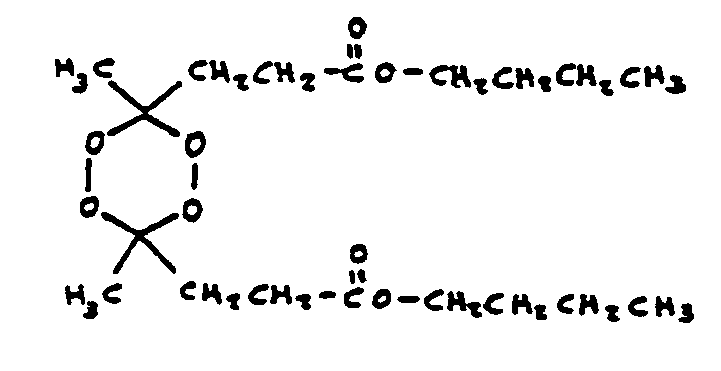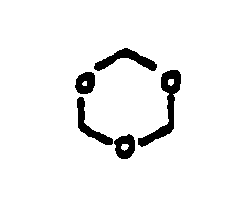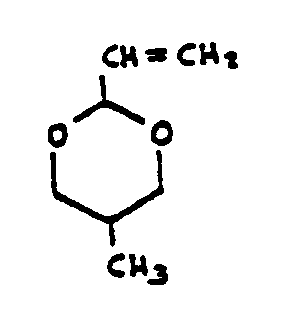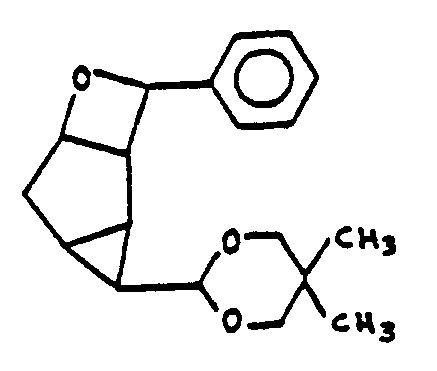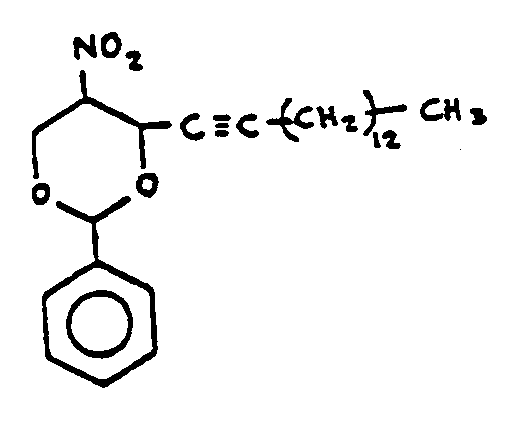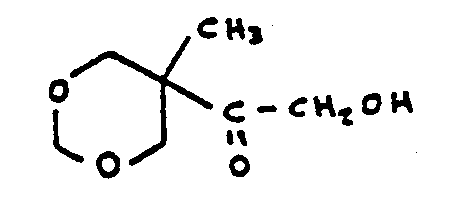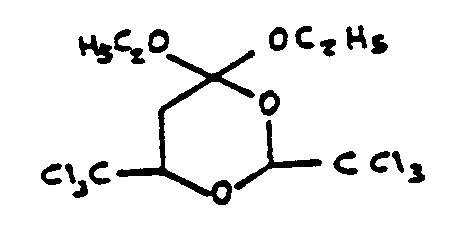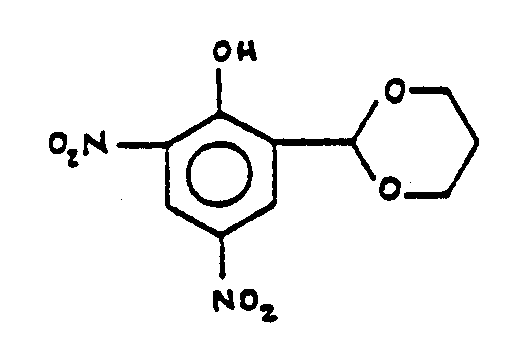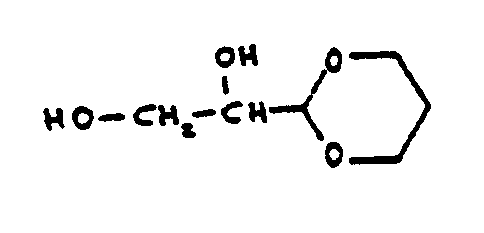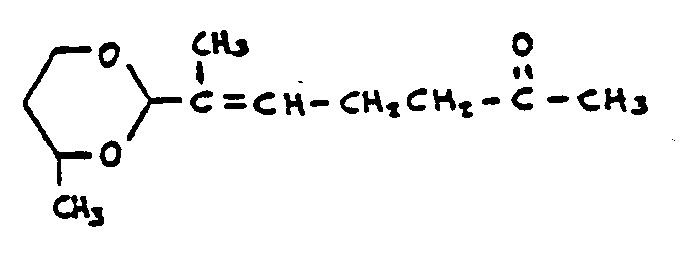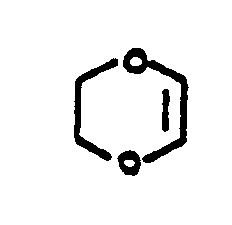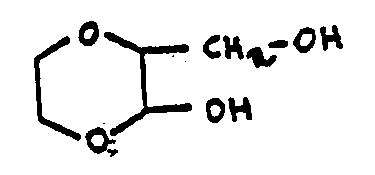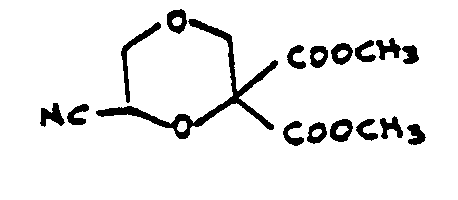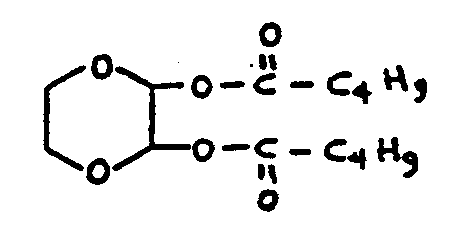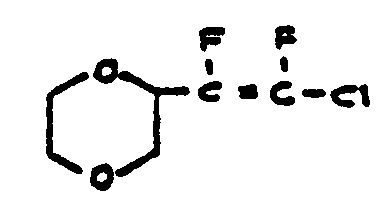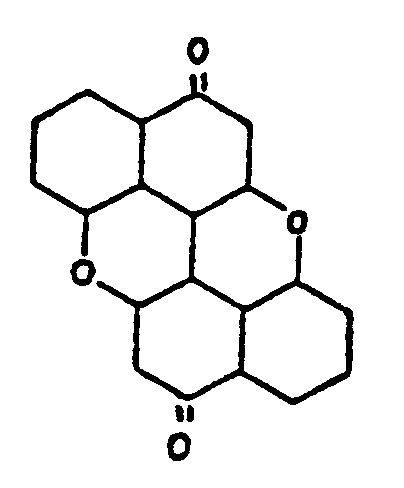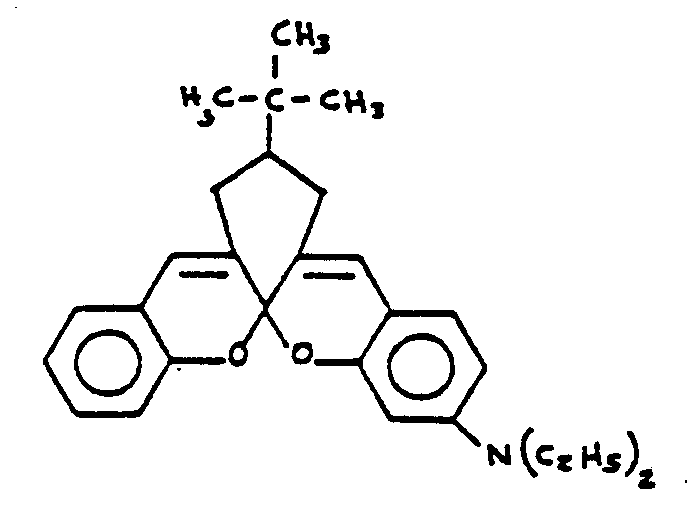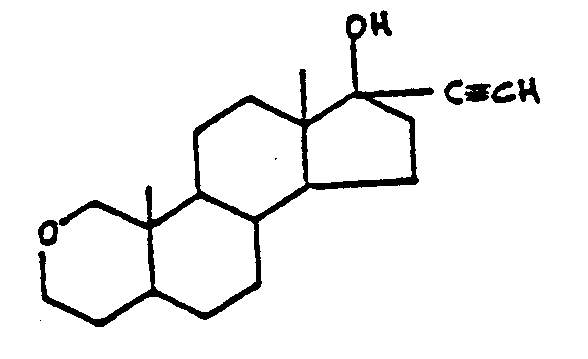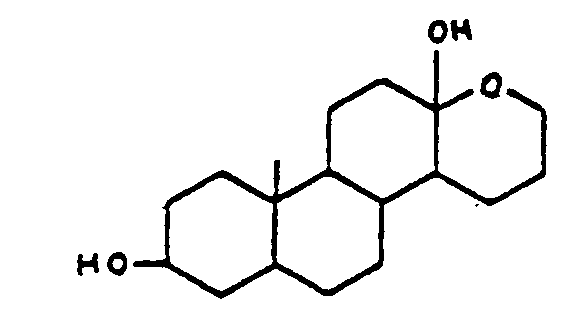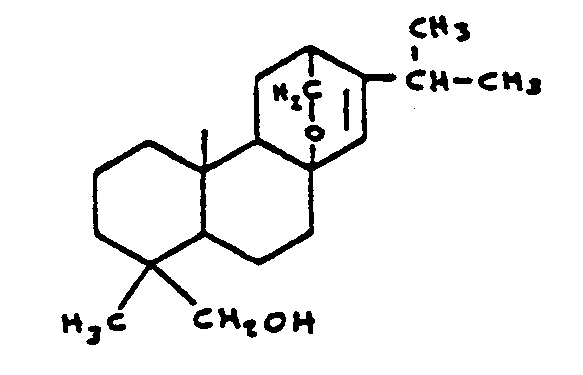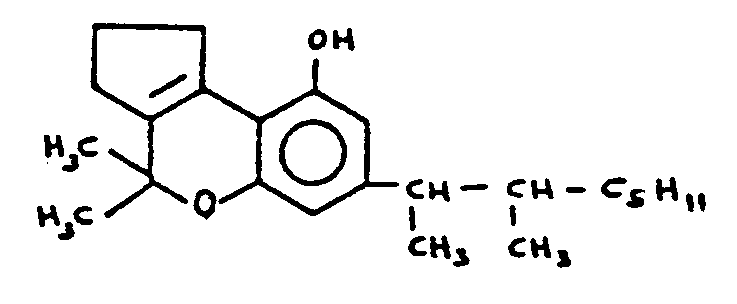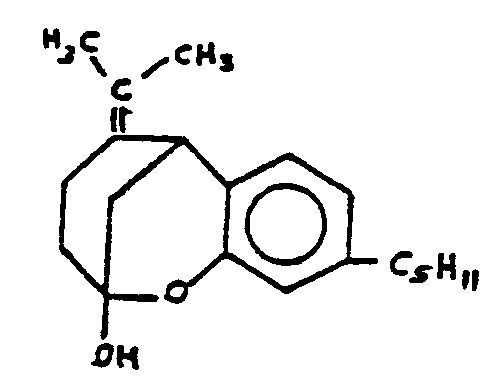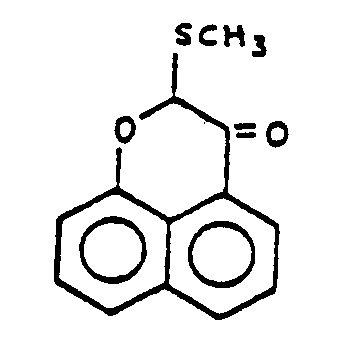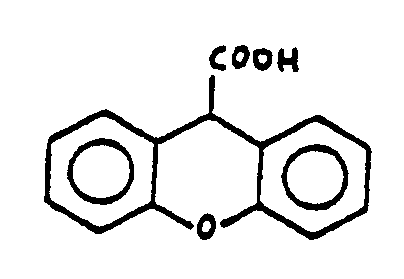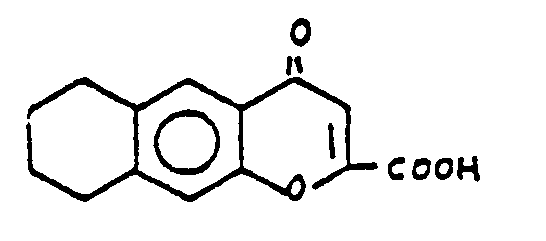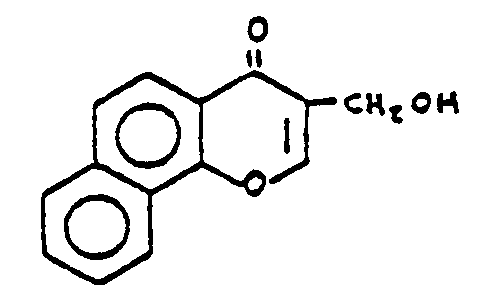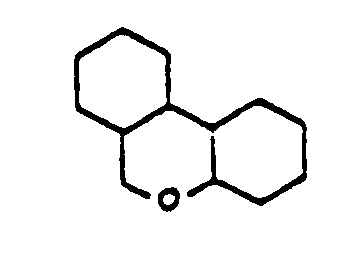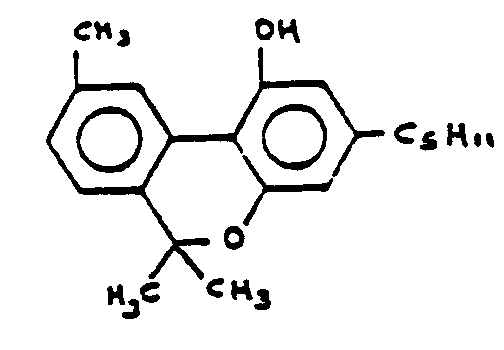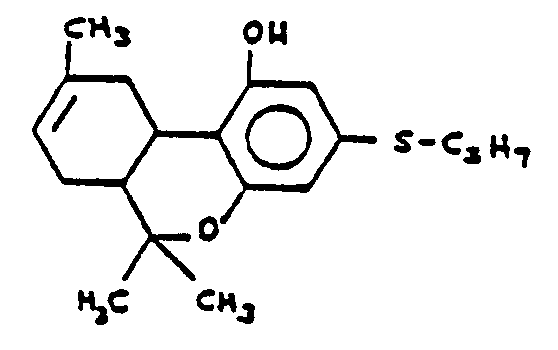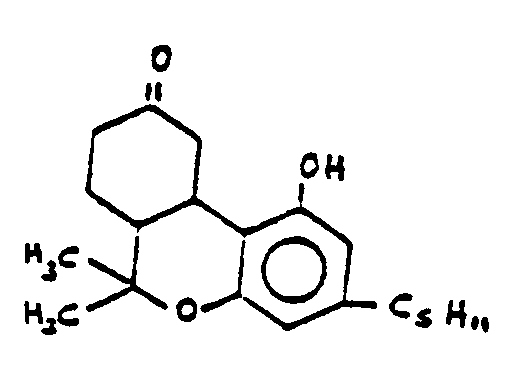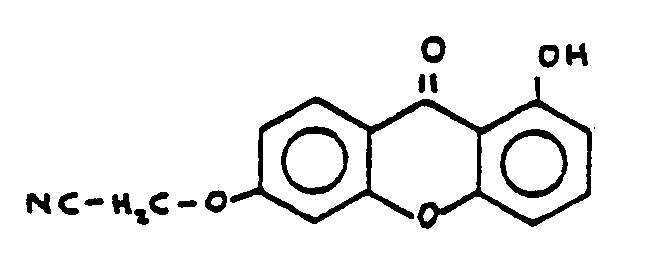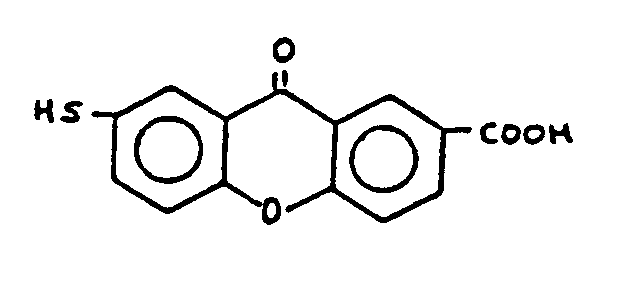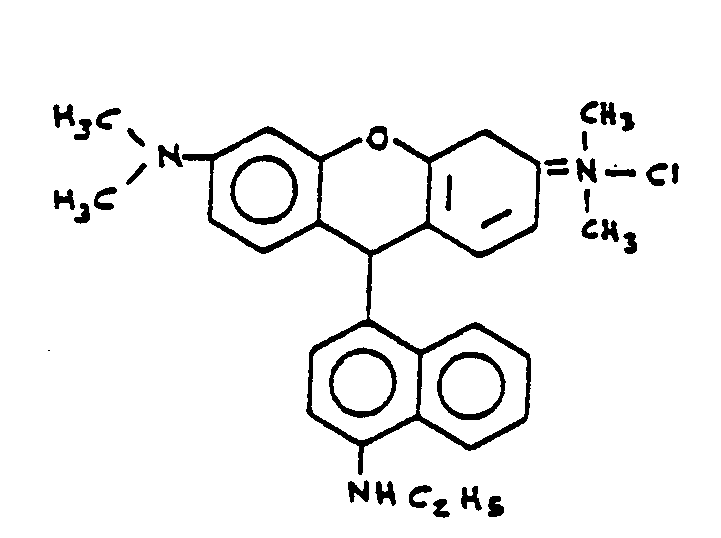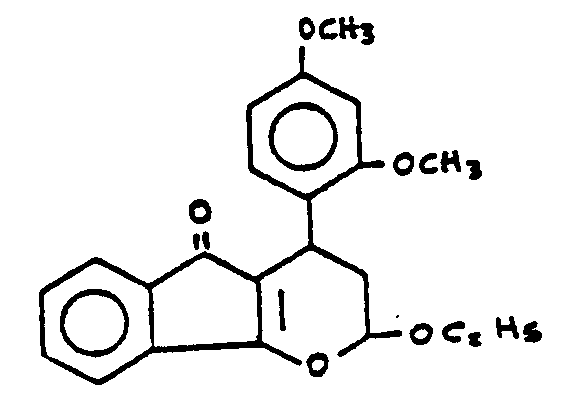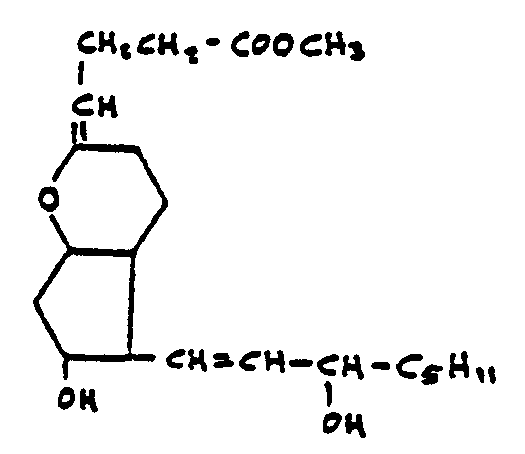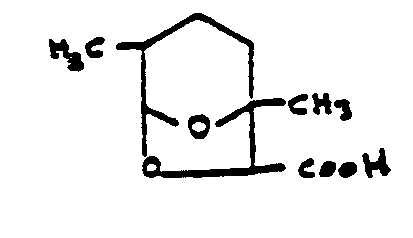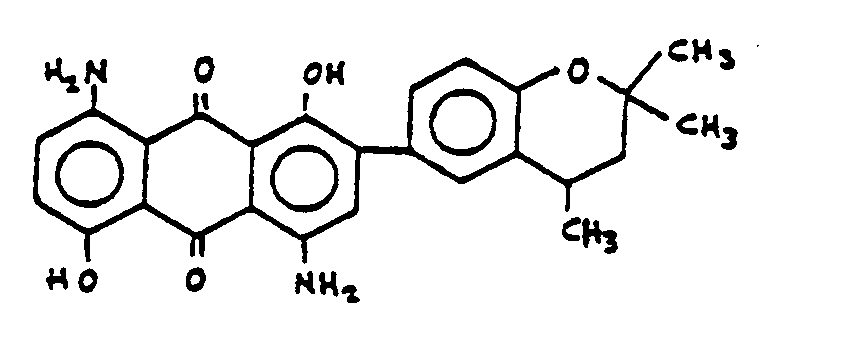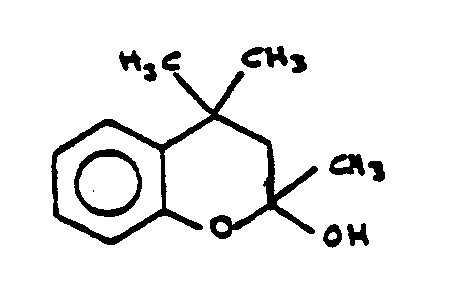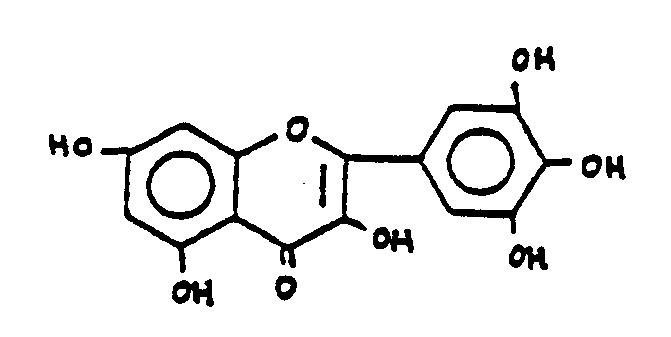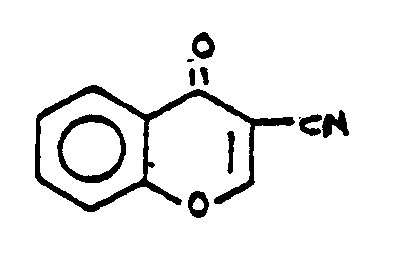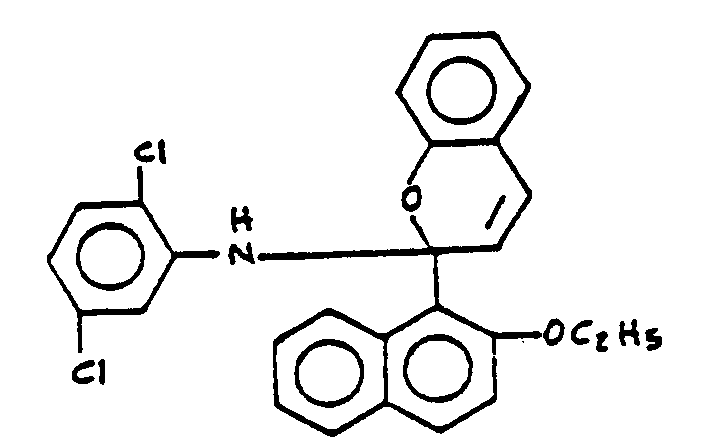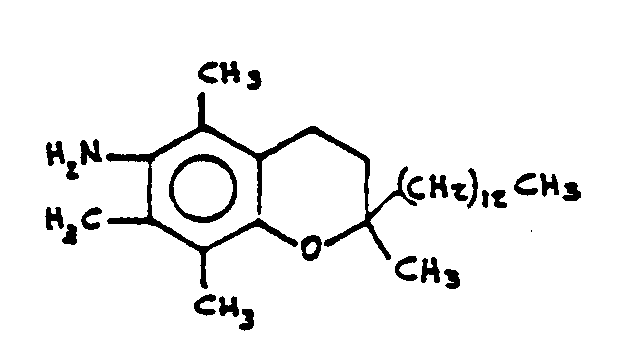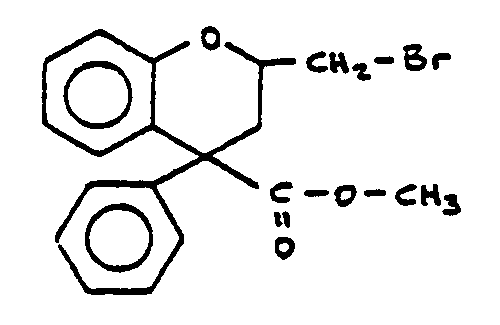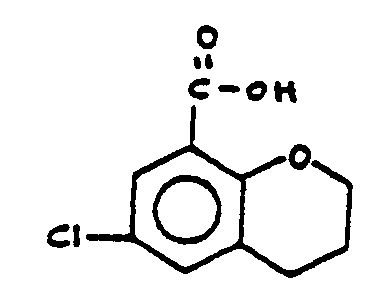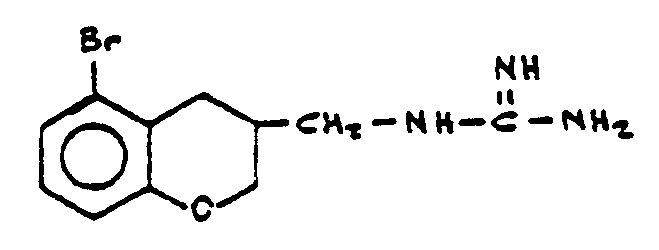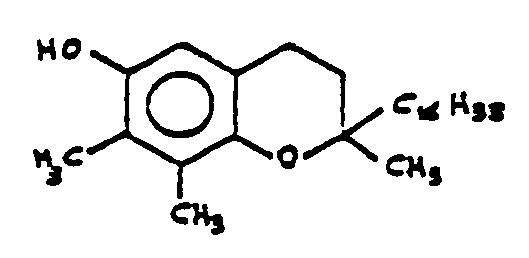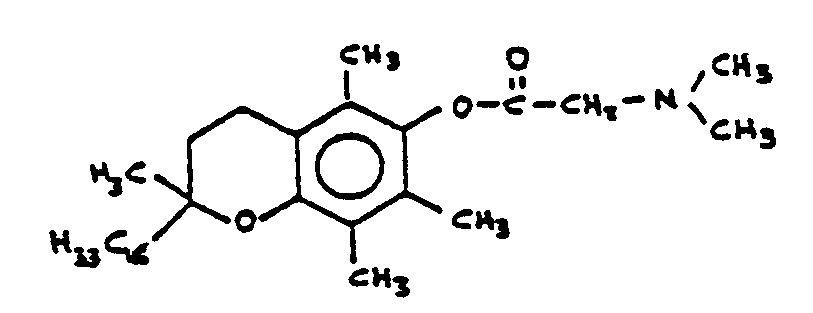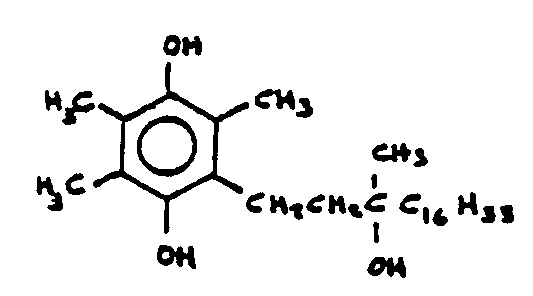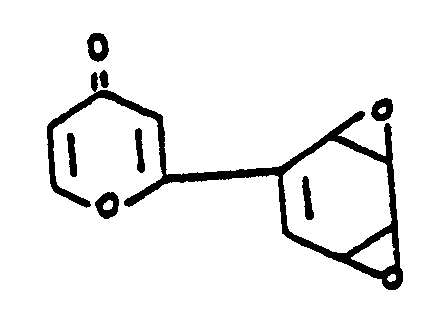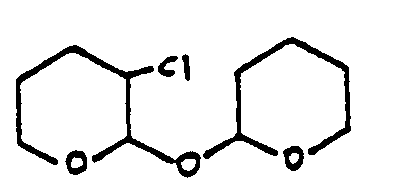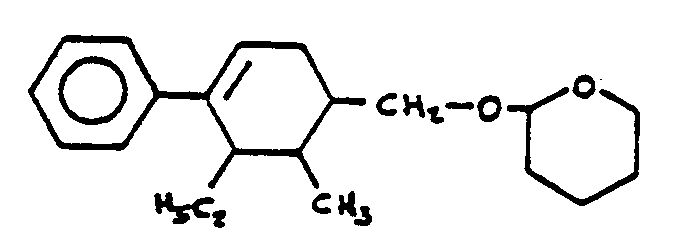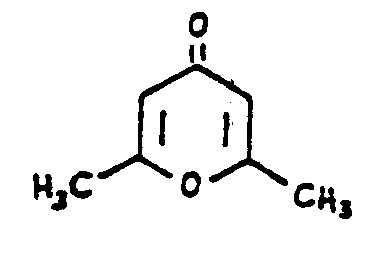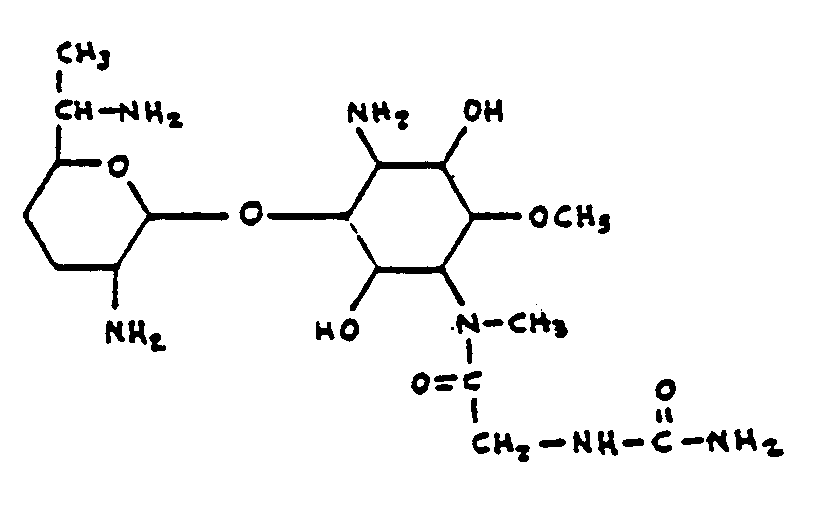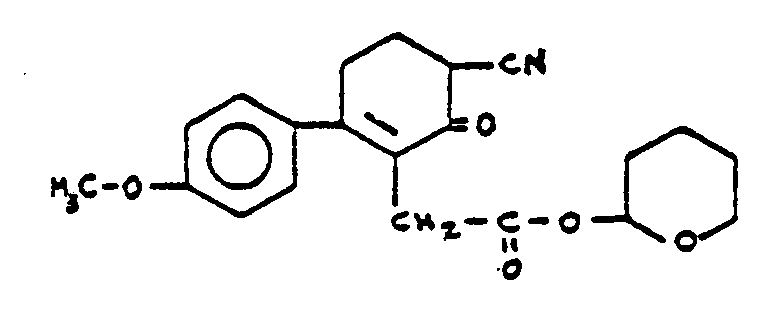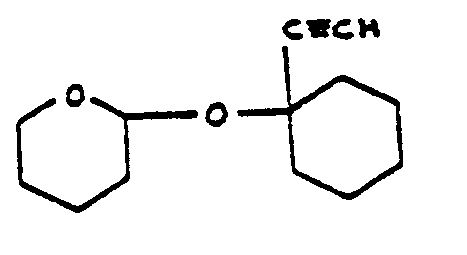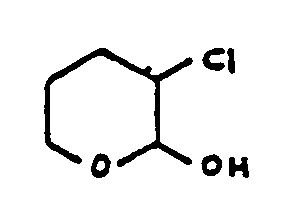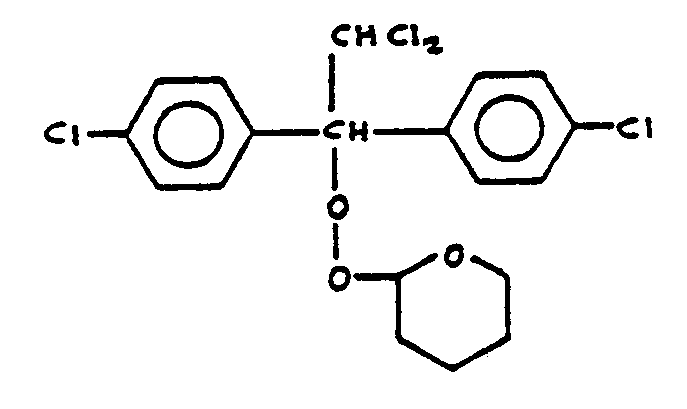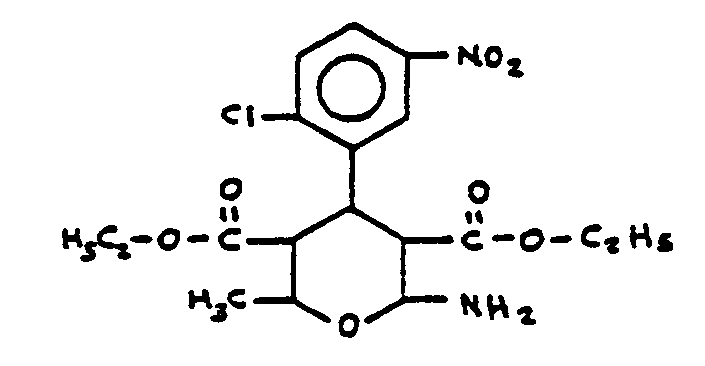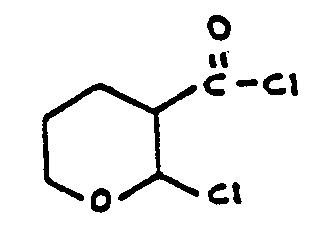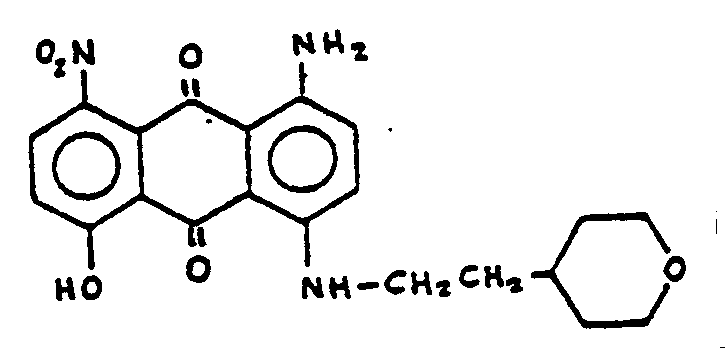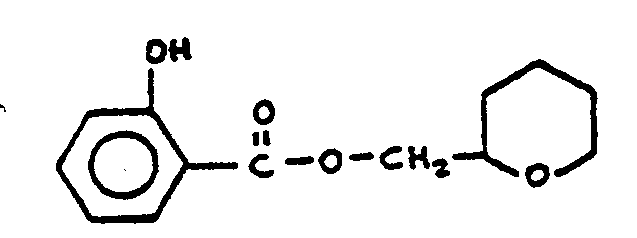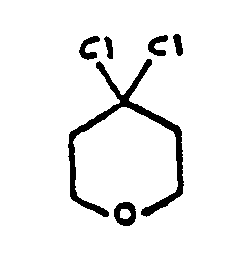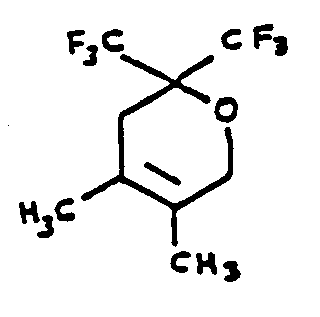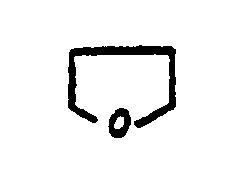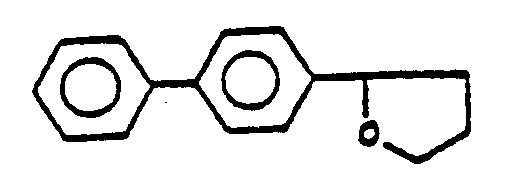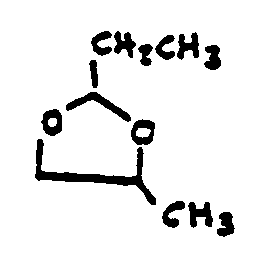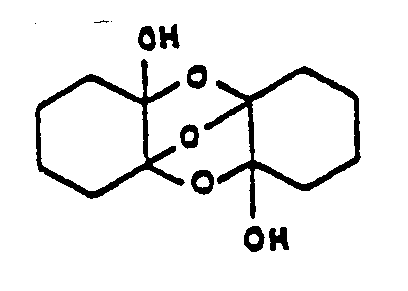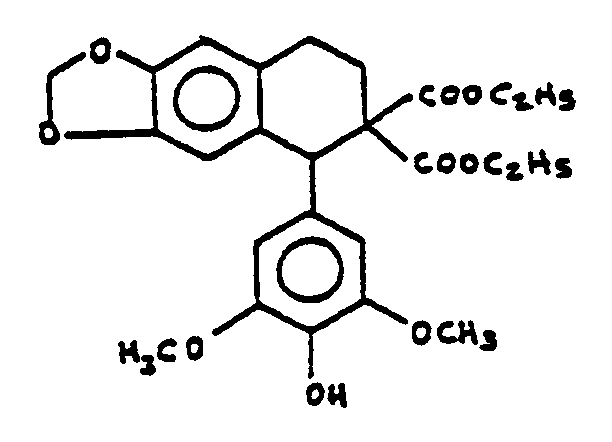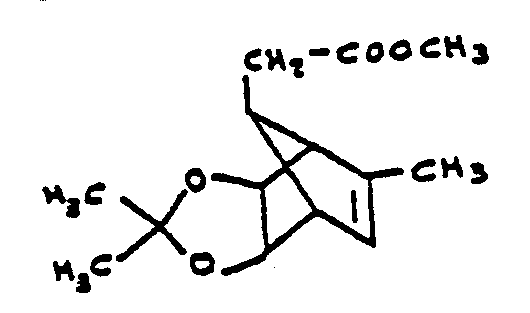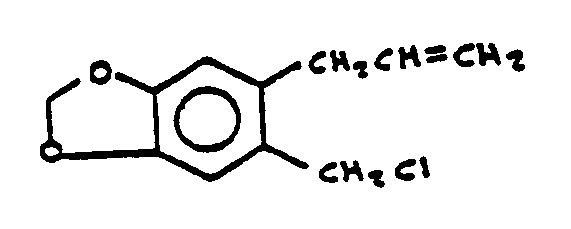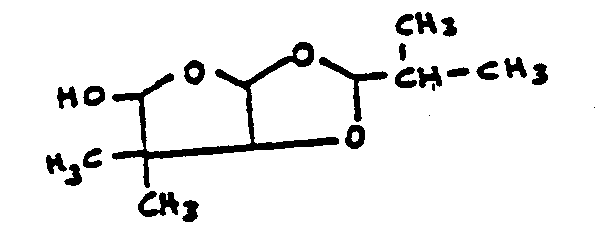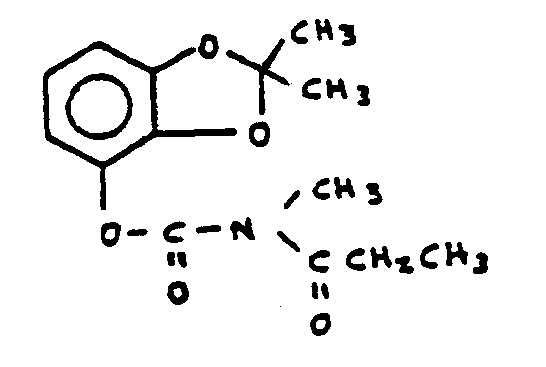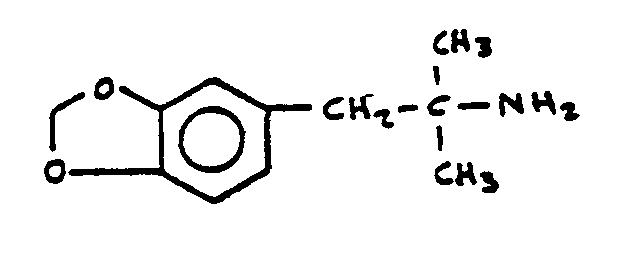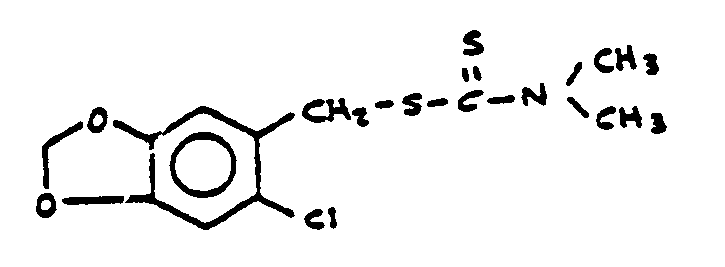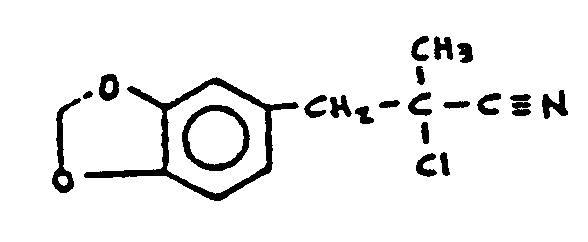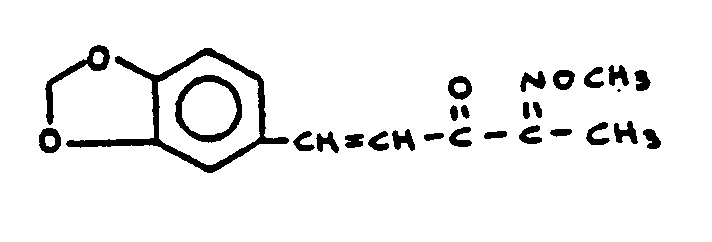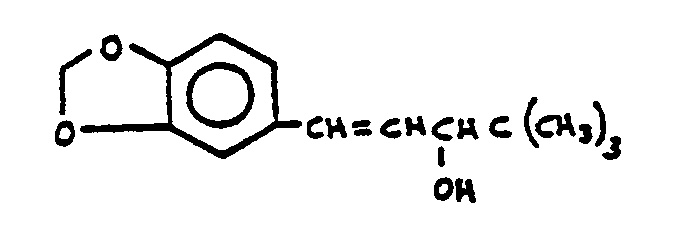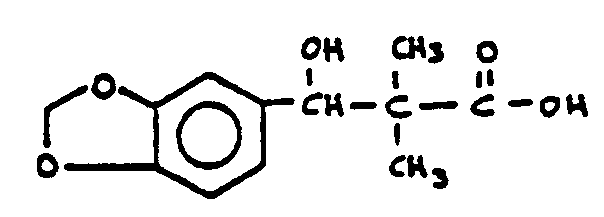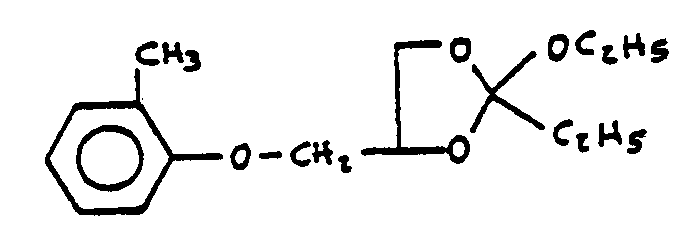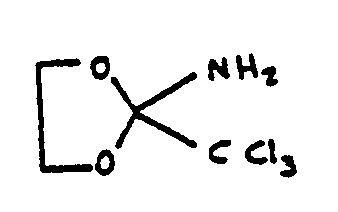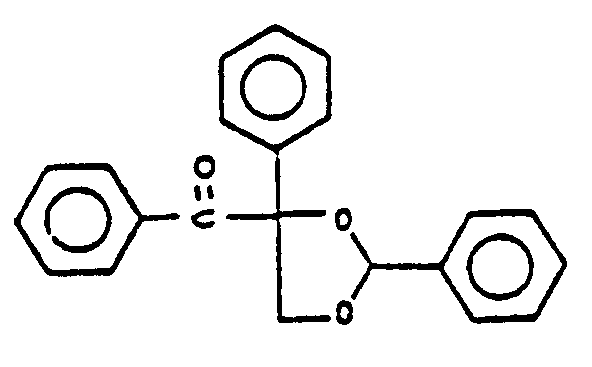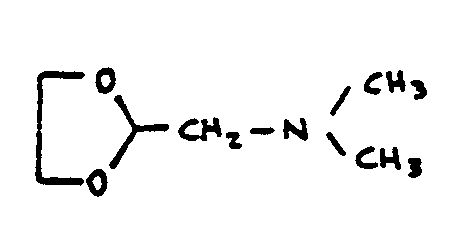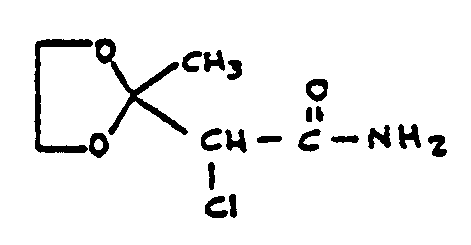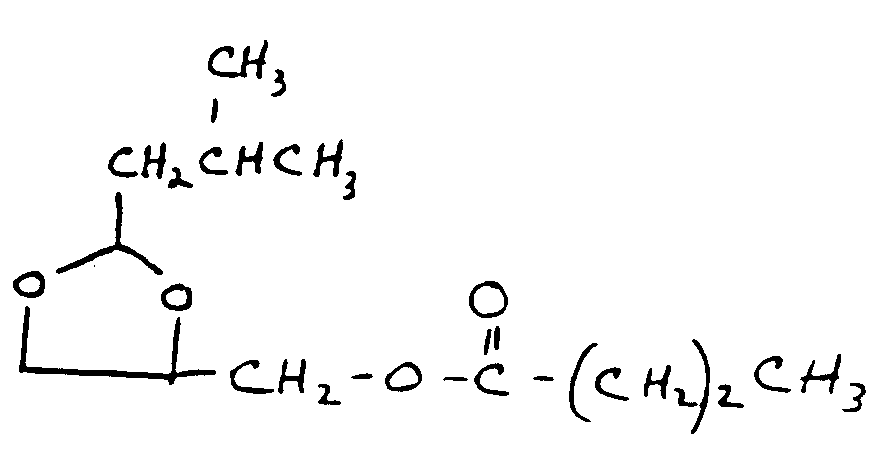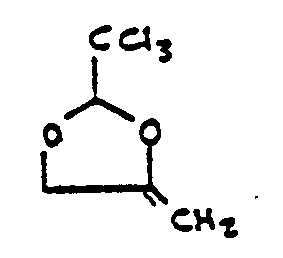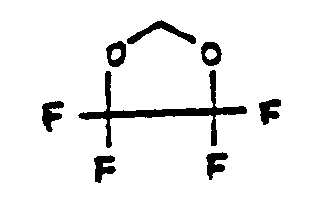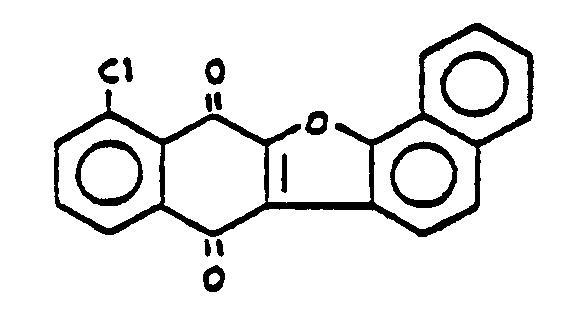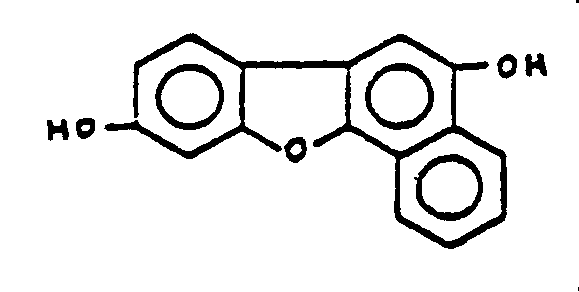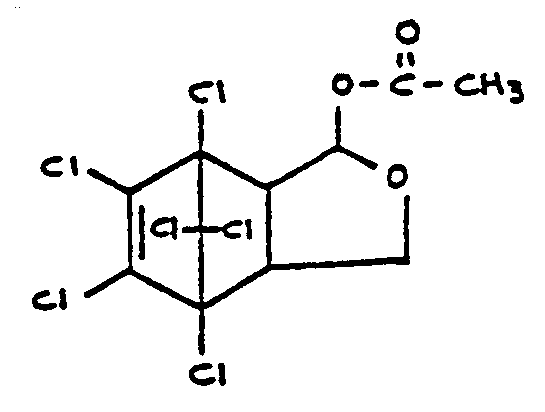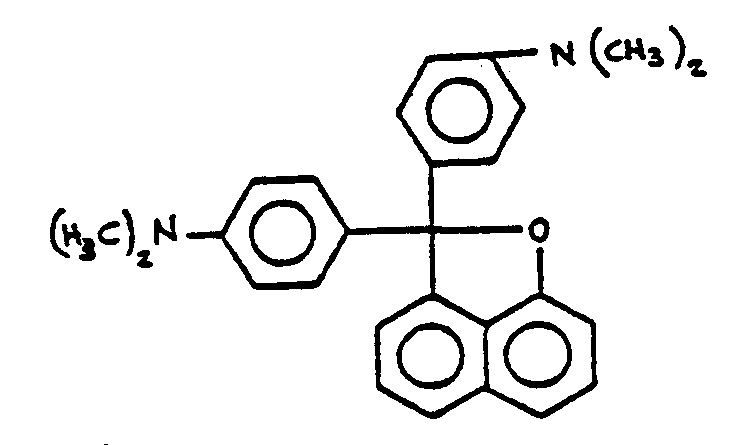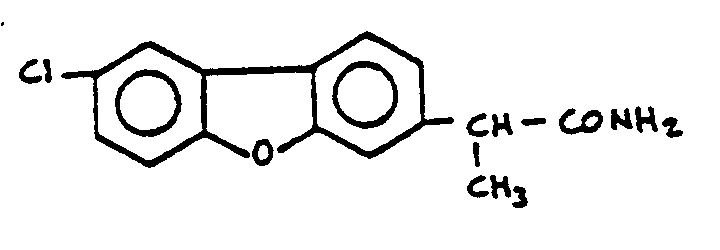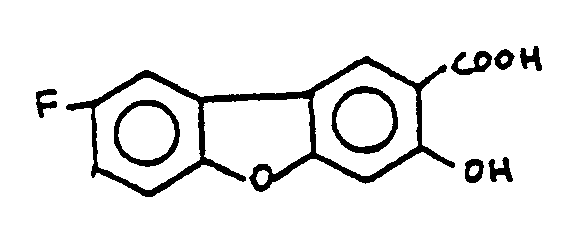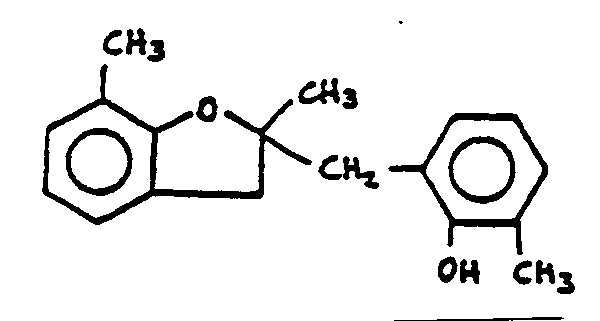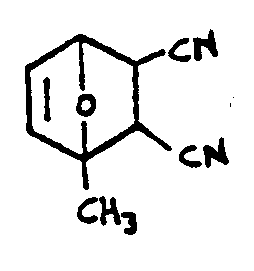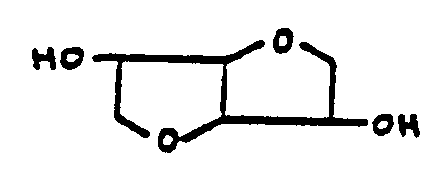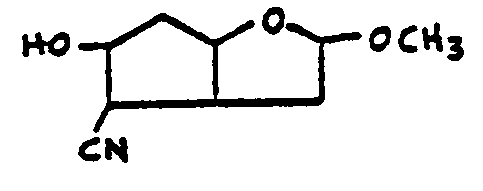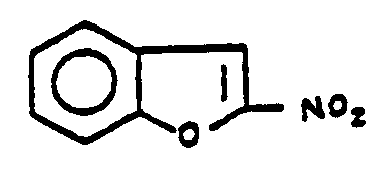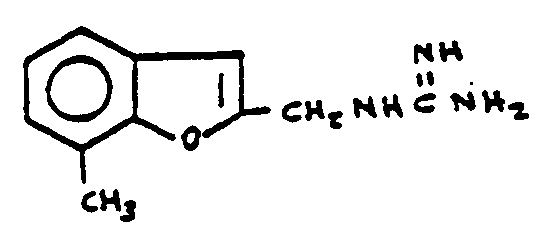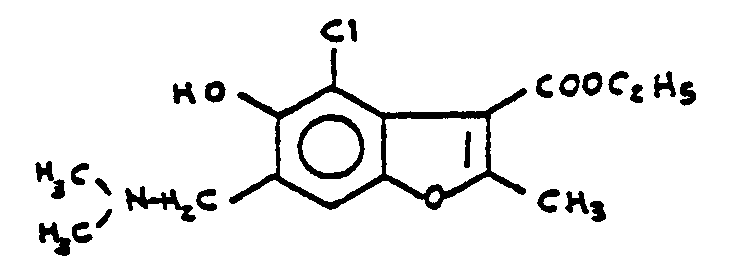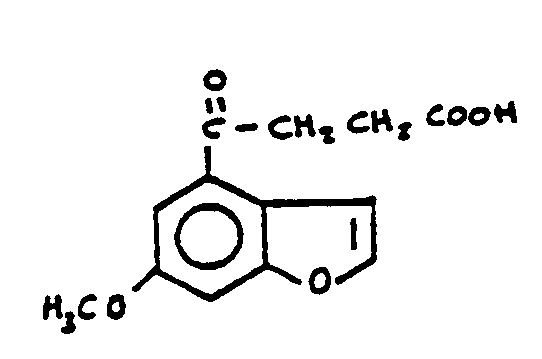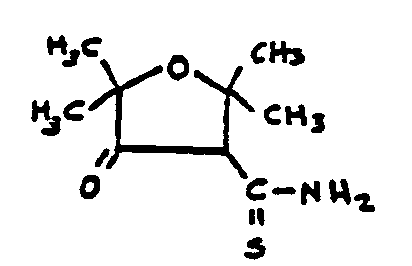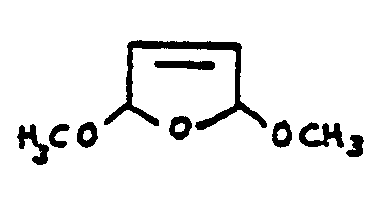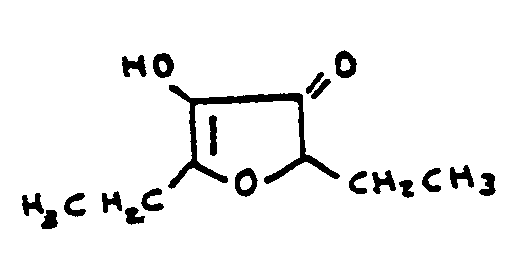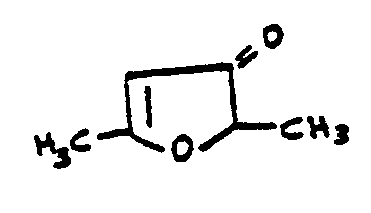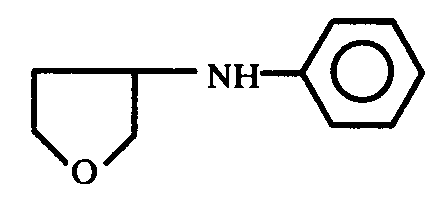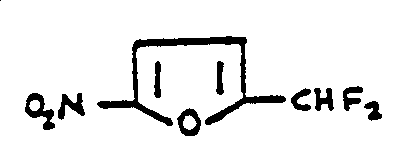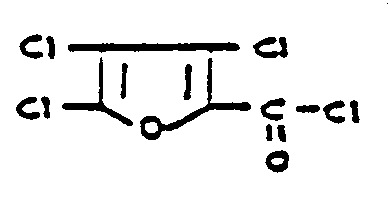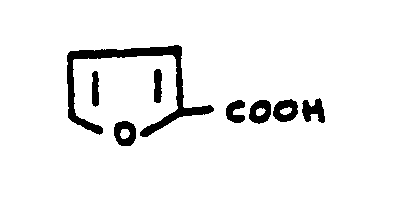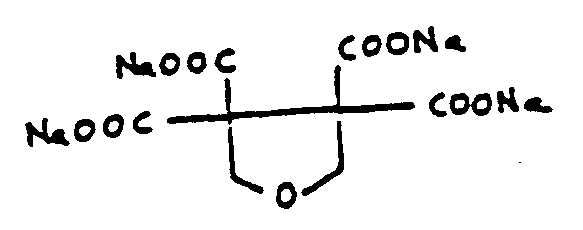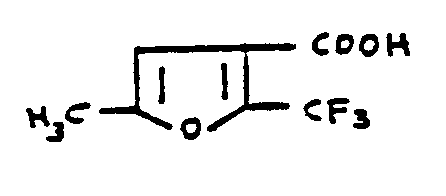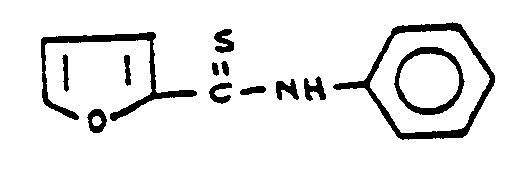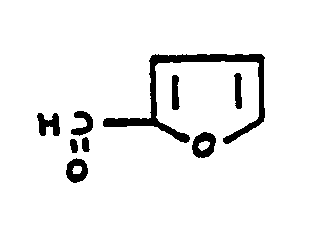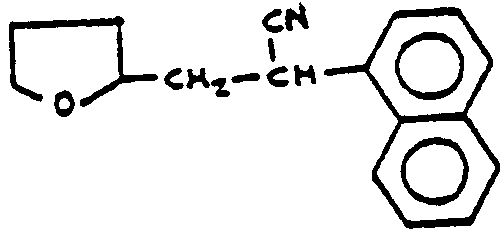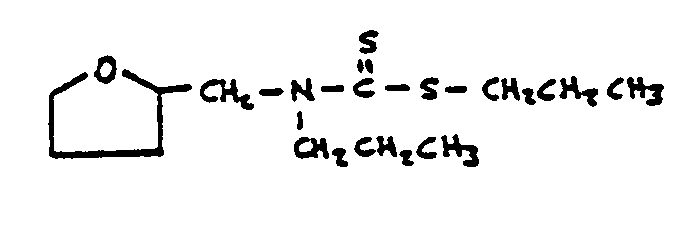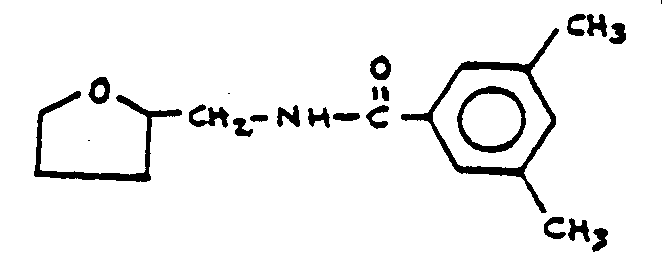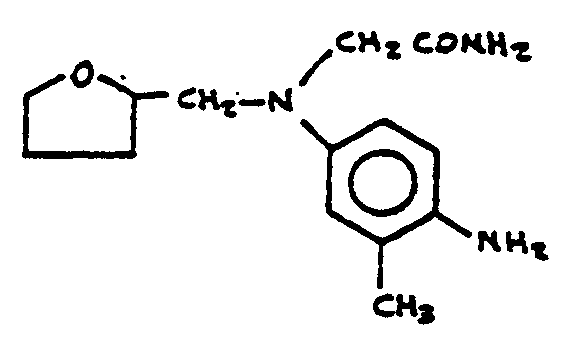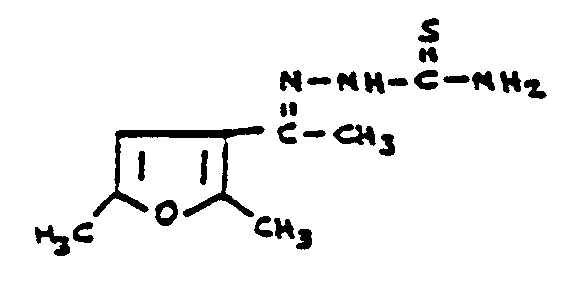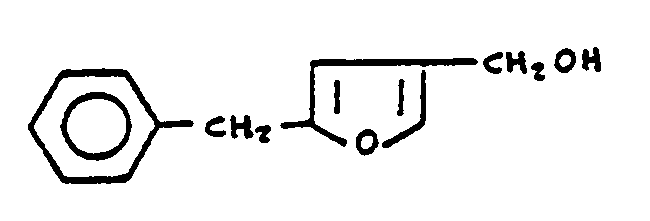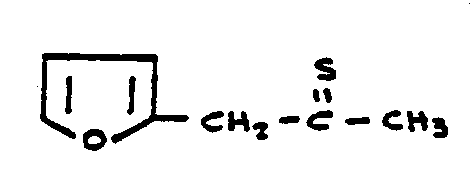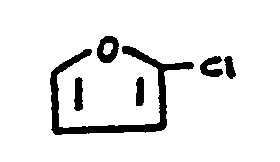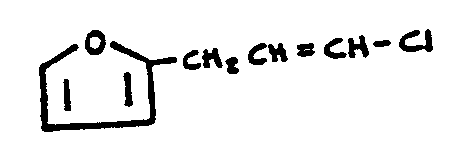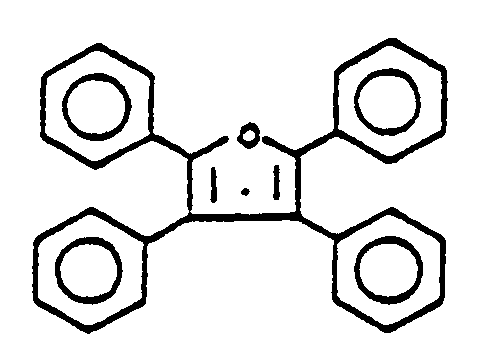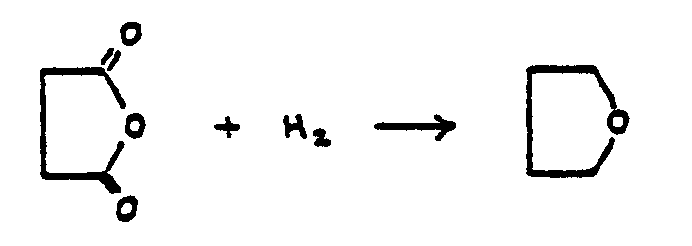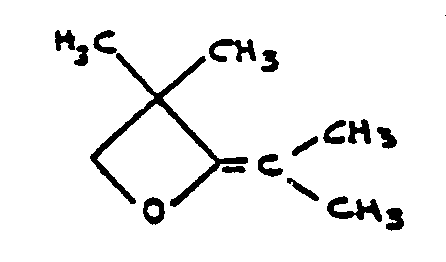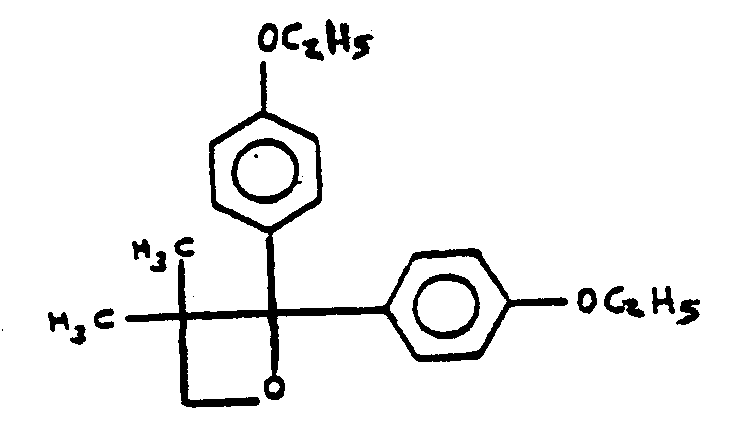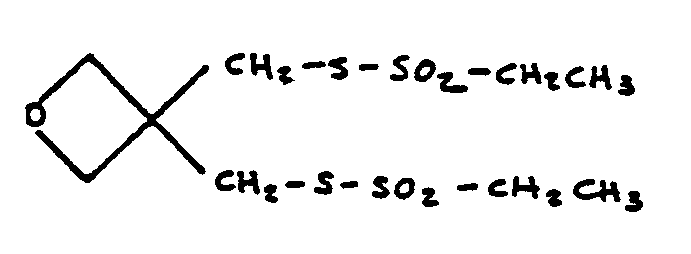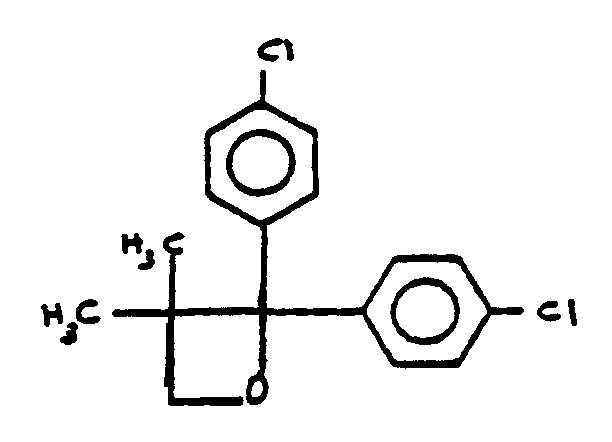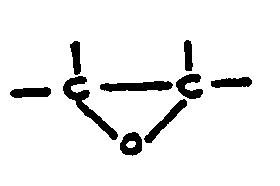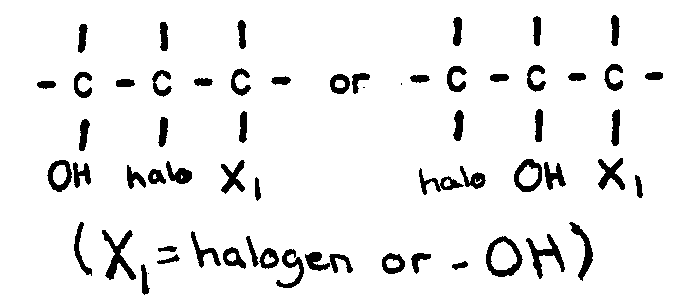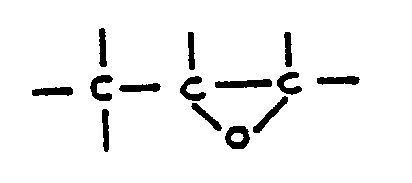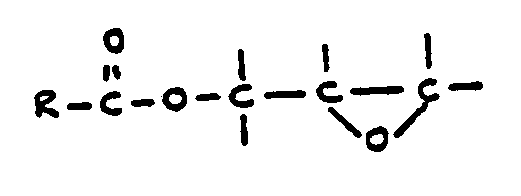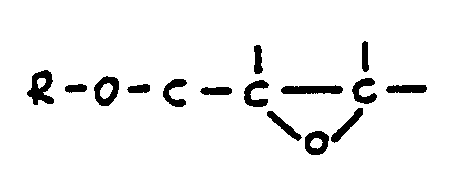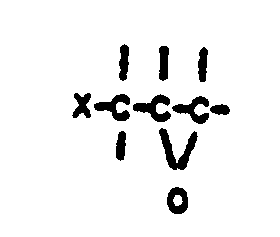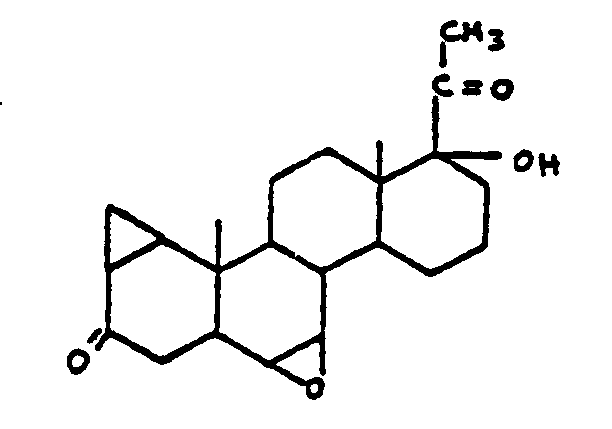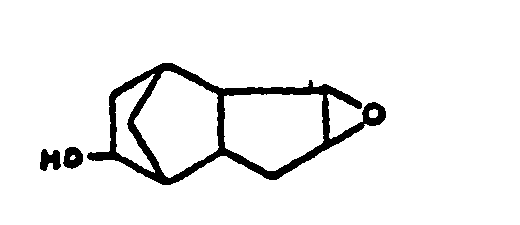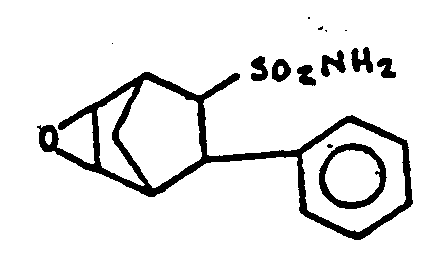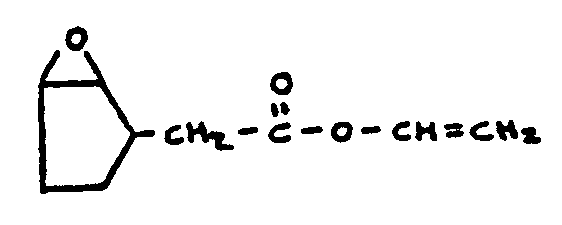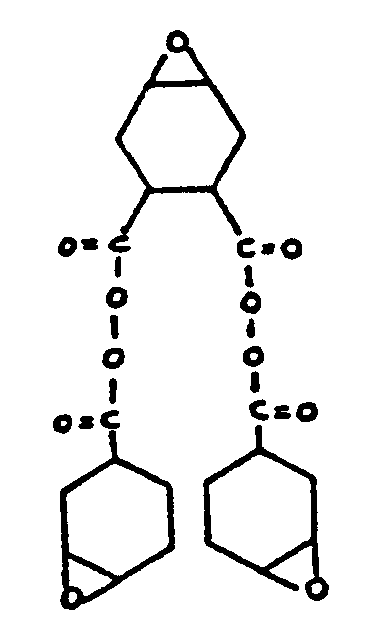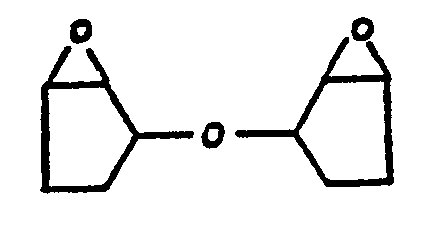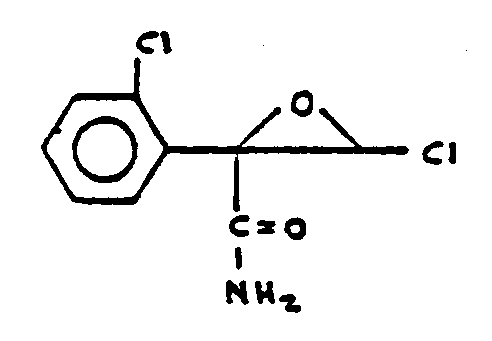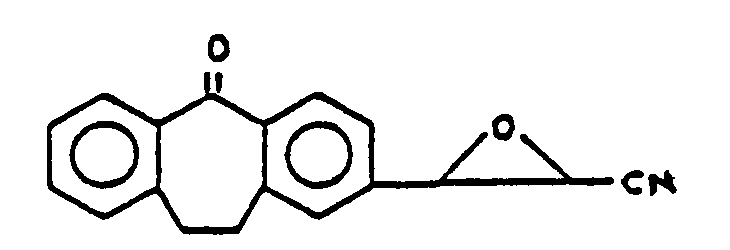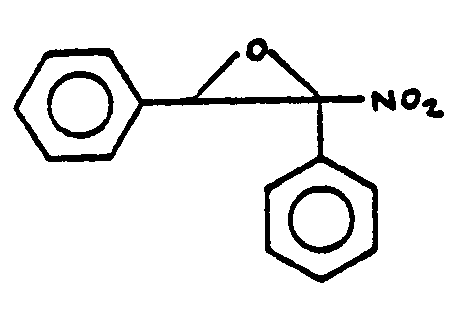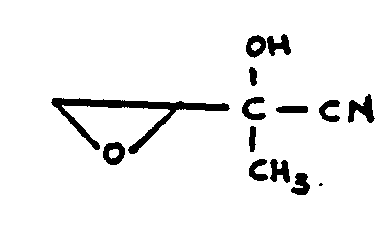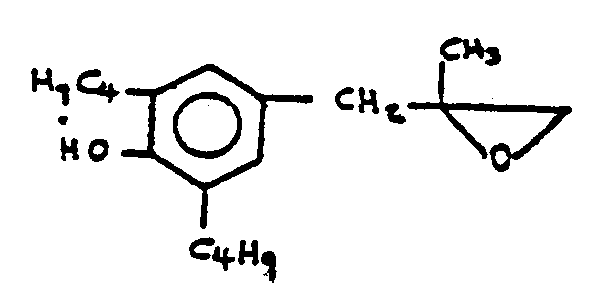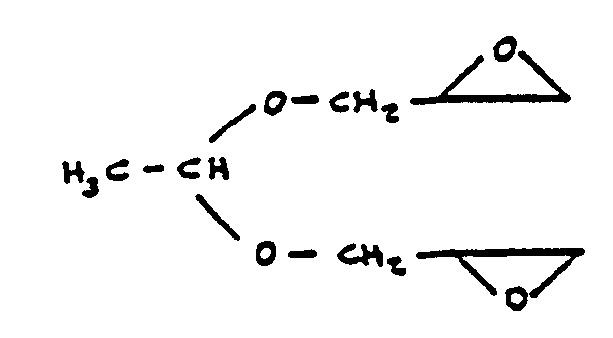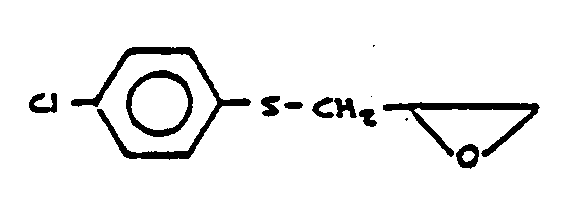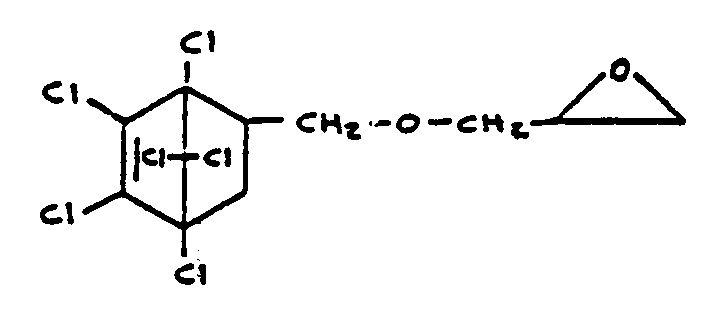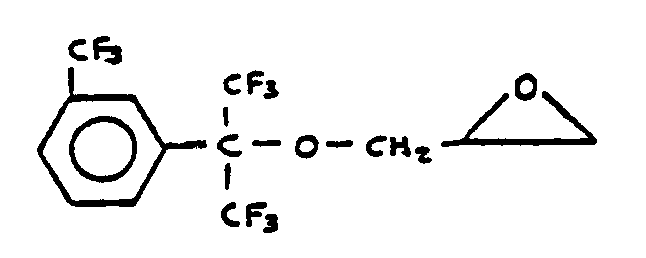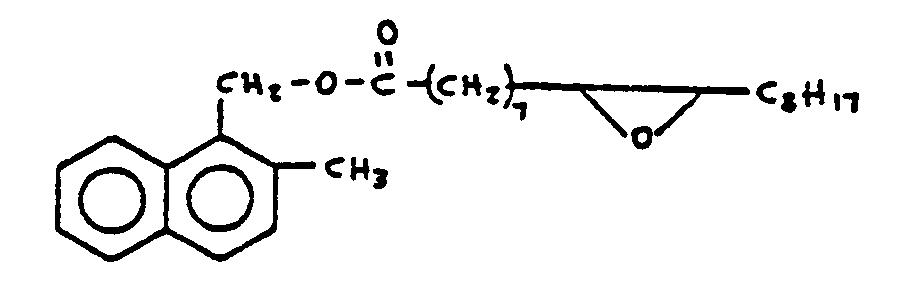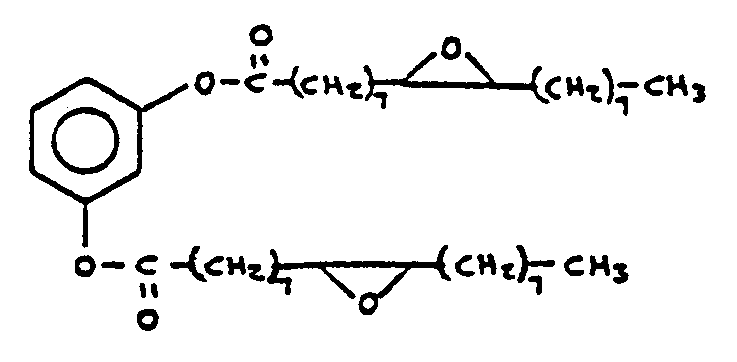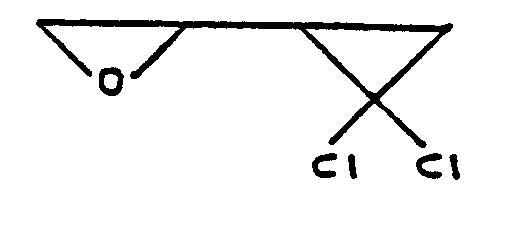![[Search a list of Patent Appplications for class 549]](../as.gif) CLASS 549, CLASS 549, | ORGANIC COMPOUNDS -- PART OF THE CLASS 532-570 SERIES |
| Click here for a printable version of this file | |
SUBCLASSES
![[List of Patents for class 549 subclass 1]](../ps.gif) 1 1 | Sulfur containing hetero ring (e.g., thiiranes, etc.) | ||
This subclass is indented under subclass 1. Compounds under Class 540, ... which contain a hetero ring
having sulfur as a ring hetero atom.
| |||
![[List of Patents for class 549 subclass 2]](../ps.gif) 2 2 | With preservative or stabilizer |
| This subclass is indented under subclass 1. Compounds which occur in admixture with agents which function to prevent physical or chemical change. | |
![[List of Patents for class 549 subclass 3]](../ps.gif) 3 3 | Heavy metal or aluminum containing | ||||
This subclass is indented under subclass 1. Compounds which include aluminum or a metal with a specific
gravity greater than 4.
| |||||
![[List of Patents for class 549 subclass 4]](../ps.gif) 4 4 | Boron or silicon containing | ||
This subclass is indented under subclass 1. Compounds which include boron or silicon.
| |||
![[List of Patents for class 549 subclass 5]](../ps.gif) 5 5 | Phosphorus attached directly or indirectly to the hetero ring by nonionic bonding | ||
This subclass is indented under subclass 1. Compounds wherein phosphorus is attached directly or indirectly
to the hetero ring by nonionic bonding.
| |||
![[List of Patents for class 549 subclass 6]](../ps.gif) 6 6 | The hetero ring is five-membered |
| This subclass is indented under subclass 5. Compounds wherein the hetero ring is five-membered. | |
![[List of Patents for class 549 subclass 7]](../ps.gif) 7 7 | Plural ring hetero atoms in the hetero ring |
| This subclass is indented under subclass 6. Compounds wherein the five-membered hetero ring contains at least one ring hetero atom in addition to the ring sulfur. | |
![[List of Patents for class 549 subclass 8]](../ps.gif) 8 8 | Four chalcogens bonded directly to the same phosphorus |
| This subclass is indented under subclass 6. Compounds having exactly four chalcogens (i.e., oxygen, sulfur, selenium, or tellurium) bonded directly to the same phosphorus atom. | |
![[List of Patents for class 549 subclass 9]](../ps.gif) 9 9 | The hetero ring has at least seven members |
| This subclass is indented under subclass 1. Compounds wherein the hetero ring has seven or more members. | |
![[List of Patents for class 549 subclass 10]](../ps.gif) 10 10 | Plural ring hetero atoms in the hetero ring |
| This subclass is indented under subclass 9. Compounds wherein the hetero ring contains at least one hetero atom in addition to the ring sulfur. | |
![[List of Patents for class 549 subclass 11]](../ps.gif) 11 11 | Plural ring sulfurs in the hetero ring |
| This subclass is indented under subclass 10. Compounds wherein the hetero ring contains at least two ring sulfurs. | |
![[List of Patents for class 549 subclass 12]](../ps.gif) 12 12 | Polycyclo ring system having at least three cyclos and having the hetero ring as one of the cyclos | ||
This subclass is indented under subclass 9. Compounds wherein the hetero ring having at least seven
members is a cyclo in a polycyclo ring system containing at least
three cyclos.
| |||
![[List of Patents for class 549 subclass 13]](../ps.gif) 13 13 | The hetero ring is six-membered |
| This subclass is indented under subclass 1. Compounds wherein the hetero ring is six-membered. | |
![[List of Patents for class 549 subclass 14]](../ps.gif) 14 14 | Plural ring hetero atoms in the hetero ring |
| This subclass is indented under subclass 13. Compounds wherein the hetero ring contains at least one ring hetero atom in addition to the ring sulfur. | |
![[List of Patents for class 549 subclass 15]](../ps.gif) 15 15 | Polycyclo ring system having the hetero ring as one of the cyclos |
| This subclass is indented under subclass 14. Compounds wherein the hetero ring is one of the cyclos of a polycyclo ring system. | |
![[List of Patents for class 549 subclass 16]](../ps.gif) 16 16 | Tricyclo ring system having the hetero ring as one of the cyclos |
| This subclass is indented under subclass 15. Compounds wherein the polycyclo ring system consists of exactly three rings. | |
![[List of Patents for class 549 subclass 17]](../ps.gif) 17 17 | Plural ring sulfurs in the hetero ring |
| This subclass is indented under subclass 16. Compounds wherein the hetero ring contains at least two ring sulfurs. | |
![[List of Patents for class 549 subclass 18]](../ps.gif) 18 18 | Three or more ring hetero atoms in the hetero ring |
| This subclass is indented under subclass 14. Compounds wherein the six-membered hetero ring contains at least two ring hetero atoms in addition to the ring sulfur. | |
![[List of Patents for class 549 subclass 19]](../ps.gif) 19 19 | Plural ring sulfurs in the hetero ring |
| This subclass is indented under subclass 18. Compounds wherein the hetero ring contains at least two ring sulfurs. | |
![[List of Patents for class 549 subclass 20]](../ps.gif) 20 20 | Two ring sulfurs in the hetero ring |
| This subclass is indented under subclass 14. Compounds wherein the hetero ring contains exactly two ring sulfurs. | |
![[List of Patents for class 549 subclass 21]](../ps.gif) 21 21 | Chalcogen or nitrogen attached directly to the hetero ring by nonionic bonding |
| This subclass is indented under subclass 20. Compounds wherein nitrogen or chalcogen (i.e., oxygen, sulfur, selenium, or tellurium) is attached directly to the hetero ring by nonionic bonding. | |
![[List of Patents for class 549 subclass 22]](../ps.gif) 22 22 | Chalcogen or nitrogen attached indirectly to the hetero ring by nonionic bonding |
| This subclass is indented under subclass 20. Compounds wherein chalcogen (i.e., oxygen, sulfur, selenium, or tellurium) or nitrogen is attached indirectly to the hetero ring by nonionic bonding. | |
![[List of Patents for class 549 subclass 23]](../ps.gif) 23 23 | Polycyclo ring system having the hetero ring as one of the cyclos |
| This subclass is indented under subclass 13. Compounds wherein the six-membered hetero ring is one of the cyclos of a polycyclo ring system. | |
![[List of Patents for class 549 subclass 24]](../ps.gif) 24 24 | The polycyclo ring system has at least four cyclos |
| This subclass is indented under subclass 23. Compounds wherein the polycyclo ring system has at least four cyclos. | |
![[List of Patents for class 549 subclass 25]](../ps.gif) 25 25 | Chalcogen attached directly to the hetero ring by nonionic bonding | ||
This subclass is indented under subclass 24. Compounds in which chalcogen (i.e., oxygen, sulfur, selenium,
or tellurium) is attached directly to the hetero ring by nonionic
bonding.
| |||
![[List of Patents for class 549 subclass 26]](../ps.gif) 26 26 | Tricyclo ring system having the hetero ring as one of the cyclos |
| This subclass is indented under subclass 23. Compounds wherein the polycyclo ring system consists of exactly three rings. | |
![[List of Patents for class 549 subclass 27]](../ps.gif) 27 27 | Chalcogen attached directly to the hetero ring by nonionic bonding | ||
This subclass is indented under subclass 26. Compounds in which chalcogen (i.e., oxygen, sulfur, selenium,
or tellurium) is attached directly to the hetero ring by nonionic
bonding.
| |||
![[List of Patents for class 549 subclass 28]](../ps.gif) 28 28 | Chalcogen or nitrogen attached directly to the hetero ring by nonionic bonding |
| This subclass is indented under subclass 13. Compounds in which chalcogen (i.e., oxygen, sulfur, selenium, or tellurium) or nitrogen is attached directly to the hetero ring by nonionic bonding. | |
![[List of Patents for class 549 subclass 29]](../ps.gif) 29 29 | The hetero ring is five-membered |
| This subclass is indented under subclass 1. Compounds wherein the hetero ring is five-membered. | |
![[List of Patents for class 549 subclass 30]](../ps.gif) 30 30 | Plural ring hetero atoms in the hetero ring |
| This subclass is indented under subclass 29. Compounds wherein the hetero ring contains at least one ring hetero atom in addition to the ring sulfur. | |
![[List of Patents for class 549 subclass 31]](../ps.gif) 31 31 | Polycyclo ring system having the hetero ring as one of the cyclos | ||
This subclass is indented under subclass 30. Compounds wherein the hetero ring is one of the cyclos of
a polycyclo ring system.
| |||
![[List of Patents for class 549 subclass 32]](../ps.gif) 32 32 | Bicyclo ring system having the hetero ring as one of the cyclos | ||
This subclass is indented under subclass 31. Compounds wherein the polycyclo ring system consists of
exactly two rings.
| |||
![[List of Patents for class 549 subclass 33]](../ps.gif) 33 33 | Chalcogen attached directly to the hetero ring by nonionic bonding | ||
This subclass is indented under subclass 22. Compounds wherein chalcogen (i.e., oxygen, sulfur, selenium,
or tellurium) is attached directly to the hetero ring by nonionic
bonding.
| |||
![[List of Patents for class 549 subclass 34]](../ps.gif) 34 34 | Three or more ring hetero atoms in the hetero ring | ||
This subclass is indented under subclass 30. Compounds wherein the hetero ring contains at least two
ring hetero atoms in addition to the ring sulfur.
| |||
![[List of Patents for class 549 subclass 35]](../ps.gif) 35 35 | Two ring sulfurs in the hetero ring |
| This subclass is indented under subclass 30. Compounds wherein the hetero ring contains exactly two ring sulfurs. | |
![[List of Patents for class 549 subclass 36]](../ps.gif) 36 36 | Chalcogen bonded directly to ring carbon of the hetero ring |
| This subclass is indented under subclass 35. Compounds wherein chalcogen (i.e., oxygen, sulfur, selenium, or tellurium) is bonded directly to ring carbon of the hetero ring. | |
![[List of Patents for class 549 subclass 37]](../ps.gif) 37 37 | Nitrogen or chalcogen attached indirectly to the hetero ring by nonionic bonding | ||
This subclass is indented under subclass 36. Compounds wherein nitrogen or chalcogen (i.e., oxygen, sulfur,
selenium, or tellurium) is attached indirectly to the hetero ring
by nonionic bonding.
| |||
![[List of Patents for class 549 subclass 38]](../ps.gif) 38 38 | Nitrogen attached directly to the hetero ring by nonionic bonding | ||
This subclass is indented under subclass 35. Compounds wherein nitrogen is attached directly to the hetero
ring by nonionic bonding.
| |||
![[List of Patents for class 549 subclass 39]](../ps.gif) 39 39 | Chalcogen attached indirectly to the hetero ring by nonionic bonding | ||
This subclass is indented under subclass 35. Compounds wherein chalcogen (i.e., oxygen, sulfur, selenium,
or tellurium) is attached directly to the hetero ring by nonionic
bonding.
| |||
![[List of Patents for class 549 subclass 40]](../ps.gif) 40 40 | Chalcogen attached directly to ring sulfur of the hetero ring by nonionic bonding |
| This subclass is indented under subclass 30. Compounds wherein chalcogen (i.e., oxygen, sulfur, selenium, or tellurium) is attached directly to ring sulfur of the hetero ring by nonionic bonding. | |
![[List of Patents for class 549 subclass 41]](../ps.gif) 41 41 | Polycyclo ring system having the hetero ring as one of the cyclos |
| This subclass is indented under subclass 29. Compounds wherein the five-membered hetero ring is one of the cyclos of a polycyclo ring system. | |
![[List of Patents for class 549 subclass 42]](../ps.gif) 42 42 | Tetracyclo ring system having the hetero ring as one of the cyclos |
| This subclass is indented under subclass 41. Compounds wherein the polycyclo ring system consists of exactly four rings. | |
![[List of Patents for class 549 subclass 43]](../ps.gif) 43 43 | Tricyclo ring system having the hetero ring as one of the cyclos |
| This subclass is indented under subclass 41. Compounds wherein the polycyclo ring system consists of exactly three rings. | |
![[List of Patents for class 549 subclass 44]](../ps.gif) 44 44 | Chalcogen attached directly to the tricyclo ring system by nonionic bonding | ||
This subclass is indented under subclass 43. Compounds wherein chalcogen (i.e., oxygen, sulfur, selenium,
or tellurium) is attached directly to the tricyclo ring system by
nonionic bonding.
| |||
![[List of Patents for class 549 subclass 45]](../ps.gif) 45 45 | Chalcogen attached directly to the hetero ring by nonionic bonding | ||
This subclass is indented under subclass 44. Compounds wherein chalcogen (i.e., oxygen, sulfur, selenium,
or tellurium) is attached directly to the hetero ring by nonionic
bonding.
| |||
![[List of Patents for class 549 subclass 46]](../ps.gif) 46 46 | Chalcogen attached directly to ring sulfur of the hetero ring by nonionic bonding |
| This subclass is indented under subclass 45. Compounds wherein chalcogen (i.e., oxygen, sulfur, selenium, or tellurium) is attached directly to ring sulfur of the hetero ring by nonionic bonding. | |
![[List of Patents for class 549 subclass 47]](../ps.gif) 47 47 | Halogen attached directly to the tricyclo ring system by nonionic bonding |
| This subclass is indented under subclass 45. Compounds wherein halogen is attached directly to the tricyclo ring system by nonionic bonding. | |
![[List of Patents for class 549 subclass 48]](../ps.gif) 48 48 | Nitrogen attached directly or indirectly to the tricyclo ring system by nonionic bonding | ||
This subclass is indented under subclass 44. Compounds wherein nitrogen is attached directly or indirectly
to the tricyclo ring system by nonionic bonding.
| |||
![[List of Patents for class 549 subclass 49]](../ps.gif) 49 49 | Bicyclo ring system having the hetero ring as one of the cyclos |
| This subclass is indented under subclass 41. Compounds wherein the polycyclo ring system consists of exactly two rings. | |
![[List of Patents for class 549 subclass 50]](../ps.gif) 50 50 | Plural ring hetero atoms in the bicyclo ring system | ||
This subclass is indented under subclass 49. Compounds wherein the bicyclo ring system contains at least
one ring hetero atom in addition to the ring sulfur of the five-membered hetero
ring.
| |||
![[List of Patents for class 549 subclass 51]](../ps.gif) 51 51 | Chalcogen attached directly to the bicyclo ring system by nonionic bonding | ||
This subclass is indented under subclass 49. Compounds wherein chalcogen (i.e., oxygen, sulfur, selenium,
or tellurium) is attached directly to the bicyclo ring system by
nonionic bonding.
| |||
![[List of Patents for class 549 subclass 52]](../ps.gif) 52 52 | Chalcogen attached directly to the hetero ring by nonionic bonding | ||
This subclass is indented under subclass 51. Compounds wherein chalcogen (i.e., oxygen, sulfur, selenium,
or tellurium) is attached directly to the hetero ring by nonionic
bonding.
| |||
![[List of Patents for class 549 subclass 53]](../ps.gif) 53 53 | Chalcogen attached directly to ring sulfur of the hetero ring by nonionic bonding |
| This subclass is indented under subclass 52. Compounds wherein chalcogen (i.e., oxygen, sulfur, selenium, or tellurium) is attached directly to the ring sulfur of the five-membered hetero ring by nonionic bonding. | |
![[List of Patents for class 549 subclass 54]](../ps.gif) 54 54 | Plural chalcogens bonded directly to the bicyclo ring system | ||
This subclass is indented under subclass 52. Compounds wherein at least two chalcogens (i.e., oxygen,
sulfur, selenium, or tellurium) are bonded directly to the bicyclo
ring system.
| |||
![[List of Patents for class 549 subclass 55]](../ps.gif) 55 55 | Nitrogen attached directly or indirectly to the bicyclo ring system by nonionic bonding | ||
This subclass is indented under subclass 52. Compounds wherein nitrogen is attached directly or indirectly
to the bicyclo ring system by nonionic bonding.
| |||
![[List of Patents for class 549 subclass 56]](../ps.gif) 56 56 | Halogen attached directly or indirectly to the bicyclo ring system by nonionic bonding |
| This subclass is indented under subclass 52. Compounds wherein halogen is attached directly or indirectly to the bicyclo ring system by nonionic bonding. | |
![[List of Patents for class 549 subclass 57]](../ps.gif) 57 57 | Nitrogen or a -C(=X)- group, wherein X is chalcogen, attached directly to the bicyclo ring system by nonionic bonding | ||
This subclass is indented under subclass 49. Compounds wherein X nitrogen or --, in which X is chalcogen
(i.e., oxygen, sulfur, selenium, or tellurium), is attached directly
to the bicyclo ring system by nonionic bonding.
| |||
![[List of Patents for class 549 subclass 58]](../ps.gif) 58 58 | Chalcogen attached indirectly to the bicyclo ring system by nonionic bonding | ||
This subclass is indented under subclass 49. Compounds wherein chalcogen (i.e., oxygen, sulfur, selenium,
or tellurium) is attached indirectly to the bicyclo ring system
by nonionic bonding.
| |||
![[List of Patents for class 549 subclass 59]](../ps.gif) 59 59 | Additional hetero ring containing | ||
This subclass is indented under subclass 29. Compounds which contain an additional hetero ring.
| |||
![[List of Patents for class 549 subclass 60]](../ps.gif) 60 60 | Ring oxygen in the additional hetero ring | ||
This subclass is indented under subclass 59. Compounds wherein the additional hetero ring contains oxygen
as a ring hetero atom.
| |||
![[List of Patents for class 549 subclass 61]](../ps.gif) 61 61 | Cyano bonded directly to the hetero ring |
| This subclass is indented under subclass 29. Compounds wherein the -CN group is bonded directly to ring carbon of the hetero ring. | |
![[List of Patents for class 549 subclass 62]](../ps.gif) 62 62 | Chalcogen bonded directly to ring carbon of the hetero ring |
| This subclass is indented under subclass 29. Compounds wherein chalcogen (i.e., oxygen, sulfur, selenium, or tellurium) is bonded directly to ring carbon of the hetero ring. | |
![[List of Patents for class 549 subclass 63]](../ps.gif) 63 63 | Nitrogen attached directly to the hetero ring by nonionic bonding | ||
This subclass is indented under subclass 62. Compounds wherein nitrogen is attached directly to the hetero
ring by nonionic bonding.
| |||
![[List of Patents for class 549 subclass 64]](../ps.gif) 64 64 | Having -C(=X)-, wherein X is chalcogen, bonded directly to the hetero ring |
| This subclass is indented under subclass 62. Compounds wherein --, in which X is chalcogen (i.e., oxygen, sulfur, selenium, or tellurium), is bonded directly to the hetero ring. | |
![[List of Patents for class 549 subclass 65]](../ps.gif) 65 65 | Nitrogen attached indirectly to the hetero ring by nonionic bonding | ||
This subclass is indented under subclass 62. Compounds wherein nitrogen is attached indirectly to the
hetero ring by nonionic bonding.
| |||
![[List of Patents for class 549 subclass 66]](../ps.gif) 66 66 | Chalcogen attached indirectly to the hetero ring by nonionic bonding | ||
This subclass is indented under subclass 62. Compounds wherein chalcogen (i.e., oxygen, sulfur, selenium,
or tellurium) is attached indirectly to the hetero ring by nonionic
bonding.
| |||
![[List of Patents for class 549 subclass 67]](../ps.gif) 67 67 | Chalcogen attached directly to ring sulfur of the hetero ring by nonionic bonding |
| This subclass is indented under subclass 62. Compounds wherein chalcogen (i.e., oxygen, sulfur, selenium, or tellurium) is attached directly to ring sulfur of the hetero ring by nonionic bonding. | |
![[List of Patents for class 549 subclass 68]](../ps.gif) 68 68 | Nitrogen attached directly to the hetero ring by nonionic bonding | ||
This subclass is indented under subclass 29. Compounds wherein nitrogen is attached directly to the hetero
ring by nonionic bonding.
| |||
![[List of Patents for class 549 subclass 69]](../ps.gif) 69 69 | Having -C(=X)-, wherein X is chalcogen, bonded directly to the nitrogen |
| This subclass is indented under subclass 68. Compounds wherein --, in which X is chalcogen (i.e., oxygen, sulfur, selenium, or tellurium) is bonded directly to the nitrogen atom. | |
![[List of Patents for class 549 subclass 70]](../ps.gif) 70 70 | Having -C(=X)-, wherein X is chalcogen, bonded directly to the hetero ring |
| This subclass is indented under subclass 29. Compounds wherein --, in which X is chalcogen, (i.e., oxygen, sulfur, selenium, or tellurium), is bonded directly to the hetero ring. | |
![[List of Patents for class 549 subclass 71]](../ps.gif) 71 71 | The -C(=X)- is part of a -C(=X)X- group, wherein the X's are the same or diverse chalcogens | ||
This subclass is indented under subclass 70. Compounds wherein the -C-is part of a --X- group, in which
the X"s are the same or diverse chalcogens (i.e., oxygen,
sulfur, selenium, or tellurium).
| |||
![[List of Patents for class 549 subclass 72]](../ps.gif) 72 72 | Nitrogen or chalcogen attached indirectly to the hetero ring by nonionic bonding | ||
This subclass is indented under subclass 70. Compounds wherein nitrogen or chalcogen (i.e., oxygen, sulfur,
selenium, or tellurium) is attached indirectly to the hetero ring
by nonionic bonding.
| |||
![[List of Patents for class 549 subclass 73]](../ps.gif) 73 73 | Halogen attached directly or indirectly to the hetero ring by nonionic bonding |
| This subclass is indented under subclass 70. Compounds wherein halogen is attached directly or indirectly to the hetero ring by nonionic bonding. | |
![[List of Patents for class 549 subclass 74]](../ps.gif) 74 74 | Nitrogen attached indirectly to the hetero ring by nonionic bonding | ||
This subclass is indented under subclass 29. Compounds wherein nitrogen is attached indirectly to the
hetero ring by nonionic bonding.
| |||
![[List of Patents for class 549 subclass 75]](../ps.gif) 75 75 | Chalcogen attached indirectly to the hetero ring by nonionic bonding | ||
This subclass is indented under subclass 74. Compounds wherein chalcogen (i.e., oxygen, sulfur, selenium,
or tellurium) is attached indirectly to the hetero ring by nonionic
bonding.
| |||
![[List of Patents for class 549 subclass 76]](../ps.gif) 76 76 | The chalcogen, X, is in a -C(=X)- group | ||
This subclass is indented under subclass 75. Compounds wherein the chalcogen, X (i.e., oxygen, sulfur,
selenium, or tellurium), is in a -- group.
| |||
![[List of Patents for class 549 subclass 77]](../ps.gif) 77 77 | Unsaturated carbocyclic ring or acyclic carbon to carbon unsaturation containing | ||
This subclass is indented under subclass 76. Compounds which contain an unsaturated carbocyclic ring
or acyclic carbon to carbon unsaturation.
| |||
![[List of Patents for class 549 subclass 78]](../ps.gif) 78 78 | Chalcogen attached indirectly to the hetero ring by nonionic bonding | ||
This subclass is indented under subclass 29. Compounds wherein chalcogen (i.e., oxygen, sulfur, selenium,
or tellurium) is attached indirectly to the hetero ring by nonionic
bonding.
| |||
![[List of Patents for class 549 subclass 79]](../ps.gif) 79 79 | The chalcogen, X, is part of a -C(=X)X- group, wherein the X's are the same or diverse chalcogens |
| This subclass is indented under subclass 78. Compounds in which the chalcogen, X, is part of a --X- group, wherein the X"s are the same or diverse chalcogens (i.e., oxygen, sulfur, selenium, or tellurium). | |
![[List of Patents for class 549 subclass 80]](../ps.gif) 80 80 | Unsaturated carbocyclic ring or acyclic carbon to carbon unsaturation containing | ||
This subclass is indented under subclass 29. Compounds which contain an unsaturated carbocyclic ring
or acyclic carbon to carbon unsaturation.
| |||
![[List of Patents for class 549 subclass 81]](../ps.gif) 81 81 | Halogen attached directly to the hetero ring by nonionic bonding |
| This subclass is indented under subclass 29. Compounds wherein halogen is attached directly to the hetero ring by nonionic bonding. | |
![[List of Patents for class 549 subclass 82]](../ps.gif) 82 82 | Three or more halogens attached directly to the hetero ring by nonionic bonding |
| This subclass is indented under subclass 81. Compounds wherein at least three halogen atoms are attached directly to the hetero ring by nonionic bonding. | |
![[List of Patents for class 549 subclass 83]](../ps.gif) 83 83 | The compound consists of the ring sulfur, carbon, and hydrogen |
| This subclass is indented under subclass 29. Compounds in which the five-membered hetero ring is unsubstituted or substituted by hydrocarbon radicals only. | |
![[List of Patents for class 549 subclass 84]](../ps.gif) 84 84 | Process of forming the hetero ring from acyclic reactants only |
| This subclass is indented under subclass 83. Processes of forming the five-membered hetero ring utilizing acyclic reactants only. | |
![[List of Patents for class 549 subclass 85]](../ps.gif) 85 85 | Metal containing catalyst utilized |
| This subclass is indented under subclass 84. Processes which utilize a metal containing catalyst. | |
![[List of Patents for class 549 subclass 86]](../ps.gif) 86 86 | Process of alkylating the hetero ring |
| This subclass is indented under subclass 83. Processes in which the five-membered hetero ring is alkylated. | |
![[List of Patents for class 549 subclass 87]](../ps.gif) 87 87 | Plural chalcogens double bonded directly to ring sulfur of the hetero ring |
| This subclass is indented under subclass 29. Compounds wherein at least two chalcogens (i.e., oxygen, sulfur, selenium, or tellurium) are double bonded directly to ring sulfur of the hetero ring. | |
![[List of Patents for class 549 subclass 88]](../ps.gif) 88 88 | The hetero ring is four-membered | ||
This subclass is indented under subclass 1. Compounds wherein the hetero ring is four-membered.
| |||
![[List of Patents for class 549 subclass 89]](../ps.gif) 89 89 | Plural ring hetero atoms in the hetero ring | ||
This subclass is indented under subclass 88. Compounds wherein the hetero ring contains at least one
ring hetero atom in addition to ring sulfur.
| |||
![[List of Patents for class 549 subclass 90]](../ps.gif) 90 90 | The hetero ring is three-membered and has chalcogen or nitrogen attached directly or indirectly thereto by nonionic bonding | ||
This subclass is indented under subclass 1. Compounds wherein the hetero ring is three-membered and
contains chalcogen (i.e., oxygen, sulfur, selenium, or tellurium)
or nitrogen attached directly or indirectly thereto by nonionic
bonding.
| |||
![[List of Patents for class 549 subclass 200]](../ps.gif) 200 200 | Oxygen containing hetero ring (e.g., dioxirane, etc.) | ||
This subclass is indented under subclass 1. Compounds under Class 540, ... which contain a hetero ring
having oxygen as a ring hetero atom.
| |||
![[List of Patents for class 549 subclass 201]](../ps.gif) 201 201 | With preservative or stabilizer |
| This subclass is indented under subclass 200. Products which contain a compound having an oxygen containing hetero ring in admixture with a preserving or stabilizing agent whose sole function is to prevent physical or chemical change. | |
![[List of Patents for class 549 subclass 202]](../ps.gif) 202 202 | Oxirane containing compound with preservative or stabilizer |
| This subclass is indented under subclass 201. Products wherein the hetero ring is oxirane, i.e., a three-member hetero ring consisting of two ring carbons and one ring oxygen. | |
![[List of Patents for class 549 subclass 203]](../ps.gif) 203 203 | Cyclic anhydride containing compound with preservative or stabilizer |
| This subclass is indented under subclass 201. Products wherein the hetero ring is a cyclic anhydride, i.e., -C(=X)OC(=X)- is part of the ring, wherein the X"s are the same or diverse chalcogens (i.e., oxygen, sulfur, selenium or tellurium). | |
![[List of Patents for class 549 subclass 204]](../ps.gif) 204 204 | Lactone containing compound with preservative or stabilizer |
| This subclass is indented under subclass 201. Products wherein the hetero ring is a lactone, i.e., -C(=X)0- is part of the ring, wherein X represents chalcogen (i.e., oxygen, sulfur, selenium, or tellurium). | |
![[List of Patents for class 549 subclass 205]](../ps.gif) 205 205 | Compound in which the hetero ring is five-membered with preservative or stabilizer |
| This subclass is indented under subclass 201. Products wherein the hetero ring is five-membered. | |
![[List of Patents for class 549 subclass 206]](../ps.gif) 206 206 | Heavy metal or aluminum containing | ||||
This subclass is indented under subclass 200. Compounds which include aluminum or a metal having a specific
gravity greater than four.
| |||||
![[List of Patents for class 549 subclass 207]](../ps.gif) 207 207 | Arsenic containing | ||
This subclass is indented under subclass 206. Compounds which contain arsenic.
| |||
![[List of Patents for class 549 subclass 208]](../ps.gif) 208 208 | The hetero ring has three members or at least seven members | ||
This subclass is indented under subclass 206. Compounds wherein the hetero ring contains either (1) three
members, or (2) seven or more members.
| |||
![[List of Patents for class 549 subclass 209]](../ps.gif) 209 209 | The metal is bonded directly to carbon, which carbon is a ring carbon of the hetero ring or which carbon is attached directly or indirectly to the hetero ring by nonionic bonding | ||||||
This subclass is indented under subclass 206. Compounds wherein the metal is bonded directly to (1) a
ring carbon of the oxygen-containing hetero ring, or (2) a carbon
atom which additionally is attached directly or indirectly to the
oxygen-containing hetero ring by nonionic bonding.
| |||||||
![[List of Patents for class 549 subclass 210]](../ps.gif) 210 210 | The metal is bonded directly to chalcogen, which chalcogen is attached directly or indirectly to the hetero ring by nonionic bonding | ||
This subclass is indented under subclass 206. Compounds wherein the metal is bonded directly to chalcogen
(i.e., oxygen, sulfur, selenium, or tellurium), which chalcogen
is attached directly or indirectly to the hetero ring by nonionic
bonding.
| |||
![[List of Patents for class 549 subclass 211]](../ps.gif) 211 211 | The chalcogen, X, is part of a -C(=X)X- group, wherein the X's are the same or diverse chalcogens | ||||
This subclass is indented under subclass 210. Compounds in which the chalcogen, X, is part of a --X- group,
wherein the X"s are the same or diverse chalcogens.
| |||||
![[List of Patents for class 549 subclass 212]](../ps.gif) 212 212 | Polycyclo ring system having the hetero ring as one of the cyclos | ||
This subclass is indented under subclass 206. Compounds wherein the hetero ring is a cyclo in a polycyclo
ring system.
| |||
![[List of Patents for class 549 subclass 213]](../ps.gif) 213 213 | Boron containing | ||
This subclass is indented under subclass 200. Compounds which contain boron.
| |||
![[List of Patents for class 549 subclass 214]](../ps.gif) 214 214 | Silicon containing | ||
This subclass is indented under subclass 200. Compounds which contain silicon.
| |||
![[List of Patents for class 549 subclass 215]](../ps.gif) 215 215 | Oxirane ring containing | ||
| This subclass is indented under subclass 214. Compounds which contain a three-membered ring consisting
of one oxygen and two carbons:
| |||
![[List of Patents for class 549 subclass 216]](../ps.gif) 216 216 | Phosphorus bonded directly to the hetero ring | ||
This subclass is indented under subclass 200. Compounds in which phosphorus is bonded directly to the
hetero ring.
| |||
![[List of Patents for class 549 subclass 217]](../ps.gif) 217 217 | Oxirane ring containing | ||
This subclass is indented under subclass 216. Compounds which contain a three-membered ring consisting
of one oxygen and two carbons, i.e., oxirane.
| |||
![[List of Patents for class 549 subclass 218]](../ps.gif) 218 218 | Phosphorus attached indirectly to the hetero ring by nonionic bonding | ||
This subclass is indented under subclass 200. Compounds in which phosphorus is attached indirectly to
the hetero ring by nonionic bonding.
| |||
![[List of Patents for class 549 subclass 219]](../ps.gif) 219 219 | Oxirane ring containing | ||
This subclass is indented under subclass 218. Compounds which contain a three-membered ring consisting
of one oxygen and two carbons, i.e., oxirane.
| |||
![[List of Patents for class 549 subclass 220]](../ps.gif) 220 220 | Polycyclo ring system having the hetero ring as one of the cyclos | ||
This subclass is indented under subclass 218. Compounds wherein the hetero ring is a cyclo in a polycyclo
ring system.
| |||
![[List of Patents for class 549 subclass 221]](../ps.gif) 221 221 | Plural ring oxygens in the hetero ring | ||
This subclass is indented under subclass 218. Compounds in which the hetero ring contains at least two
ring oxygens.
| |||
![[List of Patents for class 549 subclass 222]](../ps.gif) 222 222 | Chalcogen bonded directly to the hetero ring | ||
This subclass is indented under subclass 218. Compounds in which chalcogen (i.e., oxygen, sulfur, selenium,
or tellurium) is bonded directly to the hetero ring.
| |||
![[List of Patents for class 549 subclass 223]](../ps.gif) 223 223 | Xanthene ring system having a benzene ring bonded directly thereto para to the xanthene ring oxygen, wherein the carbon of a -COO- group is bonded directly to the benzene ring ortho to its position of attachment to the xanthene ring system, and spirolactone derivatives thereof (e.g., fluoresceins, chlorofluorans, etc.) | ||
| This subclass is indented under subclass 200. Compounds having one of the following basic structures which
may contain double bonds between ring members of the tricyclo ring
system:
| |||
![[List of Patents for class 549 subclass 224]](../ps.gif) 224 224 | The xanthene ring system is three cyclos of a polycyclo ring system having at least four rings (e.g., benz(c)fluorans, etc.) | ||
This subclass is indented under subclass 223. Compounds which contain the xanthene ring system as three
cyclos of a polycyclo ring system containing four or more rings.
| |||
![[List of Patents for class 549 subclass 225]](../ps.gif) 225 225 | Nitrogen bonded directly to the xanthene ring system (e.g., rhodols, aminofluorans, etc.) | ||
This subclass is indented under subclass 223. Compounds in which nitrogen is bonded directly to the xanthene
ring system.
| |||
![[List of Patents for class 549 subclass 226]](../ps.gif) 226 226 | Plural nitrogens bonded directly to the xanthene ring system (e.g., 2,6 diaminofluorans, etc.) | ||
This subclass is indented under subclass 225. Compounds in which at least two nitrogens are bonded directly
to the xanthene ring system.
| |||
![[List of Patents for class 549 subclass 227]](../ps.gif) 227 227 | Rhodamines | ||
| This subclass is indented under subclass 226. Compounds in which nitrogens are bonded directly to the
xanthene ring system at the 2- and 7- positions according to the
following structure:
| |||
![[List of Patents for class 549 subclass 228]](../ps.gif) 228 228 | The hetero ring contains -O-C(=X)-O- as part of its structure, wherein X is chalcogen (e.g., cyclic carbonates, etc.) | ||||
This subclass is indented under subclass 200. Compounds in which the hetero ring contains as part of its
structure -O-C(=X)-O-, wherein X represents chalcogen (i.e.,
oxygen, sulfur, selenium, or tellurium).
| |||||
![[List of Patents for class 549 subclass 229]](../ps.gif) 229 229 | The hetero ring is five-membered | ||
This subclass is indented under subclass 228. Compounds wherein the hetero ring has five ring members.
| |||
![[List of Patents for class 549 subclass 230]](../ps.gif) 230 230 | The five-membered hetero ring, except for the =X to the ring, is unsubstituted or hydrocarbyl substituted only | ||
This subclass is indented under subclass 229. Compounds in which the five-membered hetero ring, except
for the single =X to the ring, has only hydrogen or hydrocarbyl
group(s) bonded to it.
| |||
![[List of Patents for class 549 subclass 231]](../ps.gif) 231 231 | Cyclic anhydrides (i.e., -C(=X)OC(=X)-, wherein the X's are the same or diverse chalcogens, is part of the hetero ring) | ||
This subclass is indented under subclass 200. Compounds wherein the hetero ring is a cyclic anhydride;
i.e., --O- is part of the ring, X"s are the same or different
chalcogens (i.e., oxygen, sulfur, selenium or tellurium).
| |||
![[List of Patents for class 549 subclass 232]](../ps.gif) 232 232 | The cyclic anhydride has at least six members and is a cyclo in a polycyclo ring system | ||
This subclass is indented under subclass 231. Compounds wherein the cyclic anhydride has at least six
ring members and is one of the cyclos in a polycyclo ring system.
| |||
![[List of Patents for class 549 subclass 233]](../ps.gif) 233 233 | The cyclic anhydride is five-membered (e.g., succinic anhydride, etc.) | ||
This subclass is indented under subclass 231. Compounds wherein the cyclic anhydride has five ring members.
| |||
![[List of Patents for class 549 subclass 234]](../ps.gif) 234 234 | Polycyclo ring system having the cyclic anhydride as one of the cyclos | ||
This subclass is indented under subclass 233. Compounds wherein the five-membered cyclic anhydride is
one of the cyclos of a polycyclo ring system.
| |||
![[List of Patents for class 549 subclass 235]](../ps.gif) 235 235 | Tetracyclo ring system having the cyclic anhydride as one of the cyclos | ||
This subclass is indented under subclass 234. Compounds wherein the polycyclo ring system consists of
exactly four rings.
| |||
![[List of Patents for class 549 subclass 236]](../ps.gif) 236 236 | Tricyclo ring system having the cyclic anhydride as one of the cyclos | ||
This subclass is indented under subclass 234. Compounds wherin the polycyclo ring system consists of exactly
three rings.
| |||
![[List of Patents for class 549 subclass 237]](../ps.gif) 237 237 | Two of the cyclos share at least three ring members (i.e., bridged) | ||
This subclass is indented under subclass 236. Compounds wherein at least three ring members of one cyclo
are ring members of an additional cyclo in the tricyclo ring system
(i.e., bridged).
| |||
![[List of Patents for class 549 subclass 238]](../ps.gif) 238 238 | Halogen bonded directly to the tricyclo ring system | ||
This subclass is indented under subclass 237. Compounds wherein halogen is bonded directly to the bridged
tricyclo ring system.
| |||
![[List of Patents for class 549 subclass 239]](../ps.gif) 239 239 | Plural ring oxygens in the tricyclo ring system | ||
This subclass is indented under subclass 236. Compounds wherein the tricyclo ring system includes at least
two ring oxygens.
| |||
![[List of Patents for class 549 subclass 240]](../ps.gif) 240 240 | Bicyclo ring system having the cyclic anhydride as one of the cyclos | ||
This subclass is indented under subclass 234. Compounds wherein the polycyclo ring system consists of
exactly two rings.
| |||
![[List of Patents for class 549 subclass 241]](../ps.gif) 241 241 | Plural bicyclo ring systems each having the cyclic anhydride as one of the cyclos | ||
This subclass is indented under subclass 240. Compounds wherein at least two bicyclo ring systems, each
having a cyclic anhydride as one of the cyclos, are present.
| |||
![[List of Patents for class 549 subclass 242]](../ps.gif) 242 242 | Having -C(=X)-, wherein X is chalcogen, bonded directly to at least one of the bicyclo ring systems | ||
This subclass is indented under subclass 241. Compounds wherein a -- group, in which X is chalcogen (i.e.,
oxygen, sulfur, selenium or tellurium), is bonded directly to at
least one of the bicyclo ring systems that has a cyclic anhydride
as one of the cyclos.
| |||
![[List of Patents for class 549 subclass 243]](../ps.gif) 243 243 | Nitrogen or additional chalcogen bonded directly to the bicyclo ring system | ||
This subclass is indented under subclass 240. Compounds wherein chalcogen (i.e., oxygen, sulfur, selenium,
or tellurium) or nitrogen is bonded directly to the bicyclo ring
system.
| |||
![[List of Patents for class 549 subclass 244]](../ps.gif) 244 244 | Having -C(=X)-, wherein X is chalcogen, bonded directly to the bicyclo ring system | ||
This subclass is indented under subclass 240. Compounds wherein a -- group, in which X is chalcogen (i.e.,
oxygen, sulfur, selenium or tellurium), is bonded directly to the
bicyclo ring system.
| |||
![[List of Patents for class 549 subclass 245]](../ps.gif) 245 245 | The -C(=X)- is part of a -C(=X)XH group, wherein the X's are the same or diverse chalcogens, or salt thereof (e.g., trimellitic anhydride, etc.) | ||
This subclass is indented under subclass 244. Compounds in which the -- is part of a --XH group, wherein
the X"s are the same or diverse chalcogens (i.e., oxygen,
sulfur, selenium or tellurium); and wherein H of -XH may be replaced
by a substituted or unsubstituted ammonium ion or a Group IA or
IIA light metal.
| |||
![[List of Patents for class 549 subclass 246]](../ps.gif) 246 246 | Halogen bonded directly to the bicyclo ring system | ||
This subclass is indented under subclass 240. Compounds wherein halogen is bonded directly to the bicyclo
ring system.
| |||
![[List of Patents for class 549 subclass 247]](../ps.gif) 247 247 | Phthalic anhydride per se |
| This subclass is indented under subclass 240. The compound which has the following structural formula:
| |
![[List of Patents for class 549 subclass 248]](../ps.gif) 248 248 | Preparing by oxidation | ||
This subclass is indented under subclass 247. Processes for the preparation of phthalic anhydride, per
se, by an oxidation reaction.
| |||
![[List of Patents for class 549 subclass 249]](../ps.gif) 249 249 | Fluidized catalyst |
| This subclass is indented under subclass 248. Processes wherein a catalyst, which is fluidized by passing gaseous reactants through it, is employed. | |
![[List of Patents for class 549 subclass 250]](../ps.gif) 250 250 | Purification or recovery |
| This subclass is indented under subclass 247. Processes wherein the phthalic anhydride is separated from impurities or from the reaction medium. | |
![[List of Patents for class 549 subclass 251]](../ps.gif) 251 251 | By chemical reaction of impurity in presence of added chemical substance |
| This subclass is indented under subclass 250. Processes which include the step of subjecting impurities contaminating phathalic anhydride to chemical reaction. | |
![[List of Patents for class 549 subclass 252]](../ps.gif) 252 252 | Plural hetero rings | ||
This subclass is indented under subclass 233. Compounds which contain the cyclic anhydride and at least
one additional hetero ring which may also be a cyclic anhydride
ring.
| |||
![[List of Patents for class 549 subclass 253]](../ps.gif) 253 253 | Nitrogen or additional chalcogen attached directly or indirectly to the cyclic anhydride by nonionic bonding | ||
This subclass is indented under subclass 233. Compounds wherein nitrogen or additional chalcogen (i.e.,
oxygen, sulfur, selenium or tellurium) is attached directly or indirectly
to the cyclic anhydride by nonionic bonding.
| |||
![[List of Patents for class 549 subclass 254]](../ps.gif) 254 254 | Halogen attached directly or indirectly to the cyclic anhydride by nonionic bonding | ||
This subclass is indented under subclass 233. Compounds wherein halogen is attached directly or indirectly
to the cyclic anhydride by nonionic bonding.
| |||
![[List of Patents for class 549 subclass 255]](../ps.gif) 255 255 | Acyclic carbon chain containing carbon to carbon unsaturation bonded directly to the cyclic anhydride | ||
This subclass is indented under subclass 233. Compounds wherein an acyclic carbon chain that contains
an olefinic or acetylenic linkage is bonded directly to the cyclic
anhydride ring.
| |||
![[List of Patents for class 549 subclass 256]](../ps.gif) 256 256 | Preparing by oxidation | ||
This subclass is indented under subclass 233. Processes wherein a five-membered cyclic anhydride is prepared
by an oxidation reaction.
| |||
![[List of Patents for class 549 subclass 257]](../ps.gif) 257 257 | Of benzene or hydrocarbyl substituted benzene | ||
This subclass is indented under subclass 256. Processes wherein the oxidation reaction is performed on
benzene or on a hydrocarbon that contains the benzene ring.
| |||
![[List of Patents for class 549 subclass 258]](../ps.gif) 258 258 | Of acyclic or alicyclic hydrocarbon | ||
This subclass is indented under subclass 256. Processes wherein the oxidation reaction is performed on
an acyclic or alicyclic hydrocarbon.
| |||
![[List of Patents for class 549 subclass 259]](../ps.gif) 259 259 | Vanadium and phosphorus, in compound or elemental form, utilized | ||
This subclass is indented under subclass 258. Processes wherein vanadium and phosphorus, in compound or
elemental form, are utilized.
| |||
![[List of Patents for class 549 subclass 260]](../ps.gif) 260 260 | Additional heavy metal, other than titanium, utilized | ||
This subclass is indented under subclass 259. Processes wherein, in addition to vanadium and phosphorous,
a further heavy metal, other than titanium, is utilized.
| |||
![[List of Patents for class 549 subclass 261]](../ps.gif) 261 261 | Double bond between ring members of the cyclic anhydride | ||
This subclass is indented under subclass 233. Compounds wherein the five-membered cyclic anhydride has
a double bond between two of its ring members.
| |||
![[List of Patents for class 549 subclass 262]](../ps.gif) 262 262 | Maleic anhydride per se | ||
| This subclass is indented under subclass 261. The compound which has the following structural formula:
| |||
![[List of Patents for class 549 subclass 263]](../ps.gif) 263 263 | Lactones (i.e., -C(=X)O-, wherein X is chalcogen, is part of the hetero ring) | ||
This subclass is indented under subclass 200. Compounds wherein the hetero ring is a lactone, i.e., a
cyclic inner ester, wherein --O- is part of the ring, X is chalcogen
(i.e., oxygen, sulfur, selenium or tellurium).
| |||
![[List of Patents for class 549 subclass 264]](../ps.gif) 264 264 | Spiro | ||
This subclass is indented under subclass 263. Compounds which contain a spiro ring system.
| |||
![[List of Patents for class 549 subclass 265]](../ps.gif) 265 265 | The spiro includes the lactone ring | ||
This subclass is indented under subclass 264. Compounds wherein at least one of the rings included in
the spiro ring system is a lactone ring.
| |||
![[List of Patents for class 549 subclass 266]](../ps.gif) 266 266 | The lactone ring has at least seven members | ||
This subclass is indented under subclass 263. Compounds in which the lactone ring has seven or more ring
members.
| |||
![[List of Patents for class 549 subclass 267]](../ps.gif) 267 267 | Plural ring oxygens in the lactone ring | ||
This subclass is indented under subclass 266. Compounds in which the lactone ring contains two or more
ring oxygens.
| |||
![[List of Patents for class 549 subclass 268]](../ps.gif) 268 268 | Polycyclo ring system having the lactone ring as one of the cyclos | ||
This subclass is indented under subclass 266. Compounds wherein the lactone ring having at least seven
members is a cyclo in a polycyclo ring system.
| |||
![[List of Patents for class 549 subclass 269]](../ps.gif) 269 269 | Bicyclo ring system having the lactone ring as one of the cyclos | ||
This subclass is indented under subclass 268. Compounds wherein the polycyclo ring system consists of
exactly two rings.
| |||
![[List of Patents for class 549 subclass 270]](../ps.gif) 270 270 | Additional acyclic chalcogen bonded directly to the lactone ring (e.g., zearalanone, etc.) | ||||
This subclass is indented under subclass 269. Compounds wherein an additional acyclic chalcogen (i.e.,
oxygen, sulfur, selenium, or tellurium) is bonded directly to the
lactone ring.
| |||||
![[List of Patents for class 549 subclass 271]](../ps.gif) 271 271 | Additional chalcogen attached directly or indirectly to the lactone ring by nonionic bonding | ||||
This subclass is indented under subclass 266. Compounds wherein an additional chalcogen (i.e., oxygen,
sulfur, selenium, or tellurium) is attached directly or indirectly
to the lactone ring by nonionic bonding.
| |||||
![[List of Patents for class 549 subclass 272]](../ps.gif) 272 272 | Preparing from a cyclic ketone (i.e., a ketone where the carbonyl is part of a ring) | ||
This subclass is indented under subclass 266. Processes wherein the compound containing the lactone ring
of seven or more members is prepared from a cyclic ketone, i.e.,
a ketone wherein the carbonyl is part of a ring.
| |||
![[List of Patents for class 549 subclass 273]](../ps.gif) 273 273 | The lactone ring is six-membered |
| This subclass is indented under subclass 263. Compounds in which the lactone has six ring members, having
the following basic structure, which may contain double bonds between
ring members.
| |
![[List of Patents for class 549 subclass 274]](../ps.gif) 274 274 | Plural ring oxygens in the lactone ring | ||
This subclass is indented under subclass 273. Compounds in which the lactone ring contains two or more
ring oxygens.
| |||
![[List of Patents for class 549 subclass 275]](../ps.gif) 275 275 | Polycyclo ring system having the lactone ring as one of the cyclos | ||
This subclass is indented under subclass 273. Compounds wherein the six-membered lactone ring is one of
the cyclos in a polycyclo ring system.
| |||
![[List of Patents for class 549 subclass 276]](../ps.gif) 276 276 | Tetracyclo ring system having the lactone ring as one of the cyclos |
| This subclass is indented under subclass 275. Compounds wherein the polycyclo ring system consists of exactly four rings. | |
![[List of Patents for class 549 subclass 277]](../ps.gif) 277 277 | The tetracyclo ring system consists of four six-membered cyclos | ||
This subclass is indented under subclass 276. Compounds wherein the tetracyclo ring system consists of
four six-membered rings.
| |||
![[List of Patents for class 549 subclass 278]](../ps.gif) 278 278 | At least two additional chalcogens bonded directly to the tetracyclo ring system | ||
This subclass is indented under subclass 277. Compounds in which two or more additional chalcogens (i.e.,
oxygen, sulfur, selenium, or tellurium) are bonded directly to the
tetracyclo ring system.
| |||
![[List of Patents for class 549 subclass 279]](../ps.gif) 279 279 | Ring oxygen bonded directly to ring carbon which is a member of two cyclos in the tetracyclo ring system | ||
This subclass is indented under subclass 276. Compounds wherein the tetracyclo ring system contains a
ring oxygen bonded directly to a ring carbon, which carbon is a
member of two of the cyclos in the tetracyclo ring system.
| |||
![[List of Patents for class 549 subclass 280]](../ps.gif) 280 280 | Tricyclo ring system having the lactone ring as one of the cyclos | ||
This subclass is indented under subclass 275. Compounds wherein the polycyclo ring system consists of
exactly three rings.
| |||
![[List of Patents for class 549 subclass 281]](../ps.gif) 281 281 | Two of the cyclos share at least three ring members or ring carbon is shared by the three cyclos (e.g., bridged or peri compounds, etc.) | ||||
This subclass is indented under subclass 280. Compounds wherein (1) at least three ring members of one
cyclo are ring members of an additional cyclo in the tricyclo ring
system, or (2) a ring carbon is a member of each of the cyclos of
the tricyclo ring system.
| |||||
![[List of Patents for class 549 subclass 282]](../ps.gif) 282 282 | Plural ring oxygens in the tricyclo ring system | ||
This subclass is indented under subclass 280. Compounds wherein the tricyclo ring system contains at least
one ring oxygen in addition to the ring oxygen of the six-membered
hetero ring.
| |||
![[List of Patents for class 549 subclass 283]](../ps.gif) 283 283 | Bicyclo ring system having the lactone ring as one of the cyclos | ||
This subclass is indented under subclass 275. Compounds wherein the polycyclo ring system consists of
exactly two rings.
| |||
![[List of Patents for class 549 subclass 284]](../ps.gif) 284 284 | Plural bicyclo ring systems each having the lactone ring as one of the cyclos | ||
This subclass is indented under subclass 283. Compounds which contain at least two bicyclo ring systems
each of which contains a six-membered lactone as one of its cyclos.
| |||
![[List of Patents for class 549 subclass 285]](../ps.gif) 285 285 | Additional acyclic chalcogen bonded directly to the lactone ring | ||||
This subclass is indented under subclass 283. Compounds wherein an additional acyclic chalcogen is bonded
directly to the six-membered lactone ring.
| |||||
![[List of Patents for class 549 subclass 286]](../ps.gif) 286 286 | Benzene ring and the lactone ring bonded directly to the same acyclic carbon | ||
This subclass is indented under subclass 285. Compounds wherein a benzene ring and the six-membered lactone
ring are both bonded directly to the same acyclic carbon.
| |||
![[List of Patents for class 549 subclass 287]](../ps.gif) 287 287 | Acyclic -C(=X)-, wherein X is chalcogen, bonded directly to the lactone ring | ||
This subclass is indented under subclass 283. Compounds in which an acyclic -- group, wherein X is chalcogen
(i.e., oxygen, sulfur, selenium or tellurium), is bonded directly
to the lactone ring.
| |||
![[List of Patents for class 549 subclass 288]](../ps.gif) 288 288 | Nitrogen bonded directly to the bicyclo ring system | ||
This subclass is indented under subclass 283. Compounds in which nitrogen is bonded directly to the bicyclo
ring system.
| |||
![[List of Patents for class 549 subclass 289]](../ps.gif) 289 289 | The other cyclo of the bicyclo ring system is a six-membered carbocyclic ring to which chalcogen is directly attached | ||
This subclass is indented under subclass 283. Compounds wherein the other cyclo of the bicyclo ring system
is a six-membered carbocyclic ring which has chalcogen (i.e., oxygen,
sulfur, selenium, or tellurium) bonded directly to it.
| |||
![[List of Patents for class 549 subclass 290]](../ps.gif) 290 290 | The bicyclo lactone consists of two six-membered rings and is unsubstituted or hydrocarbyl substituted only | ||
This subclass is indented under subclass 283. Compounds in which the bicyclo ring system consists of the
six-membered lactone and an additional six-membered ring; said bycyclic lactone
is either unsubstituted or substituted by hydrocarbon groups only.
| |||
![[List of Patents for class 549 subclass 291]](../ps.gif) 291 291 | Acyclic -C(=X)-, wherein X is chalcogen, bonded directly to the lactone ring | ||
This subclass is indented under subclass 273. Compounds in which an acyclic -- group, wherein X is chalcogen
(i.e., oxygen, sulfur, selenium or tellurium), is bonded directly
to the lactone ring.
| |||
![[List of Patents for class 549 subclass 292]](../ps.gif) 292 292 | Additional chalcogen bonded directly to the lactone ring | ||||
This subclass is indented under subclass 273. Compounds wherein an additional chalcogen (i.e., oxygen,
sulfur, selenium, or tellurium) is bonded directly to the lactone
ring.
| |||||
![[List of Patents for class 549 subclass 293]](../ps.gif) 293 293 | Nitrogen attached directly or indirectly to the lactone ring by nonionic bonding | ||
This subclass is indented under subclass 273. Compounds in which nitrogen is attached directly or indirectly
to lactone ring by nonionic bonding.
| |||
![[List of Patents for class 549 subclass 294]](../ps.gif) 294 294 | Double bond between ring members of the lactone ring | ||
This subclass is indented under subclass 273. Compounds in which there is at least one double bond between
ring members of the lactone ring.
| |||
![[List of Patents for class 549 subclass 295]](../ps.gif) 295 295 | The lactone ring is five-membered | ||
This subclass is indented under subclass 263. Compounds wherein the lactone has five members.
| |||
![[List of Patents for class 549 subclass 296]](../ps.gif) 296 296 | Plural ring oxygens in the lactone ring | ||
This subclass is indented under subclass 295. Compounds wherein the five-membered lactone ring contains
at least two ring oxygens.
| |||
![[List of Patents for class 549 subclass 297]](../ps.gif) 297 297 | Polycyclo ring system having the lactone ring as one of the cyclos | ||
This subclass is indented under subclass 295. Compounds wherein the five-membered lactone is one of the
cyclos of a polycyclo ring system.
| |||
![[List of Patents for class 549 subclass 298]](../ps.gif) 298 298 | Tetracyclo ring system having the lactone ring as one of the cyclos | ||
This subclass is indented under subclass 297. Compounds wherein the polycyclo ring system consists of
exactly four rings.
| |||
![[List of Patents for class 549 subclass 299]](../ps.gif) 299 299 | Tricyclo ring system having the lactone ring as one of the cyclos | ||
This subclass is indented under subclass 297. Compounds wherein the polycyclo ring system consists of
exactly three cyclos.
| |||
![[List of Patents for class 549 subclass 300]](../ps.gif) 300 300 | Two of the cyclos share at least three ring members or ring carbon is shared by the three cyclos (e.g., bridged or peri compounds, etc.) | ||
This subclass is indented under subclass 299. Compounds wherein (1) at least three ring members of one
cyclo are ring members of an additional cyclo in the tricyclo ring
system, or (2) one ring carbon is a member of each of the cyclos
of the tricyclo ring system.
| |||
![[List of Patents for class 549 subclass 301]](../ps.gif) 301 301 | The tricyclo ring system consists of the lactone ring, a five-membered carbocyclic ring, and a three-membered carbocyclic ring | ||
This subclass is indented under subclass 299. Compounds wherein the tricyclo ring system consists of the
five-membered lactone ring, a five-membered carbocyclic ring and
a three-membered carbocyclic ring.
| |||
![[List of Patents for class 549 subclass 302]](../ps.gif) 302 302 | Bicyclo ring system having the lactone ring as one of the cyclos | ||
This subclass is indented under subclass 297. Compounds wherein the polycyclo ring system consists of
exactly two rings.
| |||
![[List of Patents for class 549 subclass 303]](../ps.gif) 303 303 | Nitrogen bonded directly to the lactone ring | ||
This subclass is indented under subclass 302. Compounds wherein nitrogen is bonded directly to the lactone
ring of the bicyclo ring system.
| |||
![[List of Patents for class 549 subclass 304]](../ps.gif) 304 304 | Nitrogen attached indirectly to the lactone ring by acyclic nonionic bonding | ||
This subclass is indented under subclass 302. Compounds wherein nitrogen is attached indirectly to the
lactone ring of the bicyclo ring system by acyclic nonionic bonding.
| |||
![[List of Patents for class 549 subclass 305]](../ps.gif) 305 305 | Chalcogen attached indirectly to the lactone ring by acyclic nonionic bonding | ||
This subclass is indented under subclass 302. Compounds wherein chalcogen (i.e., oxygen, sulfur, selenium,
or tellurium) is attached indirectly to the lactone ring of the
bicyclo ring system by acyclic nonionic bonding.
| |||
![[List of Patents for class 549 subclass 306]](../ps.gif) 306 306 | Plural ring oxygens in the bicyclo ring system | ||
This subclass is indented under subclass 302. Compounds wherein the bicyclo ring system contains at least
two ring oxygens.
| |||
![[List of Patents for class 549 subclass 307]](../ps.gif) 307 307 | The other cyclo of the bicyclo ring system is benzene (e.g., phthalides, etc.) | ||
This subclass is indented under subclass 302. Compounds wherein the bicyclo ring system consists of the
five-membered lactone ring and a benzene ring.
| |||
![[List of Patents for class 549 subclass 308]](../ps.gif) 308 308 | Two carbocyclic rings bonded directly to the same ring atom of the lactone ring | ||
This subclass is indented under subclass 307. Compounds wherein two carbocyclic rings are bonded directly
to the same ring atom of the lactone ring of the bicyclo ring system.
| |||
![[List of Patents for class 549 subclass 309]](../ps.gif) 309 309 | Nitrogen bonded directly to each of the carbocyclic rings | ||
This subclass is indented under subclass 308. Compounds wherein nitrogen is bonded directly to each of
the carbocyclic rings.
| |||
![[List of Patents for class 549 subclass 310]](../ps.gif) 310 310 | Additional chalcogen bonded directly to the bicyclo ring system | ||||
This subclass is indented under subclass 307. Compounds wherein an additional chalcogen (i.e., oxygen,
sulfur, selenium, or tellurium) is bonded directly to the bicyclo
ring system.
| |||||
![[List of Patents for class 549 subclass 311]](../ps.gif) 311 311 | The bicyclo ring system consists of two five-membered rings | ||
This subclass is indented under subclass 302. Compounds wherein the bicyclo ring system consists of the
five-membered lactone ring and another five-membered ring.
| |||
![[List of Patents for class 549 subclass 312]](../ps.gif) 312 312 | Acyclic carbon chain containing carbon to carbon unsaturation attached directly or indirectly to the lactone ring by nonionic bonding | ||
This subclass is indented under subclass 311. Compounds wherein an acyclic carbon chain containing carbon
to carbon unsaturation is attached directly or indirectly to the
lactone ring by nonionic bonding.
| |||
![[List of Patents for class 549 subclass 313]](../ps.gif) 313 313 | Additional chalcogen bonded directly to the lactone ring | ||||
This subclass is indented under subclass 295. Compounds wherein an additional chalcogen (i.e., oxygen,
sulfur, selenium, or tellurium) is bonded directly to the lactone
ring.
| |||||
![[List of Patents for class 549 subclass 314]](../ps.gif) 314 314 | At least two additional chalcogens bonded directly to the lactone ring | ||||
This subclass is indented under subclass 313. Compounds wherein two or more additional chalcogens (i.e.,
oxygen, sulfur, selenium, or tellurium) are bonded directly to the
lactone ring.
| |||||
![[List of Patents for class 549 subclass 315]](../ps.gif) 315 315 | Double bond between ring members of the lactone ring or chalcogen double bonded directly at the 3- or 4-position of the lactone ring (e.g., ascorbic acid, etc.) | ||||
This subclass is indented under subclass 314. Compounds wherein there is a double bond between ring members
of the lactone ring, or chalcogen (i,e., oxygen, sulfur, selenium,
or tellurium) is double bonded directly at the 3- or 4- position
of the lactone ring.
| |||||
![[List of Patents for class 549 subclass 316]](../ps.gif) 316 316 | Amine addition salts | ||
This subclass is indented under subclass 315. Compounds which are amine addition salts.
| |||
![[List of Patents for class 549 subclass 317]](../ps.gif) 317 317 | Sulfur or -C(=X)-, wherein X is chalcogen, bonded directly to acyclic chalcogen | ||
This subclass is indented under subclass 315. Compounds in which sulfur or a -- group, wherein X is chalcogen
(i.e., oxygen, sulfur, selenium or tellurium), is bonded directly
to a cyclic chalcogen.
| |||
![[List of Patents for class 549 subclass 318]](../ps.gif) 318 318 | Acyclic -C(=X)-, wherein X is chalcogen, attached directly or indirectly to the lactone ring by nonionic bonding | ||
This subclass is indented under subclass 313. Compounds wherein an acyclic -- group, in which X is chalcogen
(i.e., oxygen, sulfur, selenium, or tellurium), is attached directly
or indirectly to the lactone ring by nonionic bonding.
| |||
![[List of Patents for class 549 subclass 319]](../ps.gif) 319 319 | Plural alkyl groups bonded directly to the same ring carbon of the lactone ring (e.g., pantolactone, etc.) | ||
This subclass is indented under subclass 313. Compounds wherein plural alkyl groups are bonded directly
to the same ring carbon of the lactone ring.
| |||
![[List of Patents for class 549 subclass 320]](../ps.gif) 320 320 | Plural hetero rings | ||
This subclass is indented under subclass 295. Compounds which contain the five-membered lactone ring and
at least one additional hetero ring, which may also be a five-membered
lactone ring.
| |||
![[List of Patents for class 549 subclass 321]](../ps.gif) 321 321 | Nitrogen attached directly or indirectly to the lactone ring by acyclic nonionic bonding | ||
This subclass is indented under subclass 295. Compounds wherein nitrogen is attached directly or indirectly
to the lactone ring by nonionic bonding.
| |||
![[List of Patents for class 549 subclass 322]](../ps.gif) 322 322 | Having -C(=X), wherein X is chalcogen, bonded directly to the lactone ring | ||
This subclass is indented under subclass 295. Compounds wherein a -- group, in which X is chalcogen (i.e.,
oxygen, sulfur, selenium, or tellurium), is bonded directly to the
lactone ring.
| |||
![[List of Patents for class 549 subclass 323]](../ps.gif) 323 323 | Chalcogen attached indirectly to the lactone ring by nonionic bonding | ||
This subclass is indented under subclass 295. Compounds wherein chalcogen (i.e., oxygen, sulfur, selenium,
or tellurium) is attached indirectly to the lactone ring by nonionic
bonding.
| |||
![[List of Patents for class 549 subclass 324]](../ps.gif) 324 324 | Halogen attached directly or indirectly to the lactone ring by nonionic bonding | ||
This subclass is indented under subclass 295. Compounds wherein halogen is attached directly or indirectly
to the lactone ring by nonionic bonding.
| |||
![[List of Patents for class 549 subclass 325]](../ps.gif) 325 325 | Preparing by hydrogenation of cyclic anhydrides | ||
This subclass is indented under subclass 295. Processes wherein the lactone ring is prepared by hydrogenation
of a cyclic anhydride.
| |||
![[List of Patents for class 549 subclass 326]](../ps.gif) 326 326 | Preparing from compound containing -COO- group | ||||
This subclass is indented under subclass 295. Processes wherein the lactone ring is prepared from a compound
containing the --O- group.
| |||||
![[List of Patents for class 549 subclass 327]](../ps.gif) 327 327 | Acyclic carbon double bonded directly to a ring carbon of a four-membered lactone ring | ||
This subclass is indented under subclass 263. Compounds in which acyclic carbon is double bonded directly
to a ring carbon of a four-membered lactone ring.
| |||
![[List of Patents for class 549 subclass 328]](../ps.gif) 328 328 | Four-membered lactone ring formed | ||
This subclass is indented under subclass 263. Processes whereby a four-membered lactone ring is formed.
| |||
![[List of Patents for class 549 subclass 329]](../ps.gif) 329 329 | From a ketene (HCH=C=O, wherein H may be substituted) | ||||
This subclass is indented under subclass 328. Processes whereby the four-membered lactone ring is formed
from a ketene.
| |||||
![[List of Patents for class 549 subclass 330]](../ps.gif) 330 330 | Spiro | ||
This subclass is indented under subclass 200. Compounds which contain a spiro ring system.
| |||
![[List of Patents for class 549 subclass 331]](../ps.gif) 331 331 | The spiro includes a hetero ring | ||
This subclass is indented under subclass 330. Compounds wherein at least one of the rings in the spiro
ring system is an oxygen containing hetero ring.
| |||
![[List of Patents for class 549 subclass 332]](../ps.gif) 332 332 | The spiro includes a three- or four-membered hetero ring | ||
This subclass is indented under subclass 331. Compounds wherein at least one of the rings in the spiro
ring system is a three- or four-membered oxygen containing hetero
ring.
| |||
![[List of Patents for class 549 subclass 333]](../ps.gif) 333 333 | Plural ring oxygens in a spiro hetero ring | ||
This subclass is indented under subclass 331. Compounds wherein at least one of the rings in the spiro
ring system contains two or more ring oxygens.
| |||
![[List of Patents for class 549 subclass 334]](../ps.gif) 334 334 | Both rings which form the spiro are hetero rings | ||
This subclass is indented under subclass 333. Compounds wherein both of the rings in the spiro ring system
are oxygen containing hetero rings.
| |||
![[List of Patents for class 549 subclass 335]](../ps.gif) 335 335 | Two six-membered hetero rings, which each contain plural ring oxygens, form the spiro (e.g., spirobi-(meta-dioxane), etc.) | ||
This subclass is indented under subclass 334. Compounds wherein both of the hetero rings in the spiro
ring system are six-membered rings, each containing at least two
ring oxygens.
| |||
![[List of Patents for class 549 subclass 336]](../ps.gif) 336 336 | Polycyclo ring system having one of the two rings which form the spiro as one of the cyclos | ||
This subclass is indented under subclass 333. Compounds wherein one of the two rings which form the spiro
ring system is additionally one of the cyclos of a polycyclo ring
system.
| |||
![[List of Patents for class 549 subclass 337]](../ps.gif) 337 337 | Additional hetero ring containing | ||
This subclass is indented under subclass 336. Compounds which contain an additional oxygen containing
hetero ring.
| |||
![[List of Patents for class 549 subclass 338]](../ps.gif) 338 338 | Plural five-membered hetero rings | ||
This subclass is indented under subclass 337. Compounds which contain at least two five-membered oxygen
containing hetero rings.
| |||
![[List of Patents for class 549 subclass 339]](../ps.gif) 339 339 | Spiro ring is a cyclo in a tricyclo-carbocyclic ring system | ||
This subclass is indented under subclass 336. Compounds wherein one of the two rings which form the spiro
ring system is additionally one of the cyclos of a tricyclo-carbocyclic ring
system.
| |||
![[List of Patents for class 549 subclass 340]](../ps.gif) 340 340 | Acyclic -C(=X)-, wherein X is chalcogen, containing | ||
This subclass is indented under subclass 339. Compounds which contain an acyclic -- group, wherein X is
chalcogen (i.e., oxygen, sulfur, selenium or tellurium).
| |||
![[List of Patents for class 549 subclass 341]](../ps.gif) 341 341 | The spiro hetero ring is five-membered | ||
This subclass is indented under subclass 333. Compounds in which the spiro hetero ring is a five-membered
ring.
| |||
![[List of Patents for class 549 subclass 342]](../ps.gif) 342 342 | Acyclic -C(=X)-, wherein X is chalcogen, containing | ||
This subclass is indented under subclass 341. Compounds which contain an acyclic -- group, wherein X is
chalcogen (i.e., oxygen, sulfur, selenium or tellurium).
| |||
![[List of Patents for class 549 subclass 343]](../ps.gif) 343 343 | Both rings which form the spiro are hetero rings | ||
This subclass is indented under subclass 331. Compounds wherein both rings in the spiro ring system are
oxygen containing hetero rings.
| |||
![[List of Patents for class 549 subclass 344]](../ps.gif) 344 344 | Polycyclo ring system having one of the two hetero rings which form the spiro as one of the cyclos | ||
This subclass is indented under subclass 343. Compounds wherein one of the two oxygen containing hetero
rings in the spiro ring system is additionally one of the cyclos
of a polycyclo ring system.
| |||
![[List of Patents for class 549 subclass 345]](../ps.gif) 345 345 | Bicyclo ring system having the spiro hetero ring as one of the cyclos (e.g., griseofulvin, etc.) | ||
This subclass is indented under subclass 331. Compounds in which the spiro hetero ring is one of the cyclos
in a bicyclo ring system.
| |||
![[List of Patents for class 549 subclass 346]](../ps.gif) 346 346 | The hetero ring has at least seven members | ||
This subclass is indented under subclass 200. Compounds in which the oxygen containing hetero ring has
seven or more ring members.
| |||
![[List of Patents for class 549 subclass 347]](../ps.gif) 347 347 | Plural ring oxygens in the hetero ring | ||
This subclass is indented under subclass 346. Compounds in which the hetero ring contains at least two
ring oxygens.
| |||
![[List of Patents for class 549 subclass 348]](../ps.gif) 348 348 | Polycyclo ring system having the hetero ring as one of the cyclos |
| This subclass is indented under subclass 347. Compounds in which the hetero ring is one of the cyclos in a polycyclo ring system. | |
![[List of Patents for class 549 subclass 349]](../ps.gif) 349 349 | Tricyclo ring system having the hetero ring as one of the cyclos | ||
This subclass is indented under subclass 348. Compounds in which the polycyclo ring system consists of
exactly three cyclos.
| |||
![[List of Patents for class 549 subclass 350]](../ps.gif) 350 350 | Bicyclo ring system having the hetero ring as one of the cyclos | ||
This subclass is indented under subclass 348. Compounds in which the polycyclo ring system consists of
exactly two cyclos.
| |||
![[List of Patents for class 549 subclass 351]](../ps.gif) 351 351 | Three or more ring oxygens in the bicyclo ring system | ||
This subclass is indented under subclass 350. Compounds wherein the bicyclo ring system contains at least
three ring oxygens.
| |||
![[List of Patents for class 549 subclass 352]](../ps.gif) 352 352 | Three or more ring oxygens in the hetero ring | ||
This subclass is indented under subclass 347. Compounds in which the hetero ring contains at least three
ring oxygens.
| |||
![[List of Patents for class 549 subclass 353]](../ps.gif) 353 353 | Exactly four oxygens in the hetero ring | ||
This subclass is indented under subclass 352. Compounds in which the hetero ring contains exactly four
oxygens.
| |||
![[List of Patents for class 549 subclass 354]](../ps.gif) 354 354 | Polycyclo ring system having the hetero ring as one of the cyclos | ||
This subclass is indented under subclass 346. Compounds in which the hetero ring is one of the cyclos
of a polycyclo ring system.
| |||
![[List of Patents for class 549 subclass 355]](../ps.gif) 355 355 | Bicyclo ring system having the hetero ring as one of the cyclos | ||
This subclass is indented under subclass 354. Compounds wherein the polycyclo ring system consists of
exactly two rings.
| |||
![[List of Patents for class 549 subclass 356]](../ps.gif) 356 356 | The hetero ring is six-membered | ||
This subclass is indented under subclass 200. Compounds in which the oxygen containing hetero ring has
six ring members.
| |||
![[List of Patents for class 549 subclass 357]](../ps.gif) 357 357 | Plural ring oxygens in the hetero ring (e.g., 1,2-dioxin, etc.) | ||
This subclass is indented under subclass 356. Compounds in which the hetero ring contains at least two
ring oxygens.
| |||
![[List of Patents for class 549 subclass 358]](../ps.gif) 358 358 | Polycyclo ring system having the hetero ring as one of the cyclos | ||
This subclass is indented under subclass 357. Compounds wherein the hetero ring is one of the cyclos in
a polycyclo ring system.
| |||
![[List of Patents for class 549 subclass 359]](../ps.gif) 359 359 | Tricyclo ring system having the hetero ring as one of the cyclos | ||
This subclass is indented under subclass 358. Compounds in which the polycyclo ring system consists of
exactly three rings.
| |||
![[List of Patents for class 549 subclass 360]](../ps.gif) 360 360 | Two of the cyclos share at least three ring members (i.e., bridged) | ||
This subclass is indented under subclass 359. Compounds wherein at least three ring members of one cyclo
are ring members of an additional cyclo in the tricyclo ring system
(i.e., bridged).
| |||
![[List of Patents for class 549 subclass 361]](../ps.gif) 361 361 | Three or more ring oxygens in the tricyclo ring system (e.g., actinospectacin, etc.) | ||
This subclass is indented under subclass 359. Compounds wherein the tricyclo ring system contains at least
three ring oxygens.
| |||
![[List of Patents for class 549 subclass 362]](../ps.gif) 362 362 | Bicyclo ring system having the hetero ring as one of the cyclos | ||
This subclass is indented under subclass 358. Compounds in which the polycyclo ring system consists of
exactly two rings.
| |||
![[List of Patents for class 549 subclass 363]](../ps.gif) 363 363 | The two cyclos share at least three ring members (i.e., bridged) | ||
This subclass is indented under subclass 362. Compounds wherein at least three ring members of one cyclo
are ring members of the other cyclo in the bicyclo ring system (i.e.,
bridged).
| |||
![[List of Patents for class 549 subclass 364]](../ps.gif) 364 364 | Three or more ring oxygens in the bicyclo ring system | ||
This subclass is indented under subclass 362. Compounds wherein the bicyclo ring system contains at least
three ring oxygens.
| |||
![[List of Patents for class 549 subclass 365]](../ps.gif) 365 365 | The ring oxygens are in the 1,2- or 1,3-positions of the hetero ring | ||
This subclass is indented under subclass 362. Compounds in which the hetero ring consists of two ring
oxygens and four ring carbons wherein the ring oxygens are in the
1,2-positions or 1,3-positions of the hetero ring.
| |||
![[List of Patents for class 549 subclass 366]](../ps.gif) 366 366 | Nitrogen attached indirectly to the hetero ring by acyclic nonionic bonding | ||
This subclass is indented under subclass 362. Compounds in which nitrogen is attached indirectly to the
hetero ring by acyclic nonionic bonding.
| |||
![[List of Patents for class 549 subclass 367]](../ps.gif) 367 367 | Three or more ring oxygens in the hetero ring | ||
This subclass is indented under subclass 357. Compounds in which the hetero ring contains at least three
ring oxygens.
| |||
![[List of Patents for class 549 subclass 368]](../ps.gif) 368 368 | Trioxane per se | ||
| This subclass is indented under subclass 367. The compound which has the following structure:
| |||
![[List of Patents for class 549 subclass 369]](../ps.gif) 369 369 | The ring oxygens are in the 1,3-positions of the hetero ring (e.g., 1,3 dioxane, etc.) | ||
This subclass is indented under subclass 357. Compounds in which the hetero ring consists of two ring
oxygens and four ring carbons wherein the ring oxygens are in the
1,3-positions of the hetero ring.
| |||
![[List of Patents for class 549 subclass 370]](../ps.gif) 370 370 | Plural hetero rings | ||
This subclass is indented under subclass 369. Compounds which contain an additional oxygen containing
hetero ring.
| |||
![[List of Patents for class 549 subclass 371]](../ps.gif) 371 371 | Nitrogen bonded directly to the hetero ring | ||
This subclass is indented under subclass 369. Compounds in which nitrogen is bonded directly to the hetero
ring.
| |||
![[List of Patents for class 549 subclass 372]](../ps.gif) 372 372 | Chalcogen or -C(=X), wherein X is chalcogen, bonded directly to the hetero ring | ||
This subclass is indented under subclass 369. Compounds in which chalcogen (i.e., sulfur selenium, or
tellurium) or a -- group, wherein X is chalcogen, is bonded directly
to the hetero ring.
| |||
![[List of Patents for class 549 subclass 373]](../ps.gif) 373 373 | Nitrogen attached indirectly to the hetero ring by nonionic bonding | ||
This subclass is indented under subclass 369. Compounds in which nitrogen is attached indirectly to the
hetero ring by nonionic bonding.
| |||
![[List of Patents for class 549 subclass 374]](../ps.gif) 374 374 | Chalcogen attached indirectly to the hetero ring by nonionic bonding | ||
This subclass is indented under subclass 369. Compounds in which chalcogen (i.e., oxygen, sulfur, selenium,
or tellurium) is attached indirectly to the hetero ring by nonionic
bonding.
| |||
![[List of Patents for class 549 subclass 375]](../ps.gif) 375 375 | The chalcogen, X, is in a -C(=X)- group | ||
This subclass is indented under subclass 374. Compounds wherein the chalcogen, X, is in a -C- group.
| |||
![[List of Patents for class 549 subclass 376]](../ps.gif) 376 376 | Preparing by reacting an aldehyde with a compound containing acyclic carbon to carbon unsaturation | ||
This subclass is indented under subclass 369. Processes in which an aldehyde is reacted with a compound
containing acyclic carbon to carbon unsaturation to prepare a 1,3-dioxane
compound.
| |||
![[List of Patents for class 549 subclass 377]](../ps.gif) 377 377 | The ring oxygens are in the 1,4-positions of the hetero ring (e.g., 1,4 dioxane, etc.) | ||
This subclass is indented under subclass 357. Compounds in which the hetero ring consists of two ring
oxygens and four ring carbons wherein the ring oxygens are in the
1,4-positions of the hetero ring.
| |||
![[List of Patents for class 549 subclass 378]](../ps.gif) 378 378 | Chalcogen attached directly or indirectly to the hetero ring by nonionic bonding | ||
This subclass is indented under subclass 377. Compounds in which chalcogen (i.e., oxygen, sulfur, selenium,
or tellurium) is attached directly or indirectly to the hetero ring
by nonionic bonding.
| |||
![[List of Patents for class 549 subclass 379]](../ps.gif) 379 379 | Plural chalcogens bonded directly to the hetero ring | ||
This subclass is indented under subclass 378. Compounds in which at least two chalcogens (i.e., oxygen,
sulfur, selenium, or tellurium) are bonded directly to the hetero
ring.
| |||
![[List of Patents for class 549 subclass 380]](../ps.gif) 380 380 | Halogen attached directly or indirectly to the hetero ring by nonionic bonding | ||
This subclass is indented under subclass 377. Compounds in which halogen is attached directly or indirectly
to the hetero ring by nonionic bonding.
| |||
![[List of Patents for class 549 subclass 381]](../ps.gif) 381 381 | Polycyclo ring system having the hetero ring as one of the cyclos | ||
This subclass is indented under subclass 356. Compounds in which the hetero ring is one of the cyclos
in a polycyclo ring system.
| |||
![[List of Patents for class 549 subclass 382]](../ps.gif) 382 382 | Pentacyclo ring system having the hetero ring as one of the cyclos | ||
This subclass is indented under subclass 381. Compounds wherein the polycyclo ring system consists of
exactly five rings.
| |||
![[List of Patents for class 549 subclass 383]](../ps.gif) 383 383 | Tetracyclo ring system having the hetero ring as one of the cyclos | ||
This subclass is indented under subclass 381. Compounds wherein the polycyclo ring system consists of
exactly four rings.
| |||
![[List of Patents for class 549 subclass 384]](../ps.gif) 384 384 | The tetracyclo ring system consists of four six-membered cyclos | ||
This subclass is indented under subclass 383. Compounds wherein the four rings of the tetracyclo ring
system are each six membered.
| |||
![[List of Patents for class 549 subclass 385]](../ps.gif) 385 385 | Tricyclo ring system having the hetero ring as one of the cyclos | ||
This subclass is indented under subclass 381. Compounds wherein the polycyclo ring system consists of
exactly three rings.
| |||
![[List of Patents for class 549 subclass 386]](../ps.gif) 386 386 | Two of the cyclos share at least three ring members or ring carbon is shared by the three cyclos (e.g., bridged or peri compounds, etc.) | ||
This subclass is indented under subclass 385. Compounds wherein (1) at least three ring members of one
cyclo are ring members of an additional cyclo in the tricyclo ring
system, or (2) a ring carbon is a member of each of the cyclos of
the tricyclo ring system.
| |||
![[List of Patents for class 549 subclass 387]](../ps.gif) 387 387 | Plural ring oxygens in the tricyclo ring system | ||
This subclass is indented under subclass 385. Compounds wherein the tricyclo ring system includes at least
one ring oxygen in addition to the ring oxygen of the six-membered
hetero ring.
| |||
![[List of Patents for class 549 subclass 388]](../ps.gif) 388 388 | The tricyclo ring system consists of three six-membered cyclos (e.g., xanthene, etc.) | ||
This subclass is indented under subclass 385. Compounds wherein the three rings of the tricyclo ring system
are each six-membered.
| |||
![[List of Patents for class 549 subclass 389]](../ps.gif) 389 389 | Naphtho-pyrans (including hydrogenated) | ||
This subclass is indented under subclass 388. Compounds wherein the tricyclo ring system consists of a
naphthalene ring system, which may be hydrogenated, sharing two
adjacent carbons with the six-membered hetero ring.
| |||
![[List of Patents for class 549 subclass 390]](../ps.gif) 390 390 | Dibenzo(b,d)pyrans (including hydrogenated) | ||
This subclass is indented under subclass 388. Compounds wherein the tricyclo ring system has the following
basic structure which may contain double bonds between ring members.
| |||
![[List of Patents for class 549 subclass 391]](../ps.gif) 391 391 | Plural chalcogens bonded directly to the tricyclo ring system | ||
This subclass is indented under subclass 390. Compounds in which at least two chalcogens are bonded directly
to the tricyclo ring system.
| |||
![[List of Patents for class 549 subclass 392]](../ps.gif) 392 392 | Chalcogen bonded directly to the hetero ring | ||
This subclass is indented under subclass 388. Compounds wherein chalcogen (i.e., oxygen, sulfur, selenium,
or tellurium) is bonded directly to the hetero ring of the tricyclo
ring system.
| |||
![[List of Patents for class 549 subclass 393]](../ps.gif) 393 393 | Having -C(=X)-, wherein X is chalcogen, bonded directly to the tricyclo ring system | ||
This subclass is indented under subclass 392. Compounds in which a -- group, wherein X is chalcogen (i.e.,
oxygen, sulfur, selenium or tellurium), is bonded directly to the
tricyclo ring system.
| |||
![[List of Patents for class 549 subclass 394]](../ps.gif) 394 394 | Nitrogen bonded directly to the tricyclo ring system | ||
This subclass is indented under subclass 388. Compounds in which nitrogen is bonded directly to the tricyclo
ring system.
| |||
![[List of Patents for class 549 subclass 395]](../ps.gif) 395 395 | Acyclic chalcogen bonded directly to the hetero ring | ||
This subclass is indented under subclass 385. Compounds in which acyclic chalcogen (i.e., oxygen, sulfur,
selenium, or tellurium) is bonded directly to the hetero ring of
the tricyclo ring system.
| |||
![[List of Patents for class 549 subclass 396]](../ps.gif) 396 396 | Bicyclo ring system having the hetero ring as one of the cyclos | ||
This subclass is indented under subclass 381. Compounds wherein the polycyclo ring system consists of
exactly two rings.
| |||
![[List of Patents for class 549 subclass 397]](../ps.gif) 397 397 | The two cyclos share at least three ring members (i.e., bridged) | ||
This subclass is indented under subclass 396. Compounds wherein at least three ring members of one cyclo
are ring members of the other cyclo in the bicyclo ring system (i.e.,
bridged).
| |||
![[List of Patents for class 549 subclass 398]](../ps.gif) 398 398 | The bicyclo ring system consists of the hetero ring and a six-membered carbocyclic ring | ||
This subclass is indented under subclass 396. Compound in which the bicyclo ring system consists of the
six-membered hetero ring and a six-member carbocyclic ring.
| |||
![[List of Patents for class 549 subclass 399]](../ps.gif) 399 399 | Chalcogen bonded directly to the hetero ring | ||
This subclass is indented under subclass 398. Compounds wherein chalcogen (i.e., oxygen, sulfur, selenium,
or tellurium) is bonded directly to the hetero ring of the bicyclo
ring system.
| |||
![[List of Patents for class 549 subclass 400]](../ps.gif) 400 400 | Plural chalcogens bonded directly to the hetero ring | ||
This subclass is indented under subclass 399. Compounds wherein at least two chalcogens are bonded directly
to the hetero ring.
| |||
![[List of Patents for class 549 subclass 401]](../ps.gif) 401 401 | Chalcogen bonded directly to the ring carbon para to the ring oxygen (e.g., chromones, etc.) | ||
This subclass is indented under subclass 399. Compounds in which chalcogen (i.e., oxygen, sulfur, selenium,
or tellurium) is bonded directly to the ring carbon in the position
which is para to the ring oxygen.
| |||
![[List of Patents for class 549 subclass 402]](../ps.gif) 402 402 | Having -C(=X)-, wherein X is chalcogen, bonded directly to the hetero ring | ||
This subclass is indented under subclass 401. Compounds in which a -- group, wherein X is chalcogen (i.e.,
oxygen, sulfur, selenium or tellurium), is bonded directly to the
hetero ring.
| |||
![[List of Patents for class 549 subclass 403]](../ps.gif) 403 403 | Benzene ring bonded directly to the hetero ring (e.g., flavones, etc.) | ||
This subclass is indented under subclass 401. Compounds in which a benzene ring is bonded directly to
the hetero ring.
| |||
![[List of Patents for class 549 subclass 404]](../ps.gif) 404 404 | Nitrogen bonded directly to the bicyclo ring system | ||
This subclass is indented under subclass 398. Compounds in which nitrogen is bonded directly to the bicyclo
ring system.
| |||
![[List of Patents for class 549 subclass 405]](../ps.gif) 405 405 | Having -C(=X)-, wherein X is chalcogen, bonded directly to the bicyclo ring system | ||
This subclass is indented under subclass 398. Compounds in which a -- group, wherein X is chalcogen (i.e.,
oxygen, sulfur, selenium or tellurium), is bonded directly to the
bicyclo ring system.
| |||
![[List of Patents for class 549 subclass 406]](../ps.gif) 406 406 | Carbocyclic ring bonded directly to the hetero ring of the bicyclo ring system (e.g., flavanes, etc.) | ||
This subclass is indented under subclass 398. Compounds in which a carbocyclic ring is bonded directly
to the hetero ring of the bicyclo ring system.
| |||
![[List of Patents for class 549 subclass 407]](../ps.gif) 407 407 | Chalcogen or nitrogen attached indirectly to the hetero ring by acyclic nonionic bonding | ||
This subclass is indented under subclass 398. Compounds in which chalcogen (i.e., oxygen, sulfur, selenium,
or tellurium) or nitrogen is attached indirectly to the hetero ring
by acyclic nonionic bonding.
| |||
![[List of Patents for class 549 subclass 408]](../ps.gif) 408 408 | Chalcogen bonded directly to the carbocyclic ring of the bicyclo ring system (e.g., tocopherols, etc.) | ||
This subclass is indented under subclass 398. Compounds in which chalcogen (i.e., oxygen, sulfur, selenium,
or tellurium) is bonded directly to the carbocyclic ring of the
bicyclo ring system.
| |||
![[List of Patents for class 549 subclass 409]](../ps.gif) 409 409 | Chalcogen double bonded or plural chalcogens bonded directly to the carbocyclic ring (e.g., coenzyme Q, etc.) | ||
This subclass is indented under subclass 408. Compounds in which chalcogen is double bonded or at least
two chalcogens are bonded directly to the carbocyclic ring.
| |||
![[List of Patents for class 549 subclass 410]](../ps.gif) 410 410 | Chalcogen of a -C(=X)X- group, wherein the X's are the same or diverse chalcogens, bonded directly to the carbocyclic ring of the bicyclo ring system (e.g., tocopherol esters, etc.) | ||
This subclass is indented under subclass 408. Compound wherein the singly bonded chalogen of a --X-group,
in which the X"s are the same or diverse chalcogens (i.e.,
oxygen, sulfur, selenium or tellurium), is bonded directly to the
carbocyclic ring of the bicyclo ring system.
| |||
![[List of Patents for class 549 subclass 411]](../ps.gif) 411 411 | Preparing from 1,4-di-oxygen substituted carbocyclic ring (e.g., of p benzoquinones, p-hydroquinones, etc.) | ||||
This subclass is indented under subclass 408. Processes wherein a 1,4-di-oxygen substituted carbocyclic
ring is utilized as a reactant.
| |||||
![[List of Patents for class 549 subclass 412]](../ps.gif) 412 412 | Processes for chemical modification of substituents on the carbocyclic ring of the bicyclo ring system (e.g., alkylation of tocopherols, etc.) |
| This subclass is indented under subclass 408. Processes whereby substituents on the carbocyclic ring of the bicyclo ring system are modified chemically. | |
![[List of Patents for class 549 subclass 413]](../ps.gif) 413 413 | Purification or recovery |
| This subclass is indented under subclass 408. Processes whereby the product is separated from impurities or from the reaction medium. | |
![[List of Patents for class 549 subclass 414]](../ps.gif) 414 414 | Plural hetero rings | ||
This subclass is indented under subclass 356. Compounds which contain an additional oxygen containing
hetero ring.
| |||
![[List of Patents for class 549 subclass 415]](../ps.gif) 415 415 | Plural six-membered hetero rings | ||
This subclass is indented under subclass 414. Compounds wherein the additional oxygen containing hetero
ring is six-membered.
| |||
![[List of Patents for class 549 subclass 416]](../ps.gif) 416 416 | Chalcogen bonded directly to the hetero ring | ||
This subclass is indented under subclass 356. Compounds in which chalcogen (i.e., oxygen, sulfur, selenium,
or tellurium) is bonded directly to the hetero ring.
| |||
![[List of Patents for class 549 subclass 417]](../ps.gif) 417 417 | Plural chalcogens bonded directly to the hetero ring | ||
This subclass is indented under subclass 416. Compounds wherein at least two chalcogens are bonded directly
to the hetero ring.
| |||
![[List of Patents for class 549 subclass 418]](../ps.gif) 418 418 | Hydroxy bonded directly at the 3-position and oxygen double bonded directly at the 4-position of the hetero ring (H of -OH may be replaced by a substituted or unsubstituted ammonium ion or a Group IA or IIA light metal) | ||
This subclass is indented under subclass 417. Compounds in which hydroxy is bonded directly at the 3-position
and oxygen is double bonded directly at the 4-position of the hetero ring,
wherein the -H of the hydroxy may be replaced by a substituted or
unsubstituted ammonium ion or a Group IA or IIA light metal.
| |||
![[List of Patents for class 549 subclass 419]](../ps.gif) 419 419 | Nitrogen attached directly or indirectly to the hetero ring by acyclic nonionic bonding | ||
This subclass is indented under subclass 416. Compounds in which nitrogen is attached directly or indirectly
to the hetero ring by acyclic nonionic bonding.
| |||
![[List of Patents for class 549 subclass 420]](../ps.gif) 420 420 | Having -C(=X)-, wherein X is chalcogen, attached directly or indirectly to the hetero ring by acyclic nonionic bonding | ||
This subclass is indented under subclass 416. Compounds in which a -- group, wherein X is chalcogen (i.e.,
oxygen, sulfur, selenium or tellurium), is attached directly or
indirectly to the hetero ring by acyclic nonionic bonding.
| |||
![[List of Patents for class 549 subclass 421]](../ps.gif) 421 421 | Alicyclic ring bonded directly to the chalcogen | ||
This subclass is indented under subclass 416. Compounds in which an alicyclic ring is bonded directly
to the chalcogen.
| |||
![[List of Patents for class 549 subclass 422]](../ps.gif) 422 422 | Five-membered carbocyclic ring having the hetero ring as part of one substituent and -COO- as part of another substituent (e.g., prostaglandin intermediates, etc.) | ||
This subclass is indented under subclass 416. Compounds containing a carbocyclic ring which has at least
two substituents, one of which contains the hetero ring and another
one of which contains a -COO- group.
| |||
![[List of Patents for class 549 subclass 423]](../ps.gif) 423 423 | Hydroxy or halogen attached directly or indirectly to the hetero ring by acyclic nonionic bonding (H of -OH may be replaced by a substituted or unsubstituted ammonium ion or a Group IA or IIA light metal) | ||
This subclass is indented under subclass 416. Compounds in which hydroxy or halogen is attached directly
or indirectly to the hetero ring by acyclic nonionic bonding, wherein
the -H of the hydroxy may be replaced by a substituted or unsubstituted
ammonium ion or a Group IA OR IIA light metal.
| |||
![[List of Patents for class 549 subclass 424]](../ps.gif) 424 424 | Nitrogen bonded directly to the hetero ring | ||
This subclass is indented under subclass 356. Compounds in which nitrogen is bonded directly to the hetero
ring.
| |||
![[List of Patents for class 549 subclass 425]](../ps.gif) 425 425 | Having -C(=X)-, wherein X is chalcogen, bonded directly to the hetero ring | ||
This subclass is indented under subclass 356. Compounds wherein a -- group, in which X is chalcogen (i.e.,
oxygen, sulfur, selenium or tellurium), is bonded directly to the
hetero ring.
| |||
![[List of Patents for class 549 subclass 426]](../ps.gif) 426 426 | Nitrogen attached indirectly to the hetero ring by nonionic bonding | ||
This subclass is indented under subclass 356. Compounds wherein nitrogen is attached indirectly to the
hetero ring by nonionic bonding.
| |||
![[List of Patents for class 549 subclass 427]](../ps.gif) 427 427 | Chalcogen attached indirectly to the hetero ring by nonionic bonding | ||
This subclass is indented under subclass 356. Compounds in which chalcogen (i.e., oxygen, sulfur, selenium,
or tellurium) is attached indirectly to the hetero ring by nonionic
bonding.
| |||
![[List of Patents for class 549 subclass 428]](../ps.gif) 428 428 | Halogen attached directly or indirectly to the hetero ring by nonionic bonding | ||
This subclass is indented under subclass 356. Compounds in which halogen is attached directly or indirectly
to the hetero ring by nonionic bonding.
| |||
![[List of Patents for class 549 subclass 429]](../ps.gif) 429 429 | The hetero ring is five-membered | ||
This subclass is indented under subclass 200. Compounds wherein the oxygen containing hetero ring has
five ring members.
| |||
![[List of Patents for class 549 subclass 430]](../ps.gif) 430 430 | Plural ring oxygens in the hetero ring | ||
This subclass is indented under subclass 429. Compounds wherein the hetero ring contains at least two
ring oxygens.
| |||
![[List of Patents for class 549 subclass 431]](../ps.gif) 431 431 | Three or more ring oxygens in the hetero ring (e.g., ozonides, etc.) | ||
This subclass is indented under subclass 430. Compounds wherein the hetero ring contains at least three
ring oxygens.
| |||
![[List of Patents for class 549 subclass 432]](../ps.gif) 432 432 | Polycyclo ring system having the hetero ring as one of the cyclos | ||
This subclass is indented under subclass 430. Compounds wherein the hetero ring is one of the cyclos of
a polycyclo ring system.
| |||
![[List of Patents for class 549 subclass 433]](../ps.gif) 433 433 | Tricyclo ring system having the hetero ring as one of the cyclos | ||
This subclass is indented under subclass 432. Compounds wherein the polycyclo ring system consists of
exactly three rings.
| |||
![[List of Patents for class 549 subclass 434]](../ps.gif) 434 434 | Bicyclo ring system having the hetero ring as one of the cyclos | ||
This subclass is indented under subclass 432. Compounds wherein the polycyclo ring system consists of
exactly two rings.
| |||
![[List of Patents for class 549 subclass 435]](../ps.gif) 435 435 | Plural hetero rings | ||||
This subclass is indented under subclass 434. Compounds wherein at least two hetero rings are present.
| |||||
![[List of Patents for class 549 subclass 436]](../ps.gif) 436 436 | Having -C(=X)-, wherein X is chalcogen, bonded directly to the bicyclo ring system | ||
This subclass is indented under subclass 434. Compounds wherein a -- group, in which X is chalcogen (i.e.,
oxygen, sulfur, selenium or tellurium), is bonded directly to the
bicyclo ring system.
| |||
![[List of Patents for class 549 subclass 437]](../ps.gif) 437 437 | Acyclic chalcogen bonded directly to the bicyclo ring system | ||
This subclass is indented under subclass 434. Compounds wherein the acyclic chalcogen (i.e., oxygen, sulfur,
selenium, or tellurium) is bonded directly to the bicyclo ring system.
| |||
![[List of Patents for class 549 subclass 438]](../ps.gif) 438 438 | Having -C(=X)-, wherein X is chalcogen, attached indirectly to the bicyclo ring system by nonionic bonding | ||
This subclass is indented under subclass 437. Compounds wherein a -- group, in which X is chalcogen (i.e.
oxygen, sulfur, selenium or tellurium), is attached indirectly to
the bicyclo ring system by nonionic bonding.
| |||
![[List of Patents for class 549 subclass 439]](../ps.gif) 439 439 | Nitrogen bonded directly to the bicyclo ring system | ||
This subclass is indented under subclass 434. Compounds wherein nitrogen is bonded directly to the bicyclo
ring system.
| |||
![[List of Patents for class 549 subclass 440]](../ps.gif) 440 440 | Nitrogen attached indirectly to the bicyclo ring system by nonionic bonding | ||
This subclass is indented under subclass 434. Compounds wherein nitrogen is attached indirectly to the
bicyclo system by nonionic bonding.
| |||
![[List of Patents for class 549 subclass 441]](../ps.gif) 441 441 | The nitrogen is bonded directly to a -C(=X)- group, wherein X is chalcogen | ||
This subclass is indented under subclass 440. Compounds wherein the nitrogen is bonded directly to a X
-- group, in which X is chalcogen (i.e., oxygen, sulfur, selenium
or tellurium).
| |||
![[List of Patents for class 549 subclass 442]](../ps.gif) 442 442 | The nitrogen is attached directly to carbon by a double or triple bond | ||
This subclass is indented under subclass 440. Compounds wherein the nitrogen is attached directly to carbon
by a double or triple bond.
| |||
![[List of Patents for class 549 subclass 443]](../ps.gif) 443 443 | Chalcogen attached indirectly to the bicyclo ring system by nonionic bonding | ||
This subclass is indented under subclass 440. Compounds wherein chalcogen (i.e., oxygen, sulfur, selenium,
or tellurium) is attached indirectly to the bicyclo ring system
by nonionic bonding.
| |||
![[List of Patents for class 549 subclass 444]](../ps.gif) 444 444 | The chalcogen, X, is in a -C(=X)- group | ||
This subclass is indented under subclass 443. Compounds in which the chalogen, X, is in a -- group.
| |||
![[List of Patents for class 549 subclass 445]](../ps.gif) 445 445 | Chalcogen attached indirectly to the ring system by nonionic bonding | ||
This subclass is indented under subclass 434. Compounds wherein chalcogen (i.e., oxygen, sulfur, selenium,
or tellurium) is attached indirectly to the bicyclo ring system
by nonionic bonding.
| |||
![[List of Patents for class 549 subclass 446]](../ps.gif) 446 446 | The chalcogen, X, is in a -C(=X)- group | ||
This subclass is indented under subclass 445. Compounds in which the chalcogen, X, is in a -- group.
| |||
![[List of Patents for class 549 subclass 447]](../ps.gif) 447 447 | The -C(=X)- is part of a -C(=X)X- group, wherein the X's are the same or diverse chalcogens | ||
This subclass is indented under subclass 446. Compounds in which the -- is part of a --X- group, wherein
the X"s are the same or diverse chalcogens.
| |||
![[List of Patents for class 549 subclass 448]](../ps.gif) 448 448 | Plural hetero rings | ||
This subclass is indented under subclass 430. Compounds which contain at least two hetero rings, which
may be the same or different.
| |||
![[List of Patents for class 549 subclass 449]](../ps.gif) 449 449 | Nitrogen or chalcogen bonded directly to the hetero ring | ||
This subclass is indented under subclass 430. Compounds wherein nitrogen or chalcogen (i.e., oxygen, sulfur,
selenium, or tellurium) is bonded directly to the hetero ring.
| |||
![[List of Patents for class 549 subclass 450]](../ps.gif) 450 450 | Having -C(=X)-, wherein X is chalcogen, bonded directly to the hetero ring | ||
This subclass is indented under subclass 430. Compounds wherein a -- group, in which X is chalcogen (i.e.,
oxygen, sulfur, selenium or tellurium), is bonded directly to the
hetero ring.
| |||
![[List of Patents for class 549 subclass 451]](../ps.gif) 451 451 | Nitrogen attached indirectly to the hetero ring by nonionic bonding | ||
This subclass is indented under subclass 430. Compounds wherein nitrogen is attached indirectly to the
hetero ring by nonionic bonding.
| |||
![[List of Patents for class 549 subclass 452]](../ps.gif) 452 452 | The nitrogen is bonded directly to a -C(=X)- group, wherein X is chalcogen | ||
This subclass is indented under subclass 451. Compounds in which the nitrogen is bonded directly to a
-- group, wherein X is chalcogen (i.e., oxygen, sulfur, selenium
or tellurium).
| |||
![[List of Patents for class 549 subclass 453]](../ps.gif) 453 453 | Chalcogen attached indirectly to the hetero ring by nonionic bonding | ||
This subclass is indented under subclass 430. Compounds wherein chalcogen (i.e., oxygen, sulfur, selenium,
or tellurium) is attached indirectly to the hetero ring by nonionic
bonding.
| |||
![[List of Patents for class 549 subclass 454]](../ps.gif) 454 454 | The chalcogen, X, is in a -C(=X)- group | ||
This subclass is indented under subclass 453. Compounds wherein the chalcogen, X, is in a -- group.
| |||
![[List of Patents for class 549 subclass 455]](../ps.gif) 455 455 | Halogen attached directly or indirectly to the hetero ring by nonionic bonding | ||
This subclass is indented under subclass 430. Compounds wherein halogen is attached directly or indirectly
to the hetero ring by nonionic bonding.
| |||
![[List of Patents for class 549 subclass 456]](../ps.gif) 456 456 | Polycyclo ring system having the hetero ring as one of the cyclos | ||
This subclass is indented under subclass 429. Compounds wherein the hetero ring is one of the cyclos of
a polycyclo ring system.
| |||
![[List of Patents for class 549 subclass 457]](../ps.gif) 457 457 | Tetracyclo ring system having the hetero ring as one of the cyclos | ||
This subclass is indented under subclass 456. Compounds wherein the polycyclo ring system consists of
exactly four rings.
| |||
![[List of Patents for class 549 subclass 458]](../ps.gif) 458 458 | Tricyclo ring system having the hetero ring as one of the cyclos | ||
This subclass is indented under subclass 456. Compounds wherein the polycyclo ring system consists of
exactly three rings.
| |||
![[List of Patents for class 549 subclass 459]](../ps.gif) 459 459 | Two of the cyclos share at least three ring members (i.e., bridged) | ||
This subclass is indented under subclass 458. Compounds wherein at least three ring members of one cyclo
are ring members of an additional cyclo in the tricyclo ring system.
| |||
![[List of Patents for class 549 subclass 460]](../ps.gif) 460 460 | Dibenzofurans (including hydrogenated) | ||
This subclass is indented under subclass 458. Compounds wherein the hetero ring shares ring members with
two six-membered carbocyclic rings, which may contain double bonds between
ring members.
| |||
![[List of Patents for class 549 subclass 461]](../ps.gif) 461 461 | Having -C(=X)-, wherein X is chalcogen, attached directly or indirectly to the tricyclo ring system by nonionic bonding | ||
This subclass is indented under subclass 460. Compounds wherein a -- group, in which X is chalcogen (i.e.,
oxygen, sulfur, selenium or tellurium), is attached directly or
indirectly to the ring system by nonionic bonding.
| |||
![[List of Patents for class 549 subclass 462]](../ps.gif) 462 462 | Bicyclo ring system having the hetero ring as one of the cyclos | ||
This subclass is indented under subclass 456. Compounds wherein the polycyclo ring system consists of
exactly two rings.
| |||
![[List of Patents for class 549 subclass 463]](../ps.gif) 463 463 | The two cyclos share at least three ring members (i.e., bridged) | ||
This subclass is indented under subclass 462. Compounds wherein three ring members of one cyclo are ring
members of the other cyclo in the bicyclo ring system.
| |||
![[List of Patents for class 549 subclass 464]](../ps.gif) 464 464 | Plural ring oxygens in the bicyclo ring system | ||
This subclass is indented under subclass 462. Compounds wherein at least two ring oxygens are present
in the bicyclo ring system.
| |||
![[List of Patents for class 549 subclass 465]](../ps.gif) 465 465 | The bicyclo ring system consists of two five-membered cyclos | ||
This subclass is indented under subclass 462. Compounds wherein the bicyclo ring system consists of two
five-membered cyclos.
| |||
![[List of Patents for class 549 subclass 466]](../ps.gif) 466 466 | Acyclic chalcogen bonded directly to the hetero ring | ||
This subclass is indented under subclass 462. Compounds wherein acyclic chalcogen (i.e., oxygen, sulfur,
selenium, or tellurium) is bonded directly to the hetero ring.
| |||
![[List of Patents for class 549 subclass 467]](../ps.gif) 467 467 | Nitrogen attached directly or indirectly to the hetero ring by acyclic nonionic bonding | ||
This subclass is indented under subclass 462. Compounds wherein nitrogen is attached directly to the hetero
ring or is attached indirectly to the hetero ring by acyclic nonionic bonding.
| |||
![[List of Patents for class 549 subclass 468]](../ps.gif) 468 468 | Having -C(=X)-, wherein X is chalcogen, bonded directly to the hetero ring | ||
This subclass is indented under subclass 462. Compounds wherein a -- group, wherein X is chalcogen (i.e.,
oxygen, sulfur, selenium or tellurium), is bonded directly to the
hetero ring.
| |||
![[List of Patents for class 549 subclass 469]](../ps.gif) 469 469 | Benzene ring bonded directly to the hetero ring | ||
This subclass is indented under subclass 462. Compounds wherein a benzene ring is bonded directly to the
hetero ring.
| |||
![[List of Patents for class 549 subclass 470]](../ps.gif) 470 470 | Chalcogen of -C(=X)X-, wherein the X's are the same or diverse chalcogens, bonded directly to the carbocyclic ring of the bicyclo ring system | ||
This subclass is indented under subclass 462. Compounds wherein the singly bonded chalcogen of a --X-
group, in which the X"s are the same or diverse chalcogens
(i.e., oxygen, sulfur, selenium or tellurium), is bonded directly to
the carbocyclic ring of the bicyclo ring system.
| |||
![[List of Patents for class 549 subclass 471]](../ps.gif) 471 471 | Plural double bonds between ring members of the hetero ring | ||
This subclass is indented under subclass 462. Compounds wherein there are plural double bonds between
ring members of the hetero ring.
| |||
![[List of Patents for class 549 subclass 472]](../ps.gif) 472 472 | Plural hetero rings | ||
This subclass is indented under subclass 429. Compounds wherein at least two hetero rings, which may be
the same or different, are present.
| |||
![[List of Patents for class 549 subclass 473]](../ps.gif) 473 473 | Acyclic -C(=X)-, wherein X is chalcogen, attached directly or indirectly to the hetero ring by nonionic bonding | ||
This subclass is indented under subclass 472. Compounds in which an acyclic -- group, wherein X is chalcogen
(i.e., oxygen, sulfur, selenium or tellurium), is attached directly
or indirectly to the hetero ring by nonionic bonding.
| |||
![[List of Patents for class 549 subclass 474]](../ps.gif) 474 474 | Cyano bonded directly to the hetero ring | ||
This subclass is indented under subclass 429. Compounds wherein a cyano group (-C=N) is bonded
directly to the hetero ring.
| |||
![[List of Patents for class 549 subclass 475]](../ps.gif) 475 475 | Chalcogen bonded directly to the hetero ring | ||
This subclass is indented under subclass 429. Compounds wherein chalcogen (i.e., oxygen, sulfur, selenium,
or tellurium) is bonded directly to the hetero ring.
| |||
![[List of Patents for class 549 subclass 476]](../ps.gif) 476 476 | Plural chalcogens bonded directly to the hetero ring | ||
This subclass is indented under subclass 475. Compounds wherein at least two chalcogens are bonded directly
to the hetero ring.
| |||
![[List of Patents for class 549 subclass 477]](../ps.gif) 477 477 | Chalcogen double bonded directly to the hetero ring | ||
This subclass is indented under subclass 476. Compounds wherein at least one chalcogen is doubled bonded
directly to the hetero ring.
| |||
![[List of Patents for class 549 subclass 478]](../ps.gif) 478 478 | Having -C(=X)-, wherein X is chalcogen, attached directly or indirectly to the hetero ring by nonionic bonding | ||
This subclass is indented under subclass 476. Compounds in which a -- group, wherein X is chalcogen (i.e.,
oxygen, sulfur, selenium or tellurium), is attached directly or
indirectly to the hetero ring by nonionic bonding.
| |||
![[List of Patents for class 549 subclass 479]](../ps.gif) 479 479 | Double bond between ring members of the hetero ring | ||
This subclass is indented under subclass 475. Compounds wherein there is a double bond between ring members
of the hetero ring.
| |||
![[List of Patents for class 549 subclass 480]](../ps.gif) 480 480 | Nitrogen bonded directly to the hetero ring | ||
This subclass is indented under subclass 429. Compounds wherein nitrogen is bonded directly to the hetero
ring.
| |||
![[List of Patents for class 549 subclass 481]](../ps.gif) 481 481 | Nitro bonded directly to the hetero ring | ||
This subclass is indented under subclass 480. Compounds wherein a nitro group (-NO2)
is bonded directly to the hetero ring.
| |||
![[List of Patents for class 549 subclass 482]](../ps.gif) 482 482 | The hetero ring and an additional nitrogen are bonded directly to the same carbon | ||
This subclass is indented under subclass 481. Compounds wherein the hetero ring and an additional nitrogen
are bonded directly to the same carbon.
| |||
![[List of Patents for class 549 subclass 483]](../ps.gif) 483 483 | Having -C(=X)-, wherein X is chalcogen, bonded directly to the hetero ring | ||
This subclass is indented under subclass 429. Compounds in which a -- group, wherein X is chalcogen (i.e.,
oxygen, sulfur, selenium or tellurium), is bonded directly to the
hetero ring.
| |||
![[List of Patents for class 549 subclass 484]](../ps.gif) 484 484 | The -C(=X)- is part of a -C(=X)X- group, wherein the X's are the same or diverse chalcogens | ||
This subclass is indented under subclass 483. Compounds in which the -- is part of a --X- group, wherein
the X"s are the same or diverse chalcogens.
| |||
![[List of Patents for class 549 subclass 485]](../ps.gif) 485 485 | Plural -C(=X)X- groups bonded directly to the hetero ring | ||
This subclass is indented under subclass 484. Compounds wherein at least two --X- groups are bonded directly
to the hetero ring.
| |||
![[List of Patents for class 549 subclass 486]](../ps.gif) 486 486 | The carbon of the -C(=X)X- group is bonded directly at the 3-position of the hetero ring | ||
This subclass is indented under subclass 484. Compounds in which the carbon of the --X- group is bonded
directly at the 3-position of the hetero ring.
| |||
![[List of Patents for class 549 subclass 487]](../ps.gif) 487 487 | Nitrogen bonded directly to the -C(=X)- group | ||
This subclass is indented under subclass 483. Compounds wherein nitrogen is bonded directly to the -C-
group.
| |||
![[List of Patents for class 549 subclass 488]](../ps.gif) 488 488 | Additional chalcogen attached indirectly to the hetero ring by nonionic bonding | ||
This subclass is indented under subclass 483. Compounds wherein an additional chalcogen (i.e., oxygen,
sulfur, selenium, or tellurium) is attached indirectly to the hetero
ring by nonionic bonding.
| |||
![[List of Patents for class 549 subclass 489]](../ps.gif) 489 489 | Preparation of furfural (i.e., furan-2-aldehyde) | ||
This subclass is indented under subclass 483. Processes for the preparation of furfural, per se.
| |||
![[List of Patents for class 549 subclass 490]](../ps.gif) 490 490 | Purification or recovery of furfural |
| This subclass is indented under subclass 483. Processes wherein furfural is separated from impurities or from the reaction medium. | |
![[List of Patents for class 549 subclass 491]](../ps.gif) 491 491 | Nitrogen attached indirectly to the hetero ring by nonionic bonding | ||
This subclass is indented under subclass 429. Compounds wherein nitrogen is attached indirectly to the
hetero ring by nonionic bonding.
| |||
![[List of Patents for class 549 subclass 492]](../ps.gif) 492 492 | Nitrogen and the hetero ring are single bonded directly to the same acyclic saturated hydrocarbon group | ||||
This subclass is indented under subclass 491. Compounds wherein nitrogen and the hetero ring are single
bonded directly to the same acyclic saturated hydrocarbon group.
| |||||
![[List of Patents for class 549 subclass 493]](../ps.gif) 493 493 | The nitrogen is bonded directly to a -C(=X)- group, wherein X is chalcogen | ||
This subclass is indented under subclass 492. Compounds wherein the nitrogen is bonded directly to a --
group, in which X is chalcogen (i.e., oxygen, sulfur, selenium or
tellurium).
| |||
![[List of Patents for class 549 subclass 494]](../ps.gif) 494 494 | Having -C(=X)-, wherein X is chalcogen, attached indirectly to the hetero ring by nonionic bonding | ||
This subclass is indented under subclass 492. Compounds in which a -- group, wherein X is chalcogen (i.e.,
oxygen, sulfur, selenium or tellurium), is attached indirectly to
the hetero ring by nonionic bonding.
| |||
![[List of Patents for class 549 subclass 495]](../ps.gif) 495 495 | Chalcogen attached indirectly to the hetero ring by acyclic nonionic bonding | ||
This subclass is indented under subclass 492. Compounds wherein chalcogen (i.e., oxygen, sulfur, selenium
or tellurium) is attached indirectly to the hetero ring by acyclic
nonionic bonding.
| |||
![[List of Patents for class 549 subclass 496]](../ps.gif) 496 496 | Having -C(=X)-, wherein X is chalcogen, attached indirectly to the hetero ring by nonionic bonding | ||
This subclass is indented under subclass 491. Compounds wherein a -- group, wherein X is chalcogen (i.e.,
oxygen, sulfur, selenium or tellurium), is attached indirectly to
the hetero ring by nonionic bonding.
| |||
![[List of Patents for class 549 subclass 497]](../ps.gif) 497 497 | Chalcogen attached indirectly to the hetero ring by nonionic bonding | ||
This subclass is indented under subclass 429. Compounds wherein chalcogen (i.e., oxygen, sulfur, selenium,
or tellurium) is attached indirectly to the hetero ring by nonionic
bonding.
| |||
![[List of Patents for class 549 subclass 498]](../ps.gif) 498 498 | The chalcogen, X, is in a -C(=X)- group | ||
This subclass is indented under subclass 497. Compounds wherein the chalcogen, X, is in a -- group.
| |||
![[List of Patents for class 549 subclass 499]](../ps.gif) 499 499 | The -C(=X)- is part of a -C(=X)X- group, wherein the X's are the same or diverse chalcogens | ||
This subclass is indented under subclass 498. Compounds in which the -- is part of a --X- group, wherein
the X"s are the same or diverse chalcogens.
| |||
![[List of Patents for class 549 subclass 500]](../ps.gif) 500 500 | Plural -C(=X)X- groups attached indirectly to the hetero ring by nonionic bonding | ||
This subclass is indented under subclass 499. Compounds wherein at least two --X- groups are attached
indirectly to the hetero ring by nonionic bonding.
| |||
![[List of Patents for class 549 subclass 501]](../ps.gif) 501 501 | Additional chalcogen attached indirectly to the hetero ring by nonionic bonding | ||
This subclass is indented under subclass 499. Compounds wherein an additional chalcogen (i.e., oxygen,
sulfur, selenium, or tellurium) is attached indirectly to the hetero
ring by nonionic bonding.
| |||
![[List of Patents for class 549 subclass 502]](../ps.gif) 502 502 | Plural chalcogens attached indirectly to the hetero ring by nonionic bonding | ||
This subclass is indented under subclass 497. Compounds wherein at least two chalcogens (i.e., oxygen,
sulfur, selenium, or tellurium) are attached indirectly to the hetero
ring by nonionic bonding.
| |||
![[List of Patents for class 549 subclass 503]](../ps.gif) 503 503 | Preparing by hydrogenation of furfural | ||
This subclass is indented under subclass 497. Processes wherein furfural is hydrogenated to yield a compound
wherein oxygen is attached indirectly to the hetero ring by nonionic
bonding.
| |||
![[List of Patents for class 549 subclass 504]](../ps.gif) 504 504 | Halogen attached directly or indirectly to the hetero ring by nonionic bonding | ||
This subclass is indented under subclass 429. Compounds wherein halogen is attached directly or indirectly
to the hetero ring by nonionic bonding.
| |||
![[List of Patents for class 549 subclass 505]](../ps.gif) 505 505 | Plural double bonds between ring members of the hetero ring | ||||
This subclass is indented under subclass 429. Compounds which contain plural double bonds between ring
members of the hetero ring.
| |||||
![[List of Patents for class 549 subclass 506]](../ps.gif) 506 506 | Hydrocarbyl substituted | ||
This subclass is indented under subclass 505. Compounds wherein the hetero ring is hydrocarbyl substituted.
| |||
![[List of Patents for class 549 subclass 507]](../ps.gif) 507 507 | One double bond between ring members of the hetero ring | ||
This subclass is indented under subclass 429. Compounds wherein exactly one double bond is present between
ring members of the hetero ring.
| |||
![[List of Patents for class 549 subclass 508]](../ps.gif) 508 508 | Preparing from compound containing -COO- group | ||
This subclass is indented under subclass 429. Processes wherein the five-membered hetero ring is prepared
from a compound that contains a -C-O- group.
| |||
![[List of Patents for class 549 subclass 509]](../ps.gif) 509 509 | Preparing from a hydroxy containing compound | ||
This subclass is indented under subclass 429. Processes wherein the five-membered hetero ring is prepared
from a compound that contains a hydroxy group.
| |||
![[List of Patents for class 549 subclass 510]](../ps.gif) 510 510 | The hetero ring is four-membered | ||
This subclass is indented under subclass 200. Compounds in which the oxygen containing hetero ring has
four ring members.
| |||
![[List of Patents for class 549 subclass 511]](../ps.gif) 511 511 | Sulfur or halogen attached directly or indirectly to the hetero ring by nonionic bonding | ||
This subclass is indented under subclass 510. Compounds wherein sulfur or halogen is attached directly
or indirectly to the hetero ring by nonionic bonding.
| |||
![[List of Patents for class 549 subclass 512]](../ps.gif) 512 512 | The hetero ring is three-membered consisting of one oxygen and two carbons | ||||
| This subclass is indented under subclass 200. Compounds which contain a three-membered ring consisting
of one ring oxygen and two ring carbons:
| |||||
![[List of Patents for class 549 subclass 513]](../ps.gif) 513 513 | Processes |
| This subclass is indented under subclass 512. Processes for producing, purifying, or recovering an oxirane containing compound. | |
![[List of Patents for class 549 subclass 514]](../ps.gif) 514 514 | Epihalohydrin, glycerol monohalohydrin or glycerol dihalohydrin reactant | ||
| This subclass is indented under subclass 513. Processes which include obtaining a glycidyl moiety by a
condensation reaction of an epihalohydrin, (X=halogen)
or a glycerol mono- or di-halohydrin,
| |||
![[List of Patents for class 549 subclass 515]](../ps.gif) 515 515 | Glycidyl ester formed by bonding the oxy of a -COO- group directly to an acyclic carbon which is bonded directly to an oxirane ring |
| This subclass is indented under subclass 514. Processes which include bonding oxy of a -C(=O)O-
group to the acyclic carbon of the glycidyl moiety to form an ester:
| |
![[List of Patents for class 549 subclass 516]](../ps.gif) 516 516 | Glycidyl ether formed by bonding oxygen directly to an acyclic carbon which is bonded directly to an oxirane ring |
| This subclass is indented under subclass 514. Processes which include bonding oxygen to the acyclic carbon
of the glycidyl moiety to form an ether:
| |
![[List of Patents for class 549 subclass 517]](../ps.gif) 517 517 | Phenolic ether formed | ||
This subclass is indented under subclass 516. Processes wherein the glycidyl ether oxygen is bonded to
a benzene ring.
| |||
![[List of Patents for class 549 subclass 518]](../ps.gif) 518 518 | Oxirane ring formed |
| This subclass is indented under subclass 513. Processes which include the formation of an oxirane ring. | |
![[List of Patents for class 549 subclass 519]](../ps.gif) 519 519 | Carbonyl of aldehyde or ketone reacted to form oxirane ring |
| This subclass is indented under subclass 518. Processes wherein the functional group -- in an aldehyde or ketone undergoes a reaction to form an oxirane ring. | |
![[List of Patents for class 549 subclass 520]](../ps.gif) 520 520 | By dehydrohalogenation of a halohydrin or by reacting a hypohalite or hypohalous acid with an ethylenically unsaturated compound at the site of unsaturation | ||
This subclass is indented under subclass 518. Processes wherein (1) a halchydrin (X=halogen)
is dehydrohalogenated to form an oxirane ring or (2) a hypohalite
or hypohalous acid reacts with an ethylenically unsaturated compound
at the site of ethylenic unsaturation.
| |||
![[List of Patents for class 549 subclass 521]](../ps.gif) 521 521 | Oxirane ring and chalcogen, cyano, nitrogen, or halogen are bonded directly to the same carbon (e.g., glycidyl ester formed, etc.) | ||
This subclass is indented under subclass 520. Processes of forming a glycidyl containing compound wherein
bonded directly to the acyclic carbon of the glycidyl moiety is
chalcogen (e.g., oxygen, sulfur, selenium, or tellurium), cyano
(i.e., -C=N), nitrogen, or halogen.
| |||
![[List of Patents for class 549 subclass 522]](../ps.gif) 522 522 | Oxirane ring is unsubstituted or hydrocarbyl substituted only |
| This subclass is indented under subclass 520. Processes wherein the substituents on the oxirane ring of the compound formed are limited to hydrogen or hydrocarbon groups. | |
![[List of Patents for class 549 subclass 523]](../ps.gif) 523 523 | Epoxidation at site of ethylenic unsaturation |
| This subclass is indented under subclass 518. Processes for reacting an ethylenically unsaturated compound with an oxidizing agent so that oxygen supplied by the oxidizing agent forms an oxirane ring at the site of ethylenic unsaturation. | |
![[List of Patents for class 549 subclass 524]](../ps.gif) 524 524 | Liquid phase epoxidation |
| This subclass is indented under subclass 523. Processes wherein a reactant is in liquid form or wherein the reaction takes place in a substance which is liquid during the reaction. | |
![[List of Patents for class 549 subclass 525]](../ps.gif) 525 525 | Organic peracid utilized |
| This subclass is indented under subclass 524. Processes wherein the oxidizing agent includes an organic peracid. | |
![[List of Patents for class 549 subclass 526]](../ps.gif) 526 526 | In situ formation of the organic peracid from carboxylic acid and hydrogen peroxide |
| This subclass is indented under subclass 525. Processes wherein the organic peracid is formed from a carboxylic acid and hydrogen peroxide in the epoxidation reaction medium rather than having been preformed and added to said reaction medium. | |
![[List of Patents for class 549 subclass 527]](../ps.gif) 527 527 | Epoxidizing unsaturated fat or fatty oil, or unsaturated derivative thereof | ||
This subclass is indented under subclass 526. Processes wherein a naturally occurring unsaturated higher
fatty acid having seven or more carbon atoms bonded to a carboxyl
group, or an unsaturated derivative thereof, is epoxidized.
| |||
![[List of Patents for class 549 subclass 528]](../ps.gif) 528 528 | Epoxidizing unsaturated fat or fatty oil, or unsaturated derivative thereof | ||
This subclass is indented under subclass 525. Processes wherein a naturally occurring unsaturated fatty
acid having seven or more carbon atoms bonded to a carboxyl group,
or unsaturated derivative thereof, is epoxidized.
| |||
![[List of Patents for class 549 subclass 529]](../ps.gif) 529 529 | Organic hydroperoxide reactant | ||
| This subclass is indented under subclass 524. Processes in which the oxidizing agent includes R-OOH, wherein
R is a organic radical.
SEE OR SEARCH THIS CLASS, SUBCLASS:
| |||
![[List of Patents for class 549 subclass 530]](../ps.gif) 530 530 | Boron containing catalyst utilized |
| This subclass is indented under subclass 529. Processes wherein a boron containing catalyst is utilized. | |
![[List of Patents for class 549 subclass 531]](../ps.gif) 531 531 | Hydrogen peroxide utilized | ||
| This subclass is indented under subclass 524. Processes wherein the epoxidizing agent includes H2O2.
SEE OR SEARCH THIS CLASS, SUBCLASS:
| |||
![[List of Patents for class 549 subclass 532]](../ps.gif) 532 532 | Air or molecular oxygen utilized |
| This subclass is indented under subclass 524. Processes wherein the epoxidizing agent includes a gas containing molecular oxygen. | |
![[List of Patents for class 549 subclass 533]](../ps.gif) 533 533 | Heavy metal containing catalyst utilized |
| This subclass is indented under subclass 532. Processes wherein a catalyst which contains a metal having a specific gravity greater than 4 is present. | |
![[List of Patents for class 549 subclass 534]](../ps.gif) 534 534 | Silver containing catalyst utilized |
| This subclass is indented under subclass 523. Processes wherein a silver containing catalyst is employed. | |
![[List of Patents for class 549 subclass 535]](../ps.gif) 535 535 | Fluidized catalyst |
| This subclass is indented under subclass 534. Processes wherein the catalyst particles are fluidized by passing gaseous reactants upward through them. | |
![[List of Patents for class 549 subclass 536]](../ps.gif) 536 536 | Additional heavy metal containing material utilized (e.g., promoter which contains heavy metal utilized, etc.) |
| This subclass is indented under subclass 534. Processes wherein a material containing a metal having a specific gravity greater than 4, in addition to the silver, is utilized. | |
![[List of Patents for class 549 subclass 537]](../ps.gif) 537 537 | Group IIA light metal containing material utilized |
| This subclass is indented under subclass 534. Processes wherein a material which contains a Group IIA light metal is utilized. | |
![[List of Patents for class 549 subclass 538]](../ps.gif) 538 538 | Purification or recovery |
| This subclass is indented under subclass 534. Processes which include separating an oxirane containing compound from an impurity or by-product. | |
![[List of Patents for class 549 subclass 539]](../ps.gif) 539 539 | Ether or -COO- group formed |
| This subclass is indented under subclass 513. Processes wherein an ether group or -COO- group is formed. | |
![[List of Patents for class 549 subclass 540]](../ps.gif) 540 540 | Isomerization, halogenation, hydrogenation, or dehydrohalogenation to form compound |
| This subclass is indented under subclass 513. Processes wherein the oxirane containing compound is formed by isomerization, halogenation, hydrogenation, or dehydrohalogenation. | |
![[List of Patents for class 549 subclass 541]](../ps.gif) 541 541 | Purification or recovery |
| This subclass is indented under subclass 513. Processes which include separating an oxirane containing compound from an impurity or by-product. | |
![[List of Patents for class 549 subclass 542]](../ps.gif) 542 542 | By adsorption or by chemical reaction with impurity |
| This subclass is indented under subclass 541. Processes whereby the purification or recovery is effected by adsorption or by chemical reaction with an impurity. | |
![[List of Patents for class 549 subclass 543]](../ps.gif) 543 543 | Polycyclo ring system having the hetero ring as one of the cyclos | ||
This subclass is indented under subclass 512. Compounds wherein the oxirane ring is a cyclo in a polycyclo
ring system.
| |||
![[List of Patents for class 549 subclass 544]](../ps.gif) 544 544 | Tetracyclo ring system having the hetero ring as one of the cyclos | ||
This subclass is indented under subclass 543. Compounds in which the polycyclo ring system consists of
exactly four cyclos.
| |||
![[List of Patents for class 549 subclass 545]](../ps.gif) 545 545 | Tricyclo ring system having the hetero ring as one of the cyclos | ||
This subclass is indented under subclass 543. Compounds wherein the polycyclo ring system consists of
exactly three cyclos.
| |||
![[List of Patents for class 549 subclass 546]](../ps.gif) 546 546 | Bicyclo ring system having the hetero ring as one of the cyclos | ||
This subclass is indented under subclass 543. Compounds wherein the polycyclo ring system consists of
exactly two cyclos.
| |||
![[List of Patents for class 549 subclass 547]](../ps.gif) 547 547 | Plural bicyclo ring systems each having a hetero ring as one of the cyclos | ||
This subclass is indented under subclass 546. Compounds which contain at least two bicyclo ring systems,
each having a hetero ring as one of the cyclos.
| |||
![[List of Patents for class 549 subclass 548]](../ps.gif) 548 548 | Having -C(=X)-, wherein X is chalcogen, bonded directly to the hetero ring | ||
This subclass is indented under subclass 512. Compounds in which a -- group, wherein X is chalcogen (i.e.,
oxygen, sulfur, selenium or tellurium), is bonded directly to the
oxirane ring.
| |||
![[List of Patents for class 549 subclass 549]](../ps.gif) 549 549 | The -C(=X)- is part of a -C(=X)X- group, wherein the X's are the same or diverse chalcogens | ||
This subclass is indented under subclass 548. Compounds in which the -- is part of a --X-group, wherein
the X"s are the same or different chalcogens (i.e., oxygen,
sulfur, selenium or tellurium).
| |||
![[List of Patents for class 549 subclass 550]](../ps.gif) 550 550 | Cyano, nitrogen, or halogen bonded directly to the hetero ring | ||
This subclass is indented under subclass 512. Compounds in which cyano (i.e., -C=N), nitrogen,
or halogen is bonded directly to the oxirane ring.
| |||
![[List of Patents for class 549 subclass 551]](../ps.gif) 551 551 | Nitrogen attached indirectly to the hetero ring by nonionic bonding | ||
This subclass is indented under subclass 512. Compounds in which nitrogen is attached indirectly to the
oxirane ring by nonionic bonding.
| |||
![[List of Patents for class 549 subclass 552]](../ps.gif) 552 552 | Cyano or nitrogen and the hetero ring bonded directly to the same carbon | ||
This subclass is indented under subclass 551. Compounds wherein cyano (i.e., -C=N) or nitrogen
and the oxirane ring are bonded directly to the same carbon.
| |||
![[List of Patents for class 549 subclass 553]](../ps.gif) 553 553 | The nitrogen is bonded directly to a -C(=X)- group, wherein X is chalcogen | ||
This subclass is indented under subclass 551. Compounds wherein the nitrogen is additionally bonded directly
to a -- group, wherein X is chalcogen (i.e., oxygen, sulfur, selenium
or tellurium).
| |||
![[List of Patents for class 549 subclass 554]](../ps.gif) 554 554 | Chalcogen attached indirectly to the hetero ring by nonionic bonding | ||
This subclass is indented under subclass 512. Compounds in which chalcogen (i.e., oxygen, sulfur, selenium,
or tellurium) is attached indirectly to the oxirane ring by nonionic
bonding.
| |||
![[List of Patents for class 549 subclass 555]](../ps.gif) 555 555 | Chalcogen and the hetero ring bonded directly to the same carbon (e.g., glycidyl ethers, etc.) | ||
This subclass is indented under subclass 554. Compounds wherein chalcogen (i.e., oxygen, sulfur, selenium,
or tellurium) and the oxirane ring are both bonded directly to the
same carbon.
| |||
![[List of Patents for class 549 subclass 556]](../ps.gif) 556 556 | Sulfur or -C(=X)-, wherein X is chalcogen, attached indirectly to the hetero ring by nonionic bonding | ||
This subclass is indented under subclass 555. Compounds in which sulfur or a -- group, wherein X is chalcogen
(i.e., oxygen, sulfur, selenium or tellurium), is attached indirectly
to the oxirane ring by nonionic bonding.
| |||
![[List of Patents for class 549 subclass 557]](../ps.gif) 557 557 | The chalcogen, X, is part of a -C(=X)X- group or a -X-X- group, wherein the X's are the same or diverse chalcogens (e.g., -COO-HCH-oxirane, etc.) | ||
This subclass is indented under subclass 556. Compounds in which the chalcogen, X, is in a --X- group
or in a -X-X- group, wherein the X"s are the same or diverse
chalcogens.
| |||
![[List of Patents for class 549 subclass 558]](../ps.gif) 558 558 | Halogen attached indirectly to the hetero ring by nonionic bonding | ||
This subclass is indented under subclass 555. Compound in which halogen is attached indirectly to the
oxirane ring by nonionic bonding.
| |||
![[List of Patents for class 549 subclass 559]](../ps.gif) 559 559 | Carbocyclic ring containing | ||
This subclass is indented under subclass 558. Compounds which contain a carbocyclic ring.
| |||
![[List of Patents for class 549 subclass 560]](../ps.gif) 560 560 | Carbocyclic ring containing | ||
This subclass is indented under subclass 555. Compounds which contain a carbocyclic ring.
| |||
![[List of Patents for class 549 subclass 561]](../ps.gif) 561 561 | The chalcogen, X, is part of a -C(=X)X- group, wherein the X's are the same or diverse chalcogens | ||
This subclass is indented under subclass 554. Compounds in which the chalcogen, X, is part of a --X- group,
wherein the X"s are the same or diverse chalcogens.
| |||
![[List of Patents for class 549 subclass 562]](../ps.gif) 562 562 | Additional -C(=X)- or other sulfur attached indirectly to the hetero ring | ||
This subclass is indented under subclass 561. Compounds in which an additional -C(=X)- group
or sulfur, other than as part of the -C(=X)X- group, is
attached indirectly to the oxirane ring by nonionic bonding.
| |||
![[List of Patents for class 549 subclass 563]](../ps.gif) 563 563 | Halogen attached indirectly to the hetero ring by nonionic bonding | ||
This subclass is indented under subclass 512. Compounds wherein halogen is attached indirectly to the
oxirane ring by nonionic bonding.
| |||
